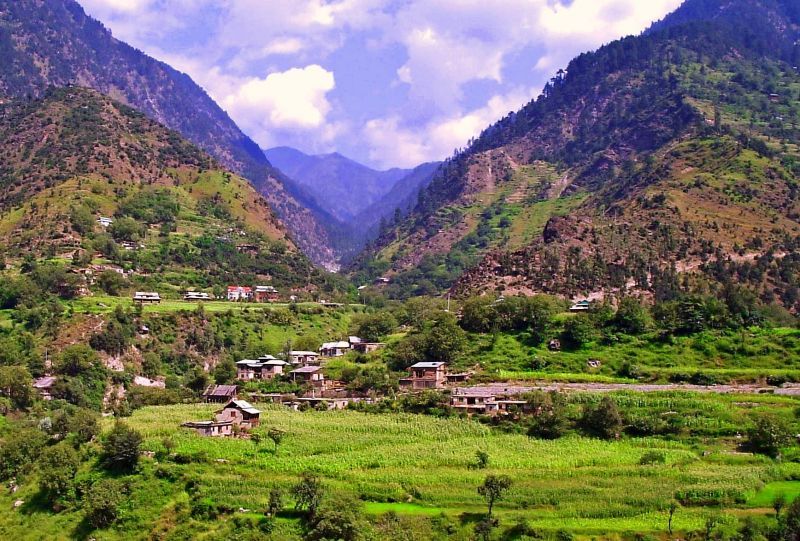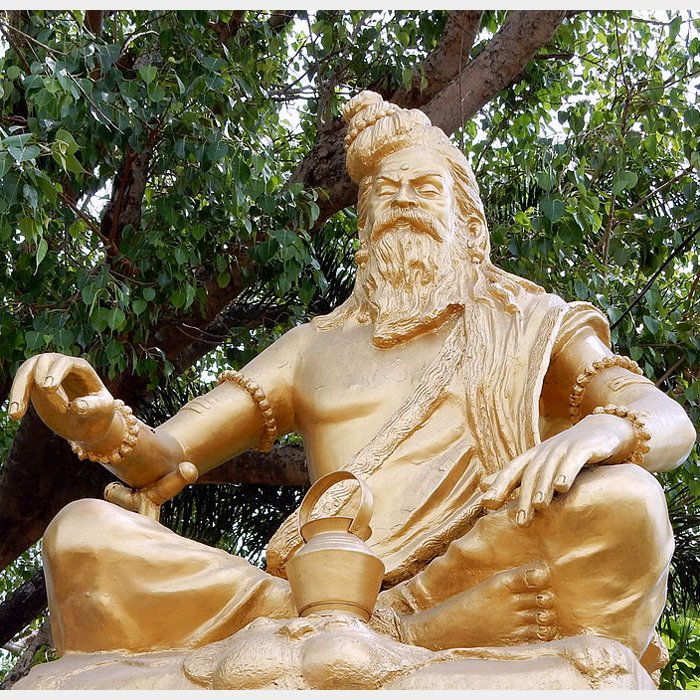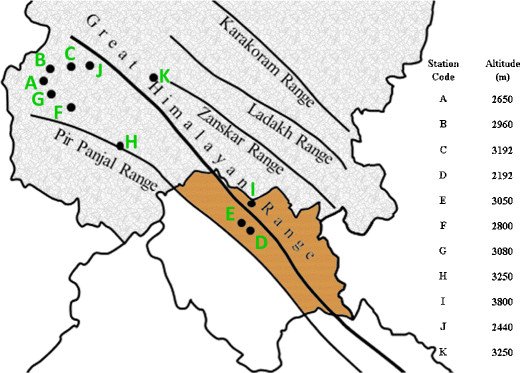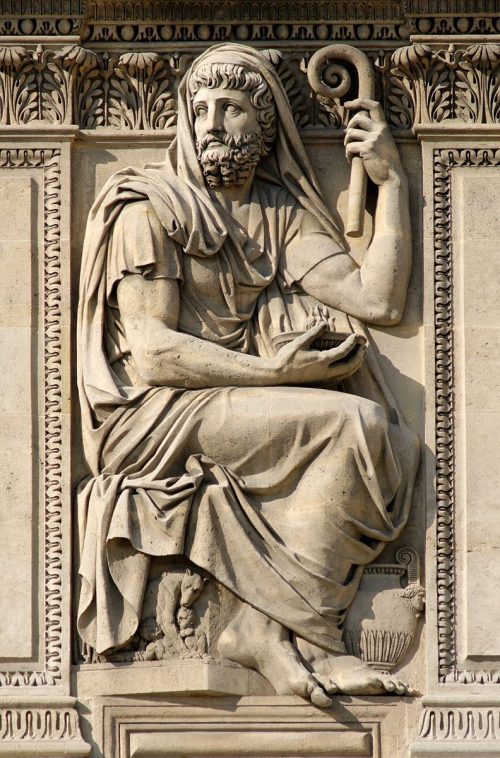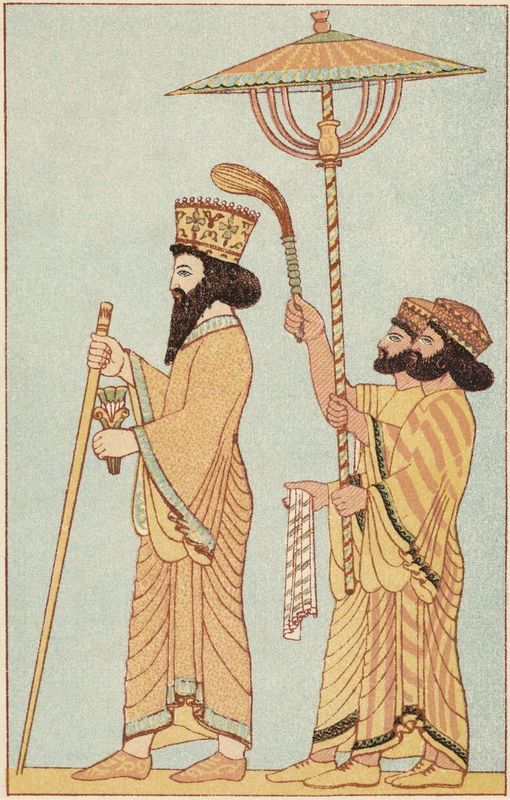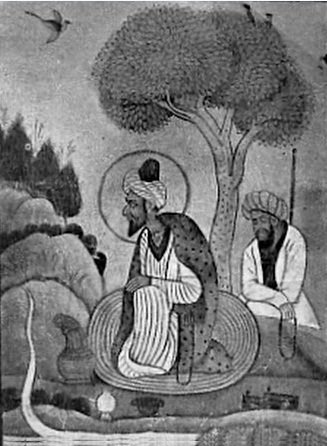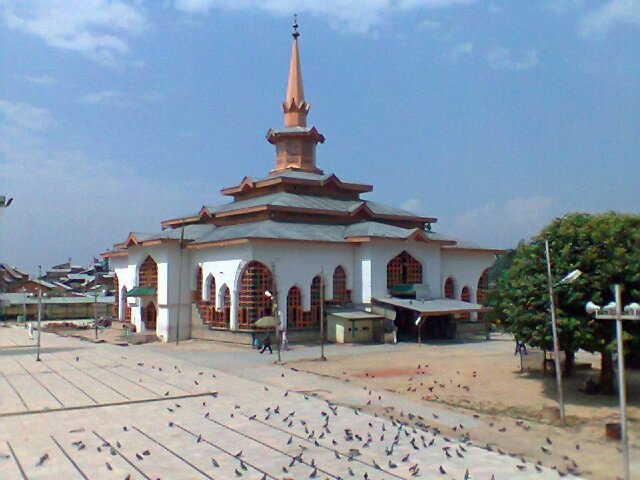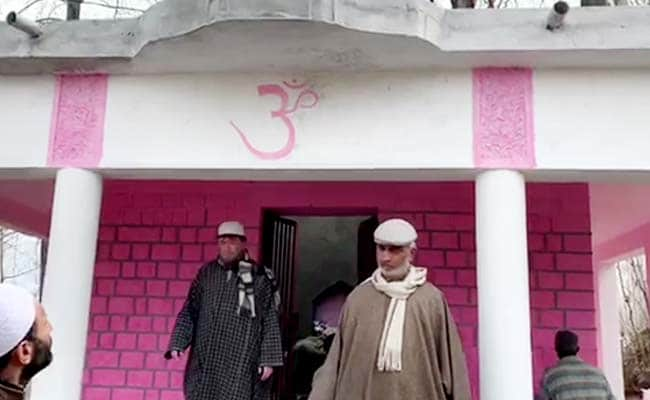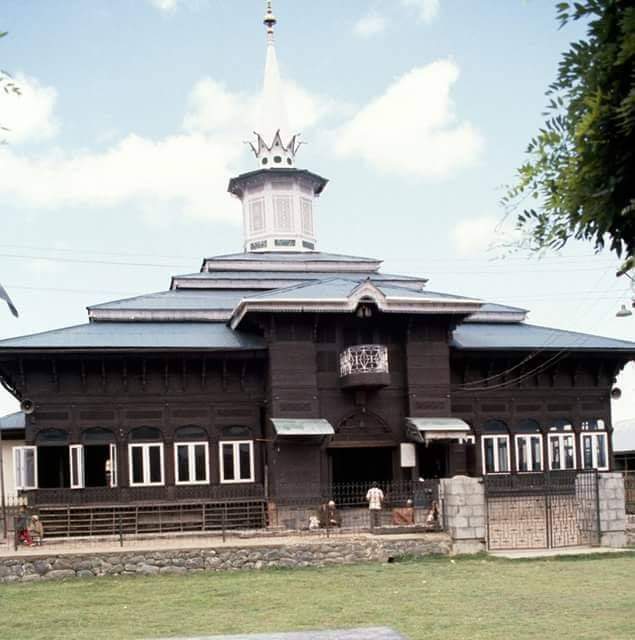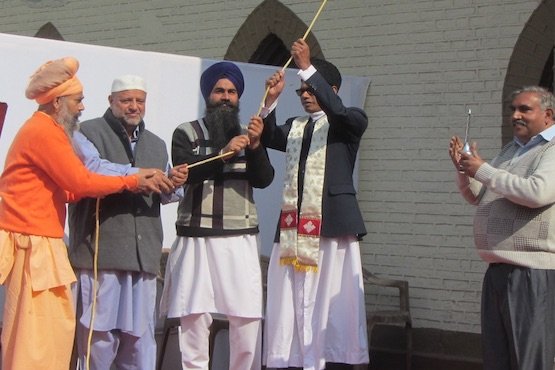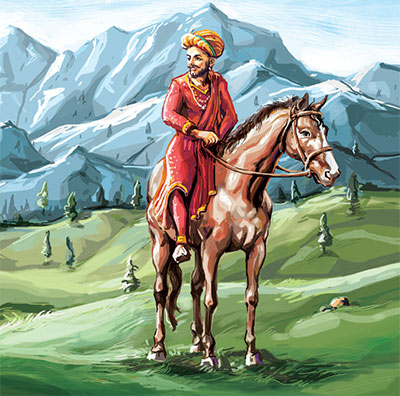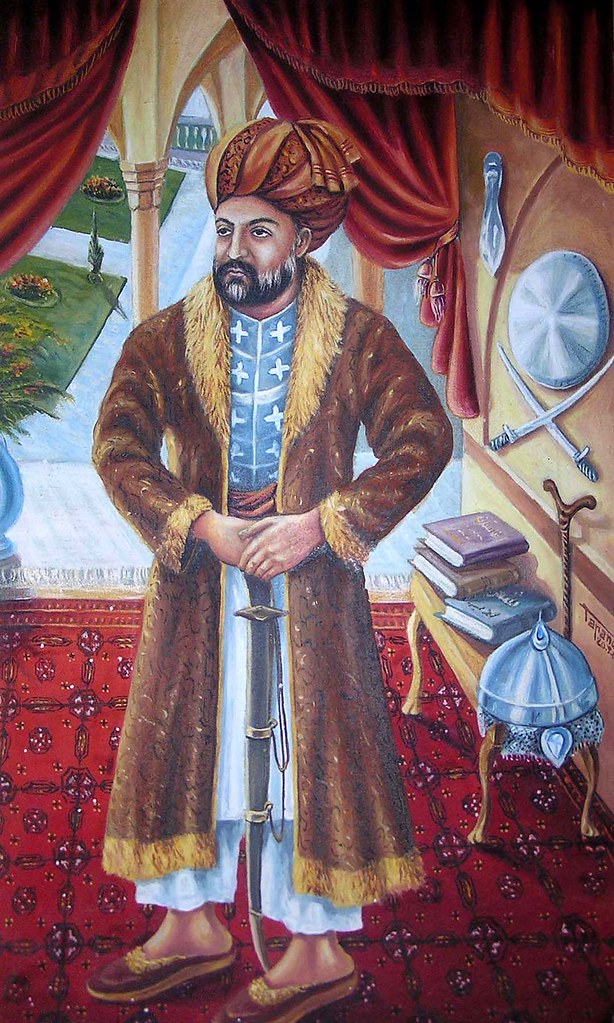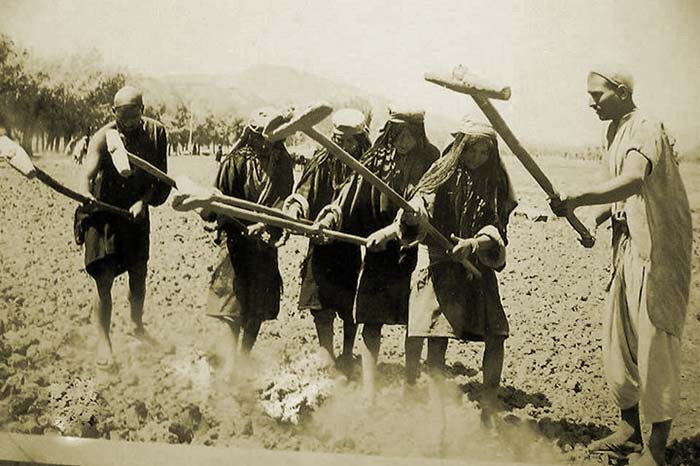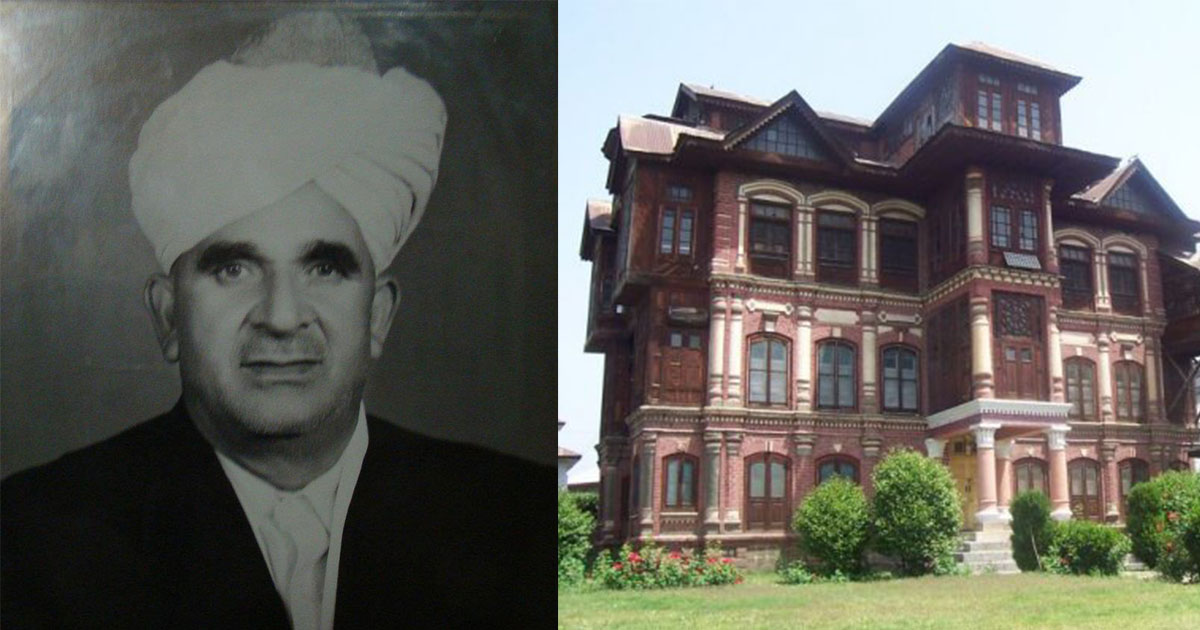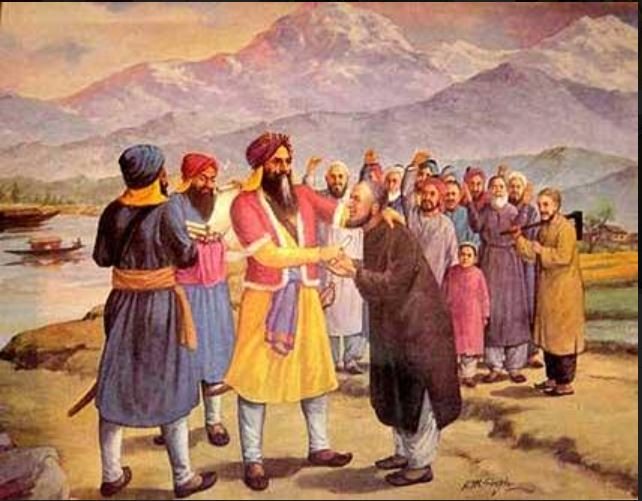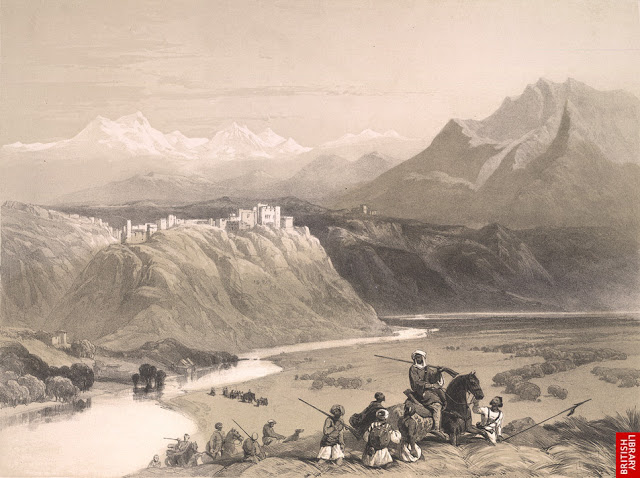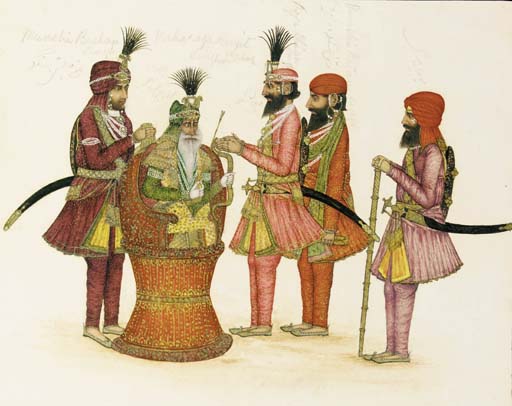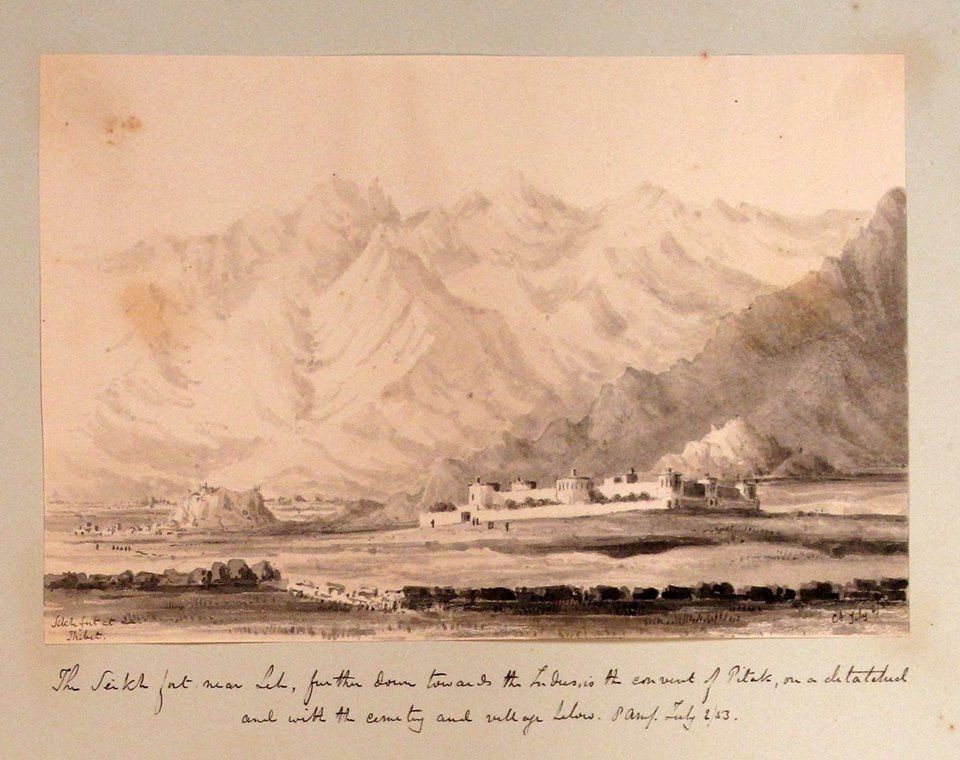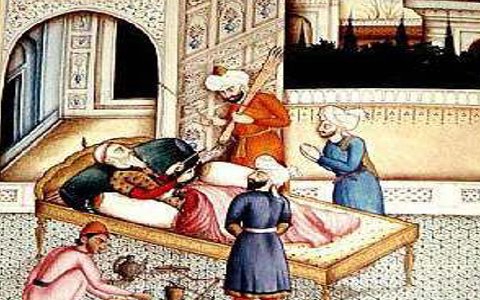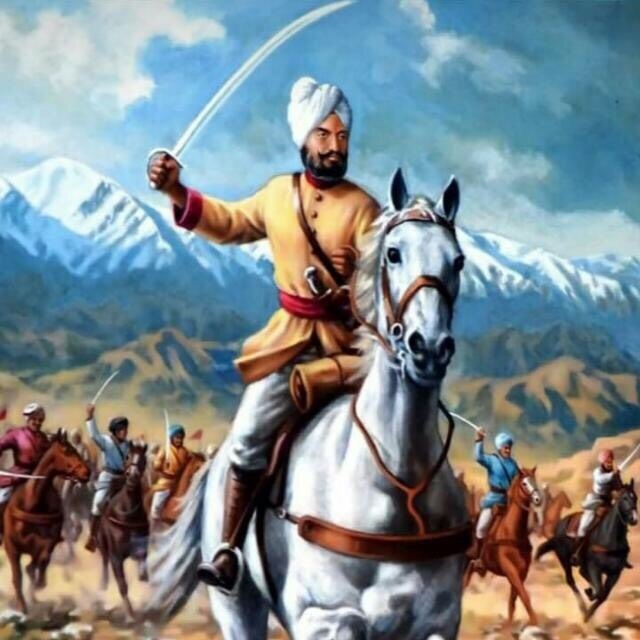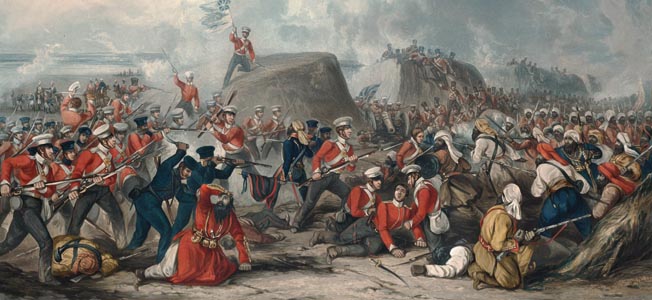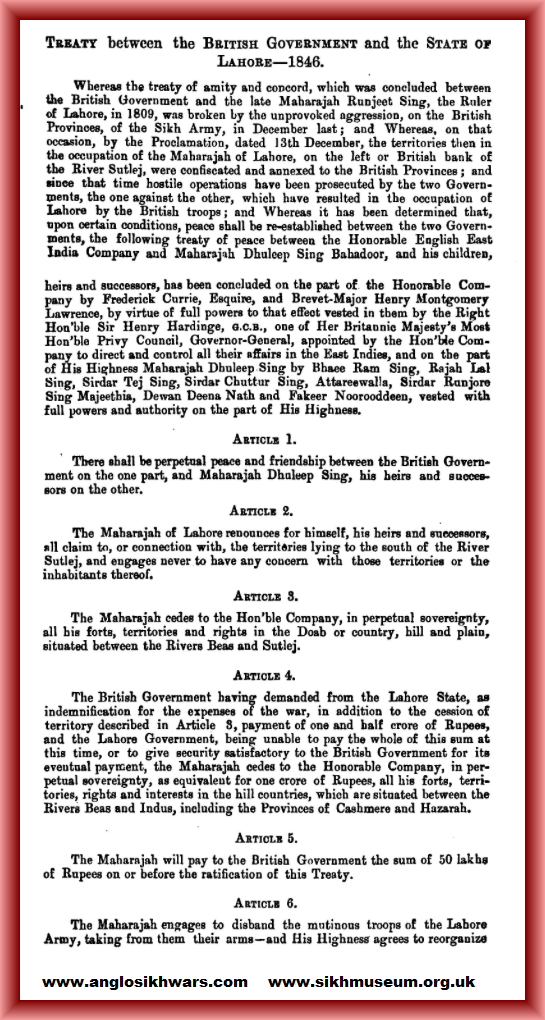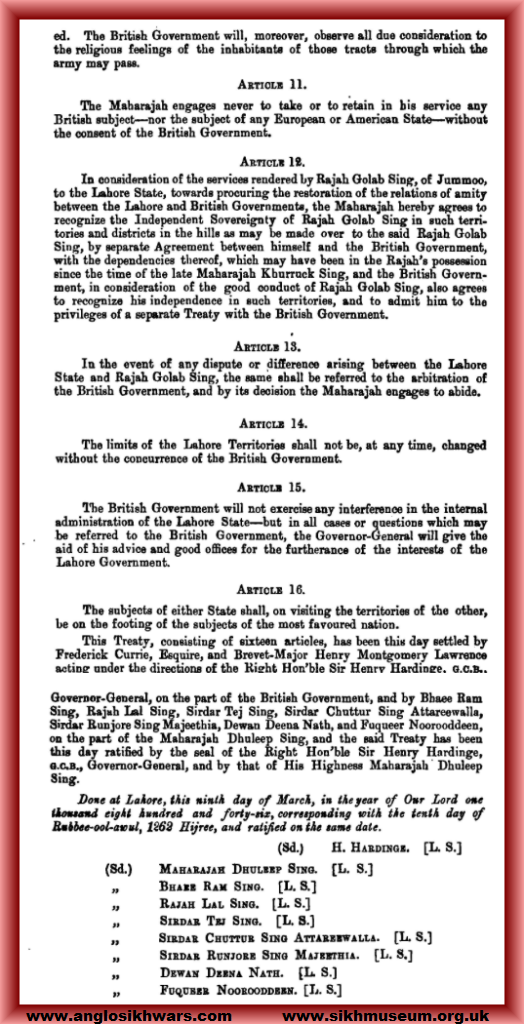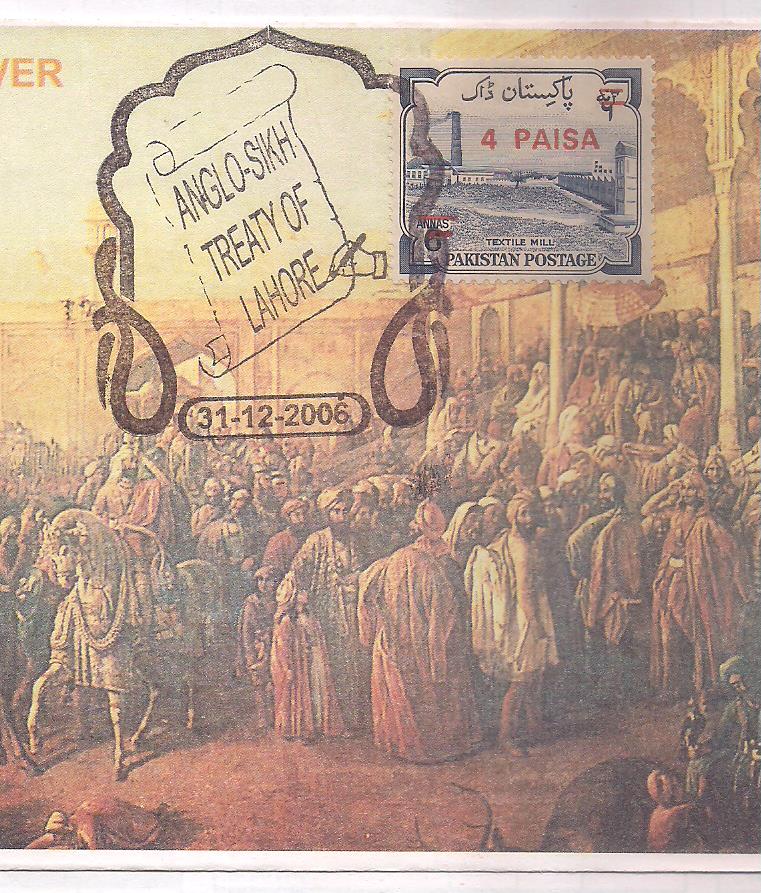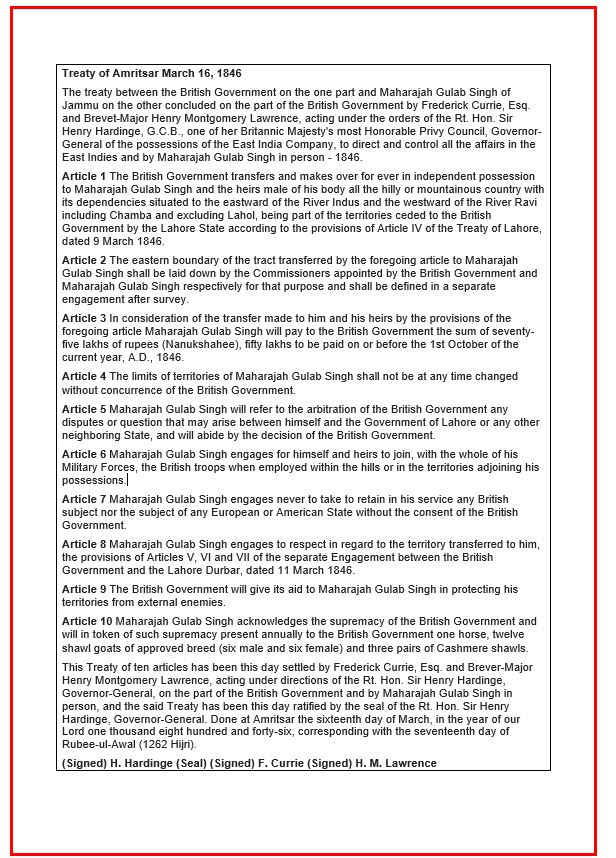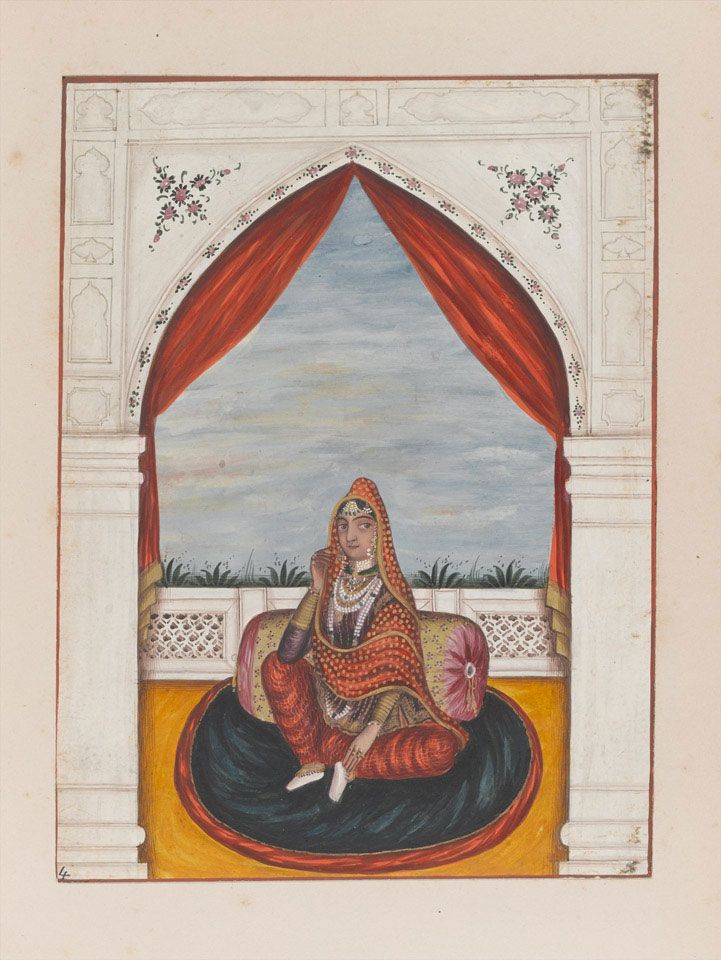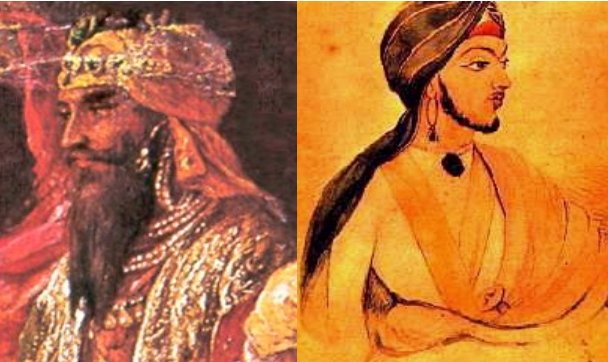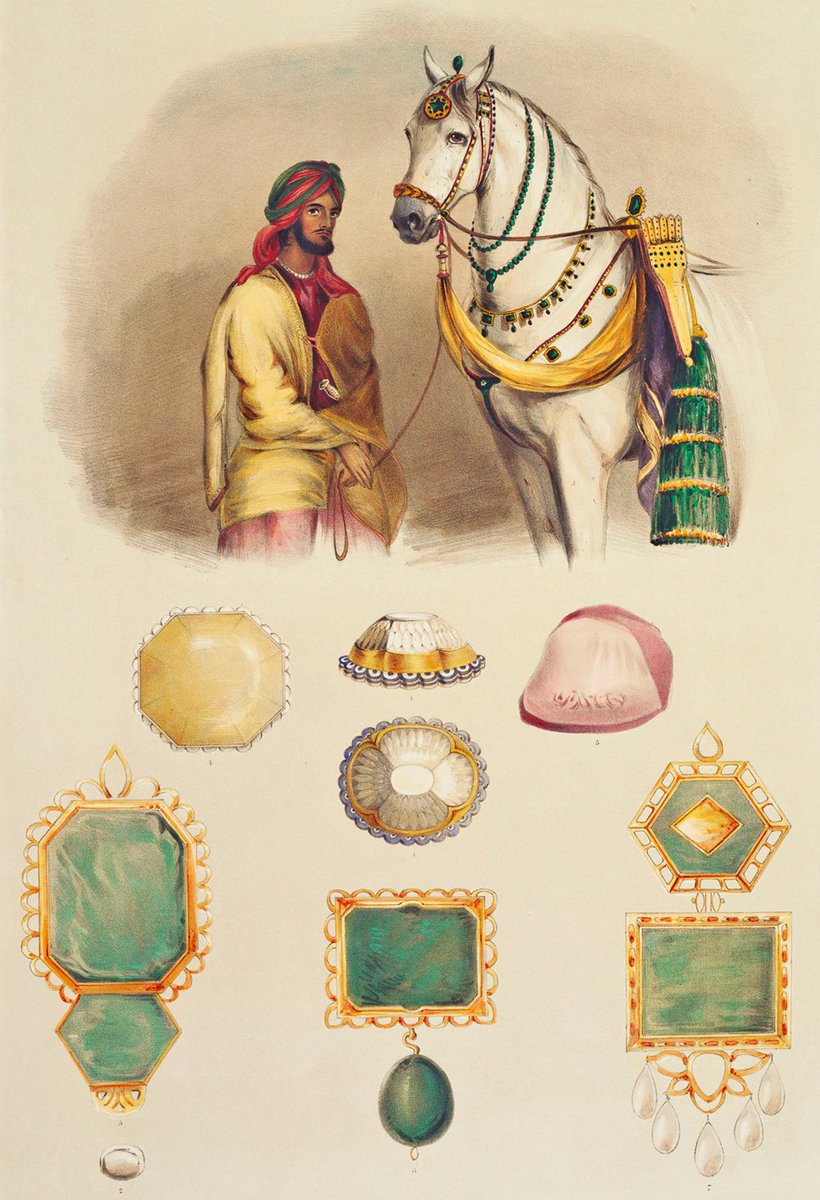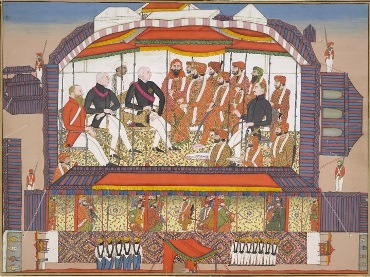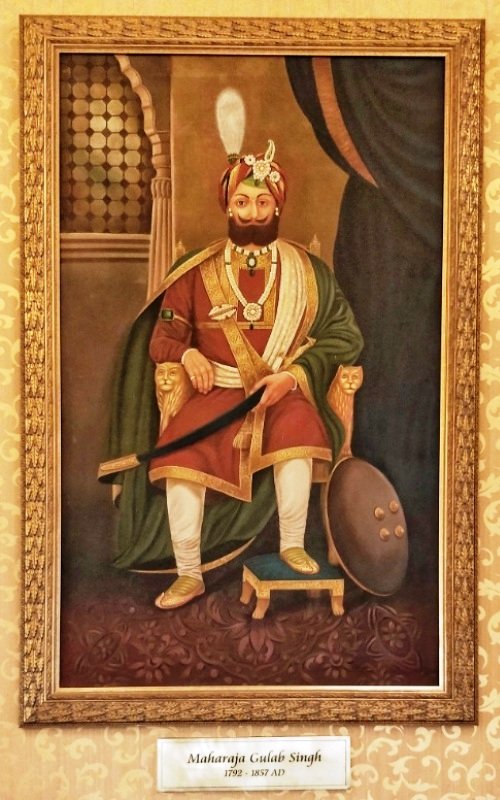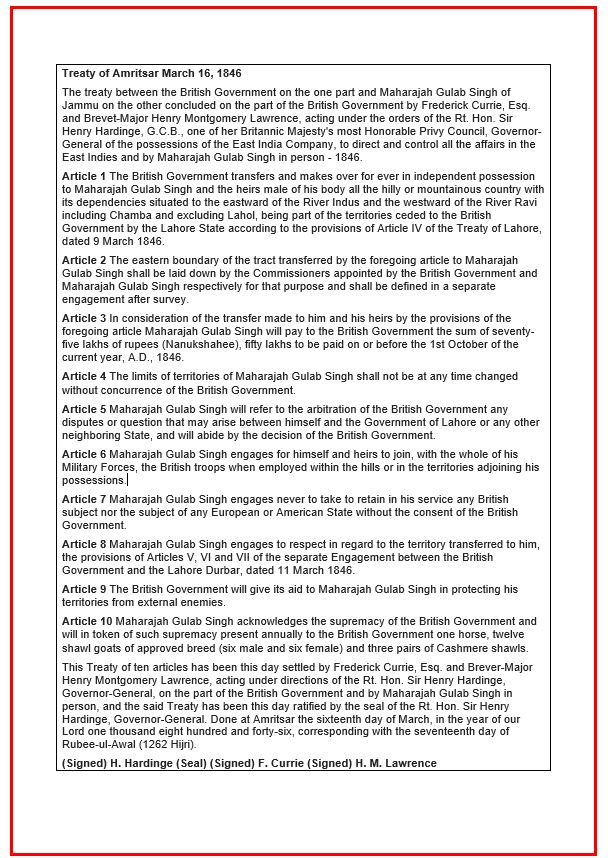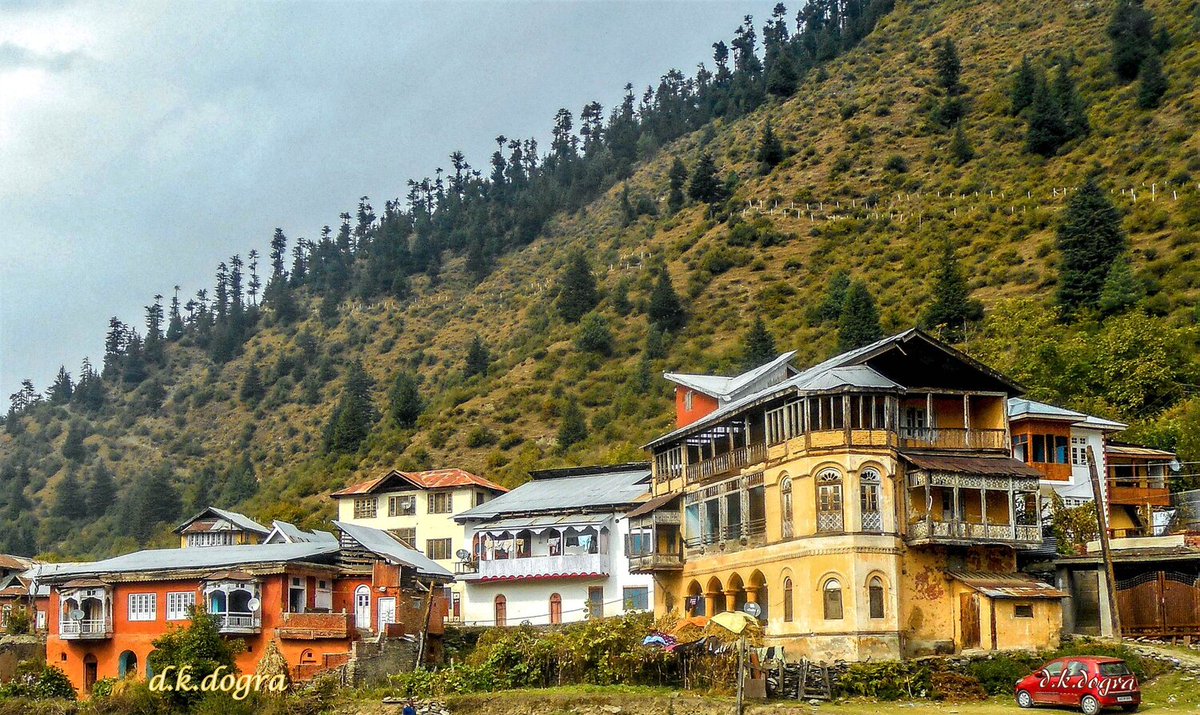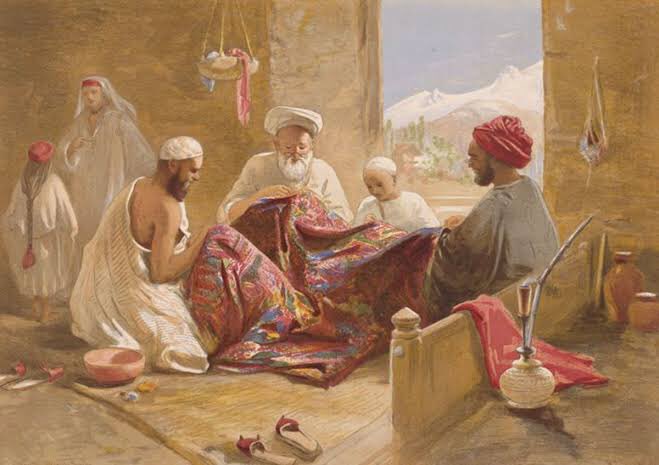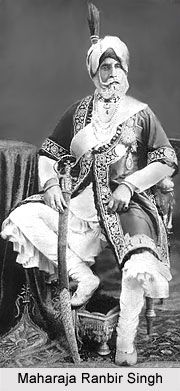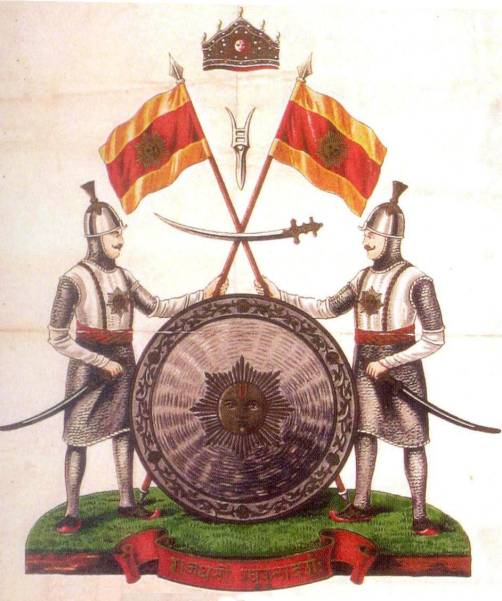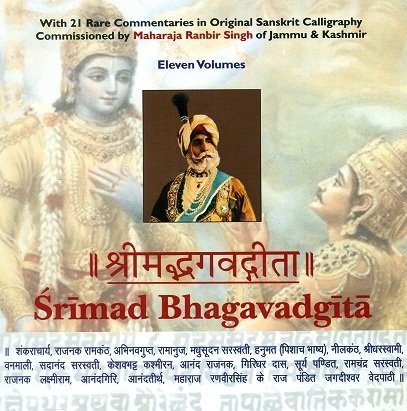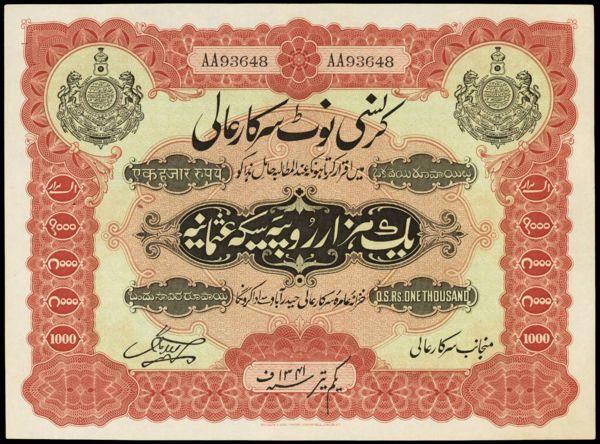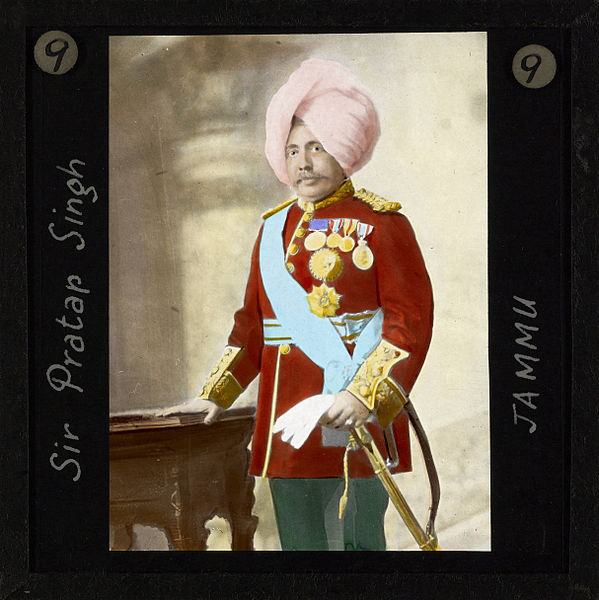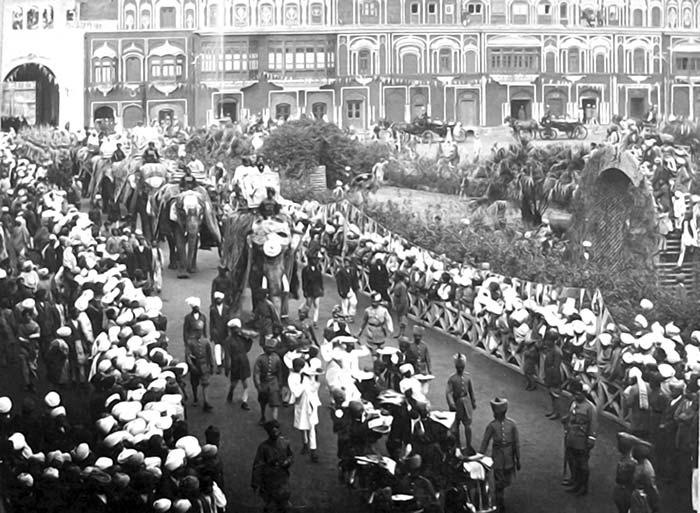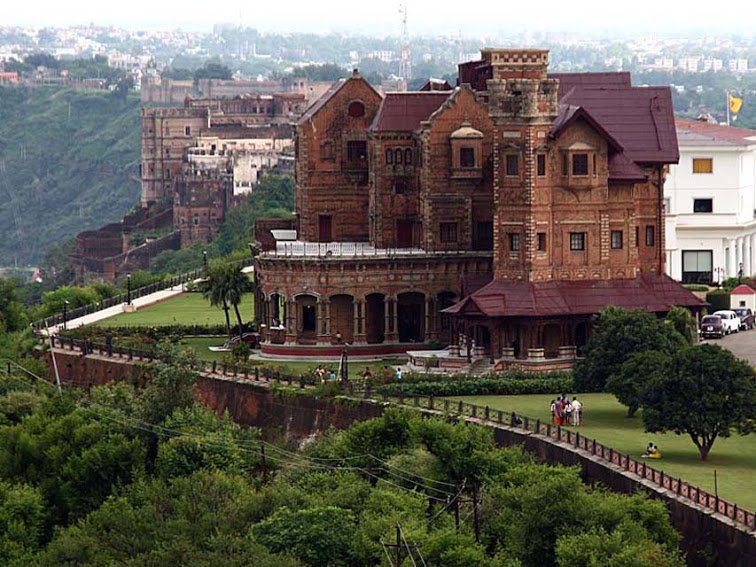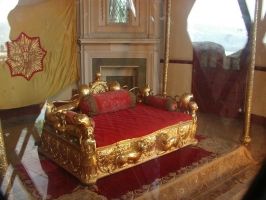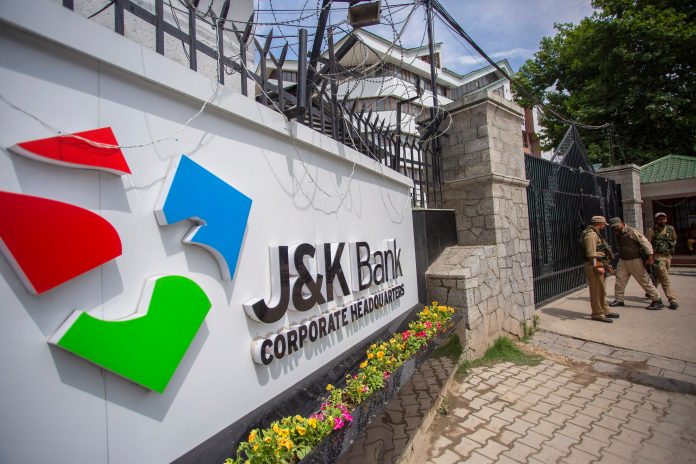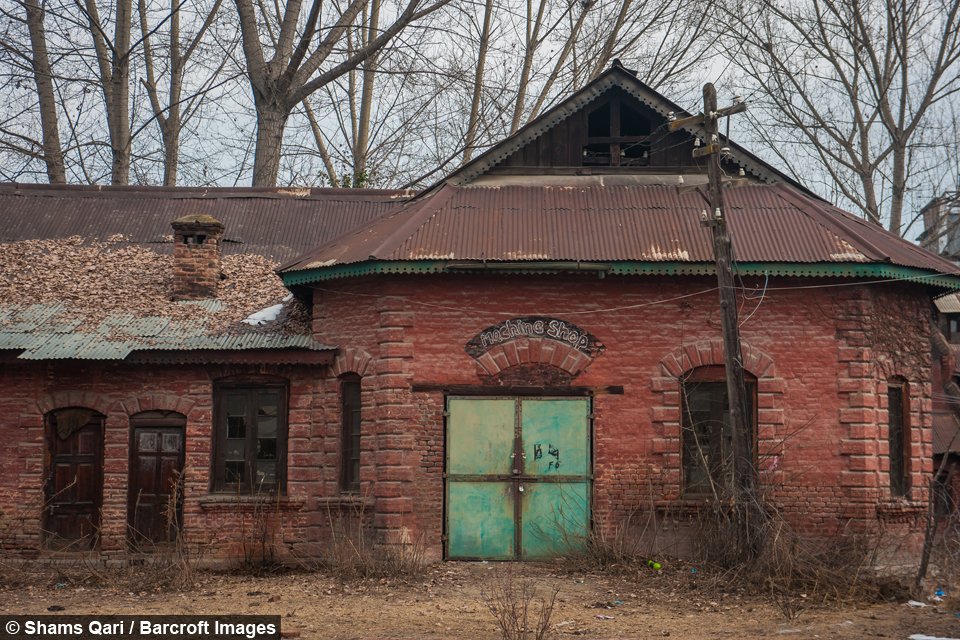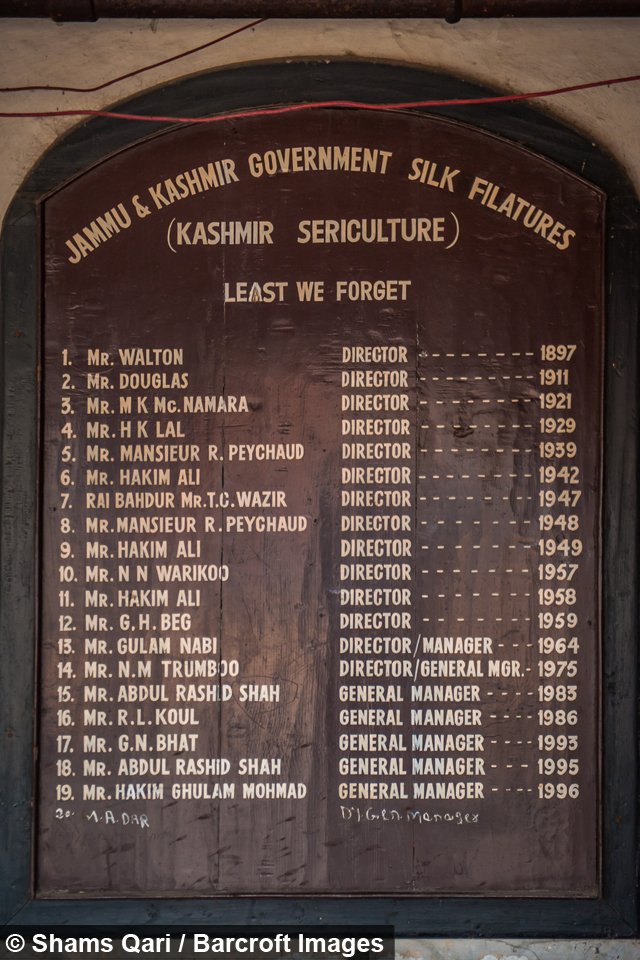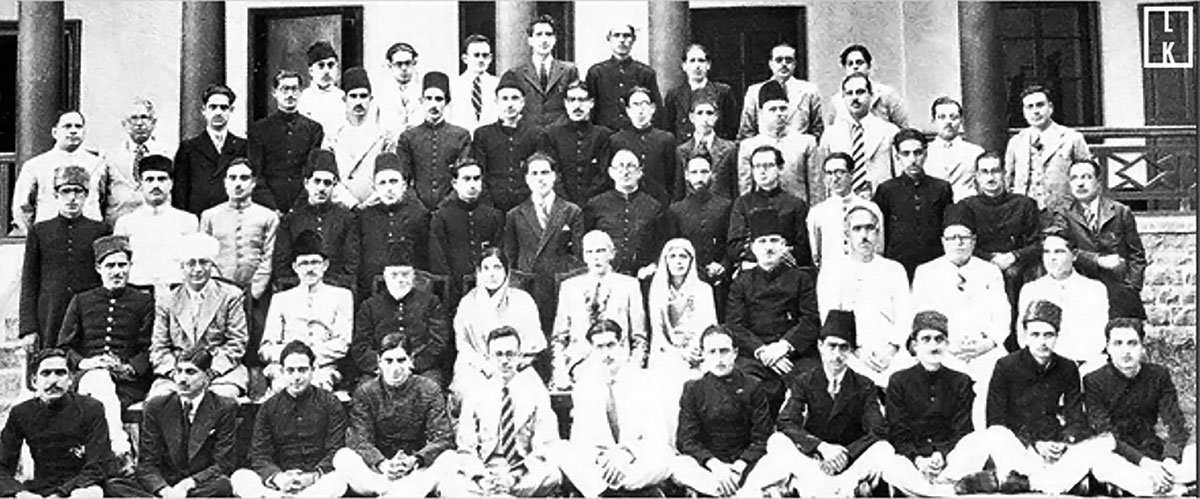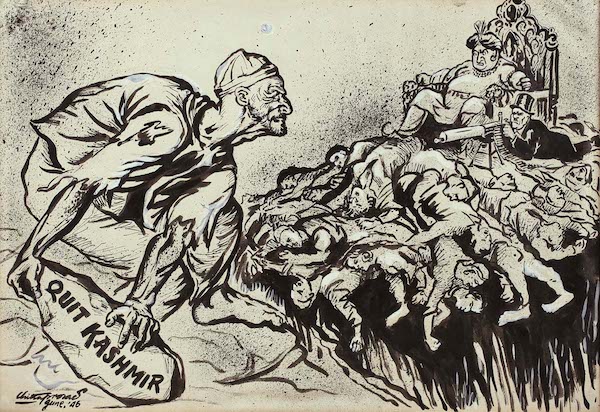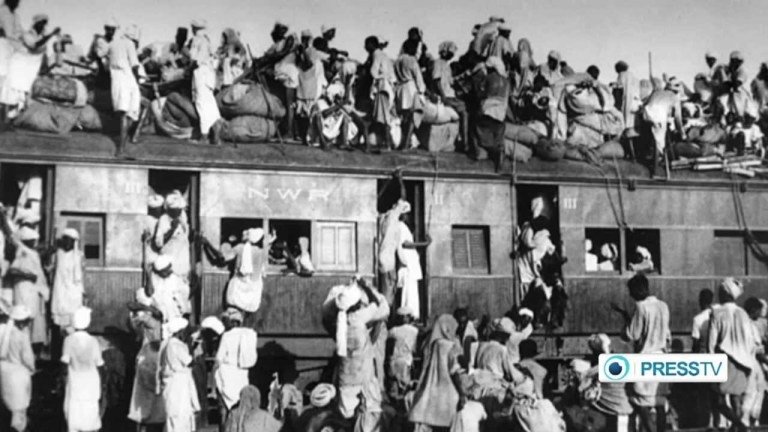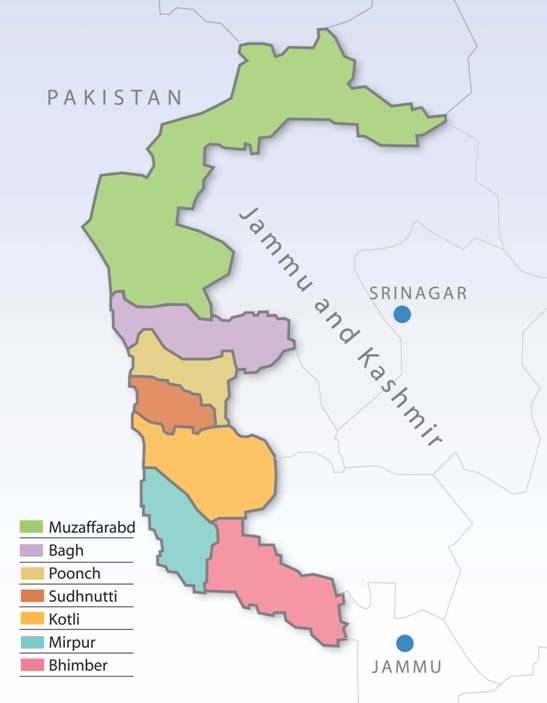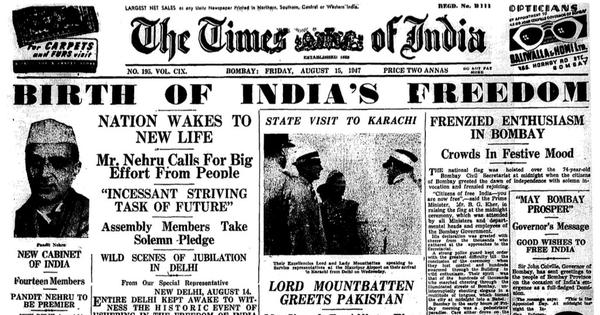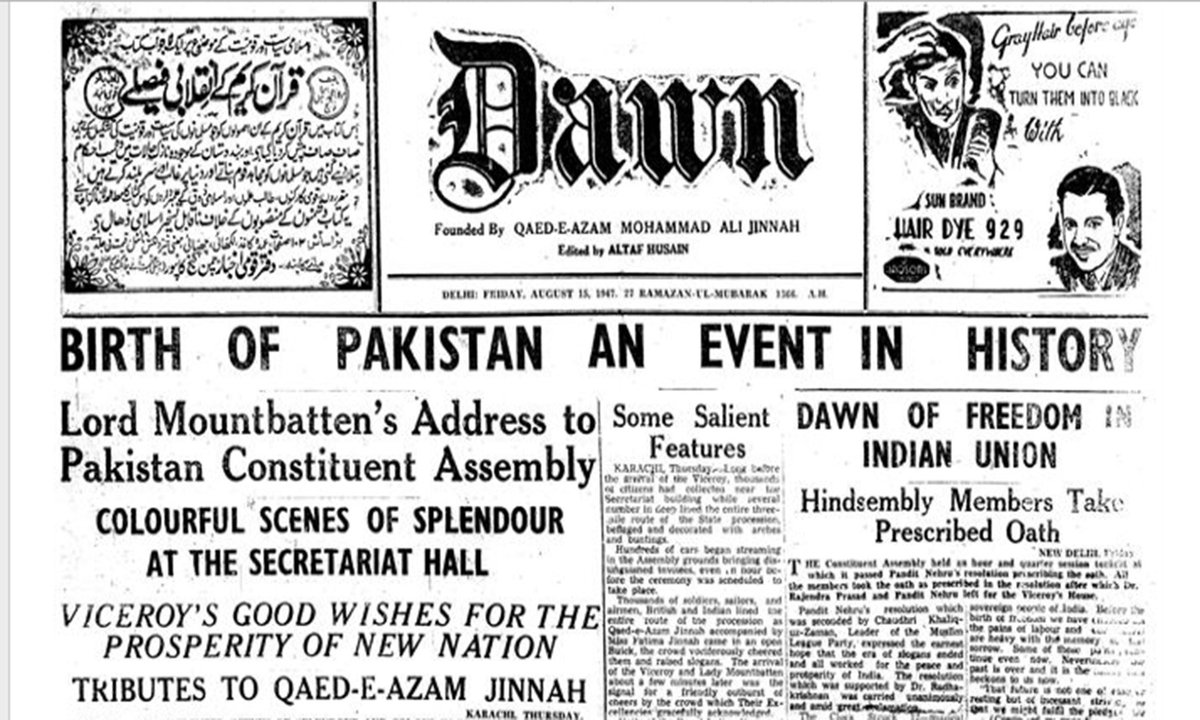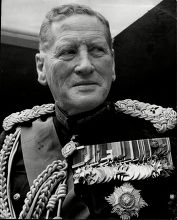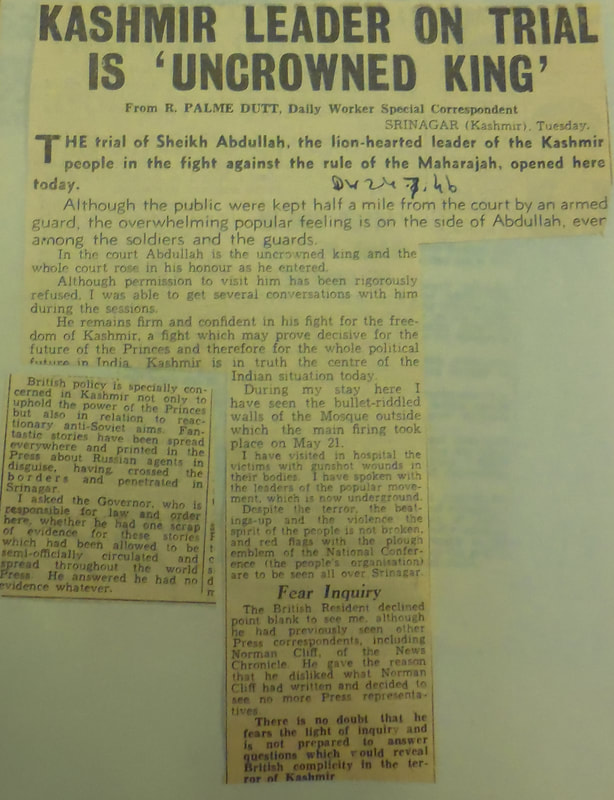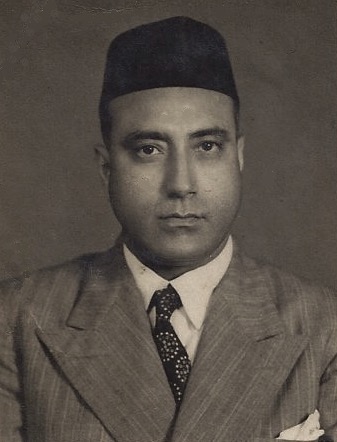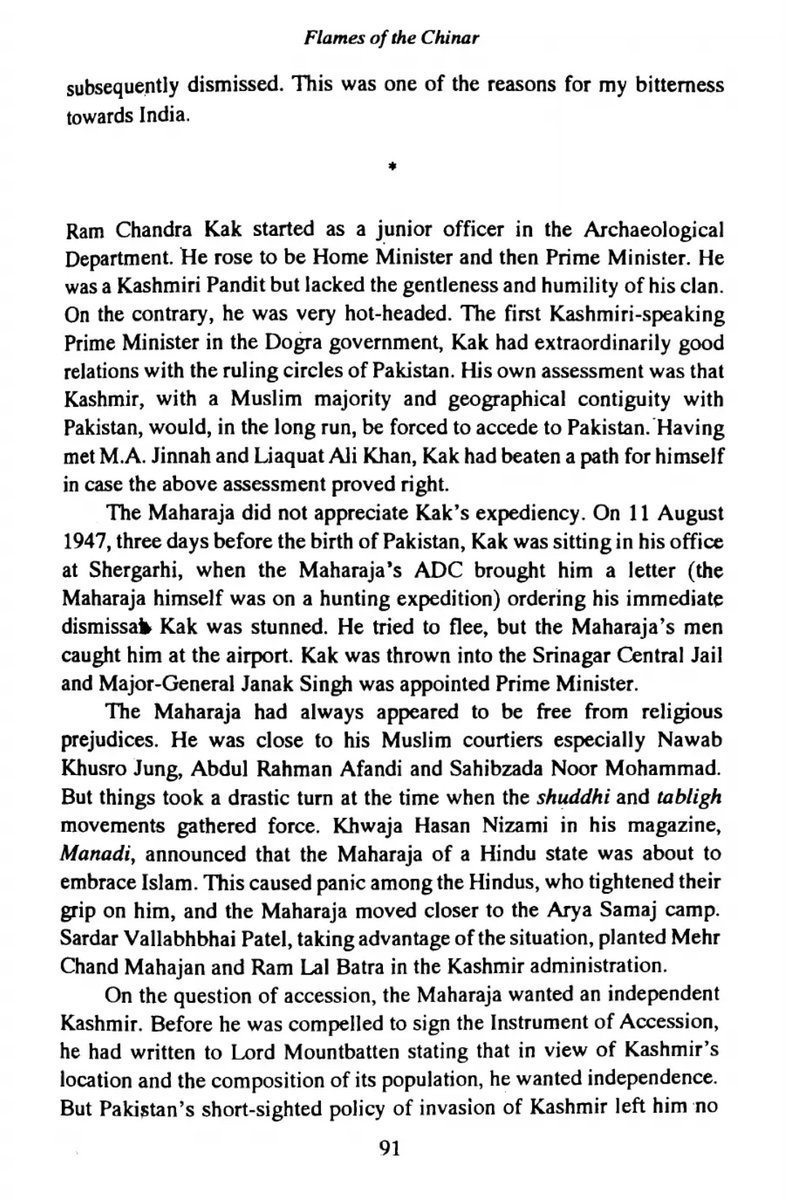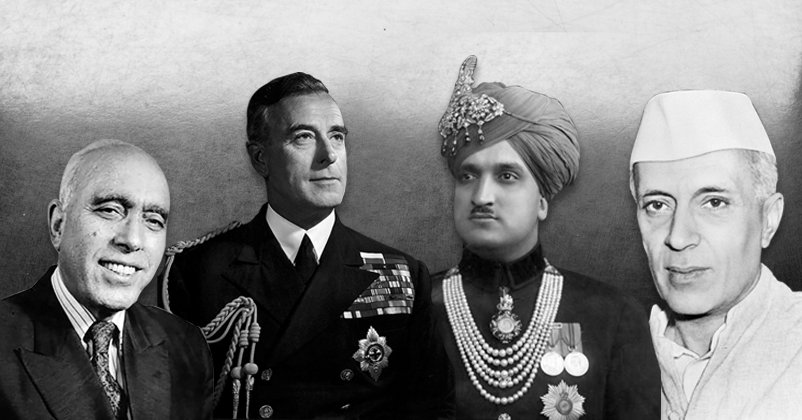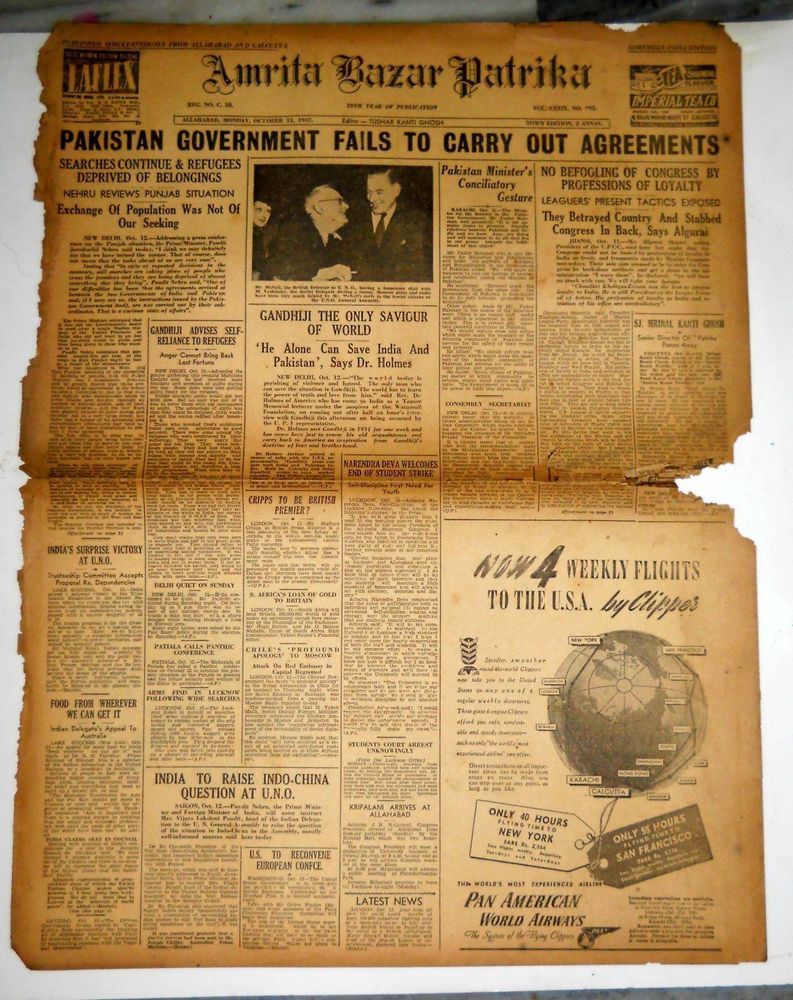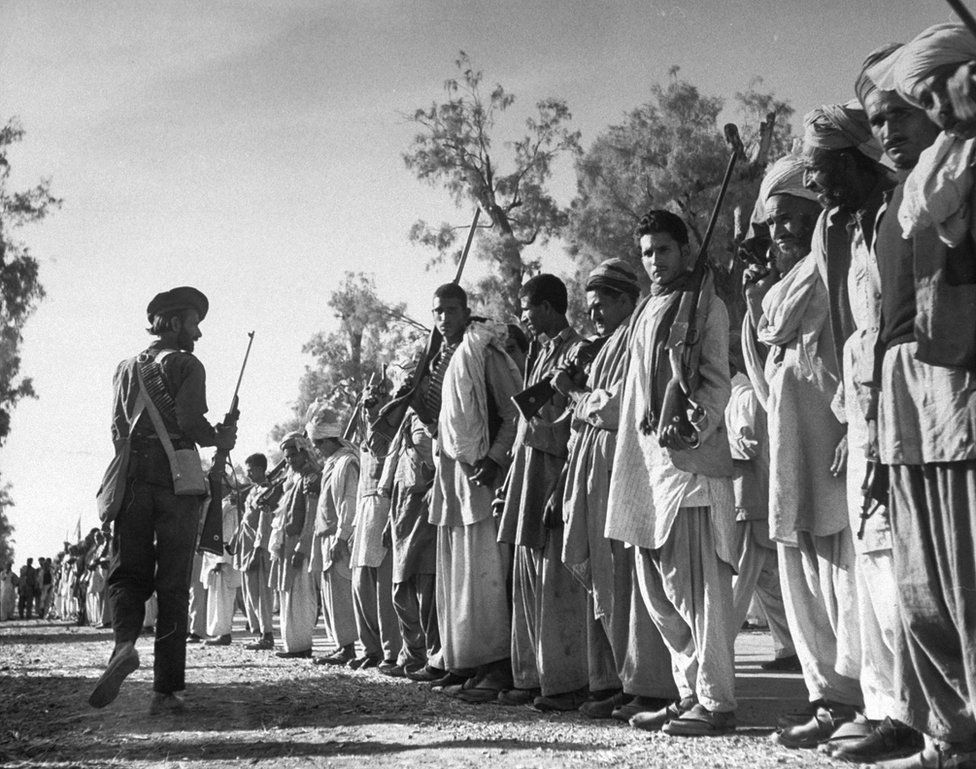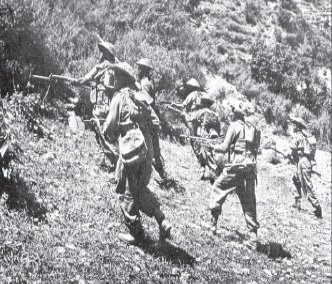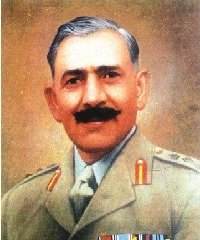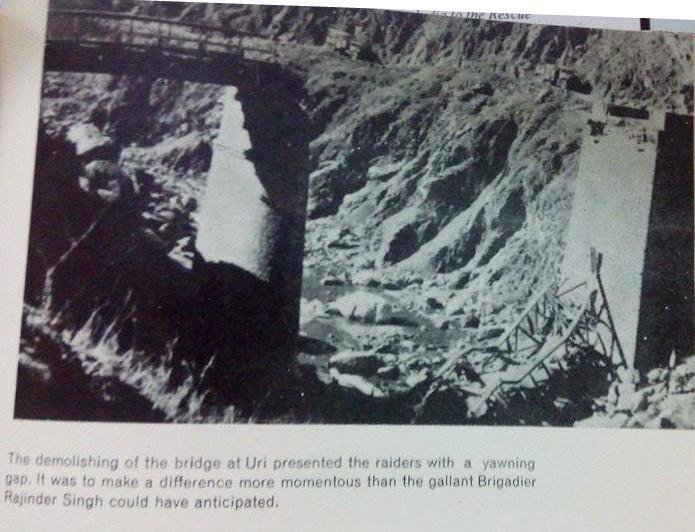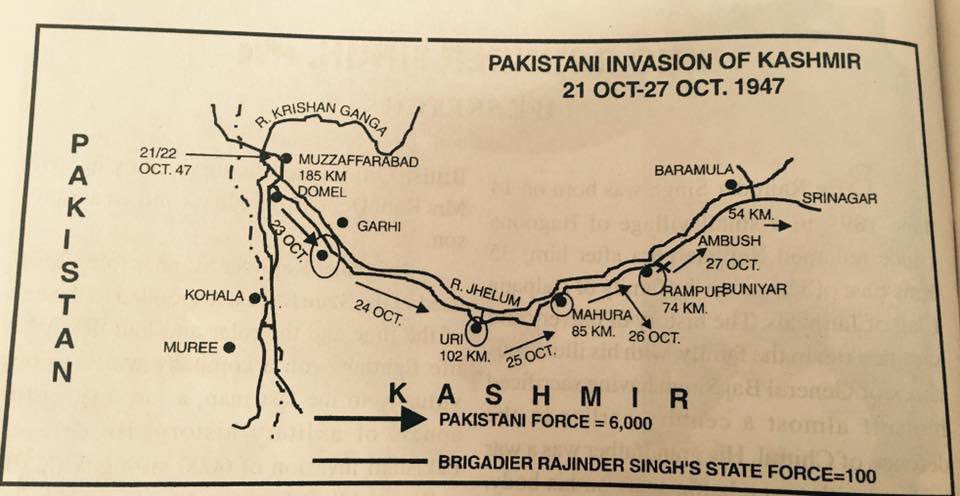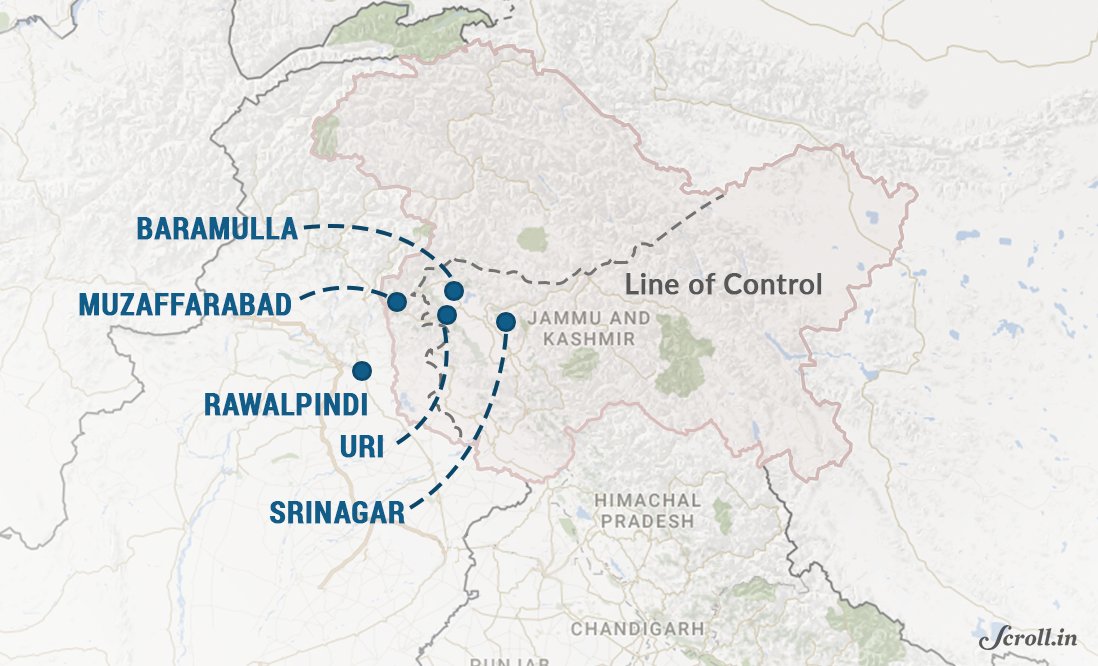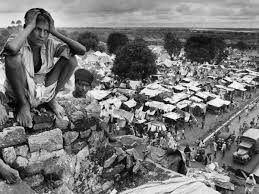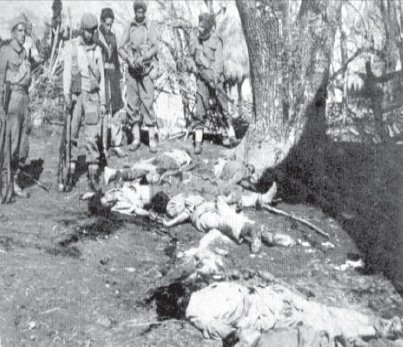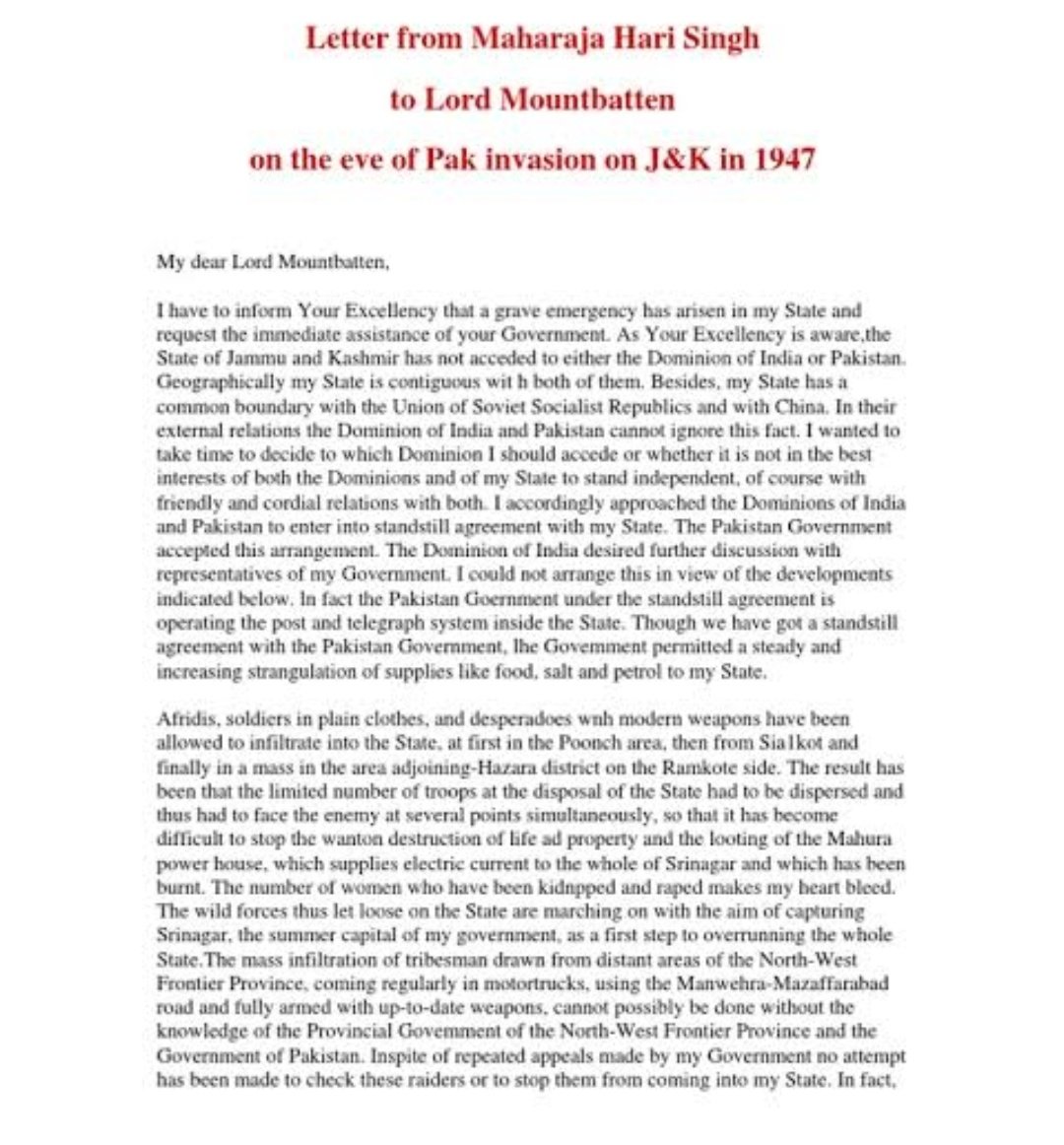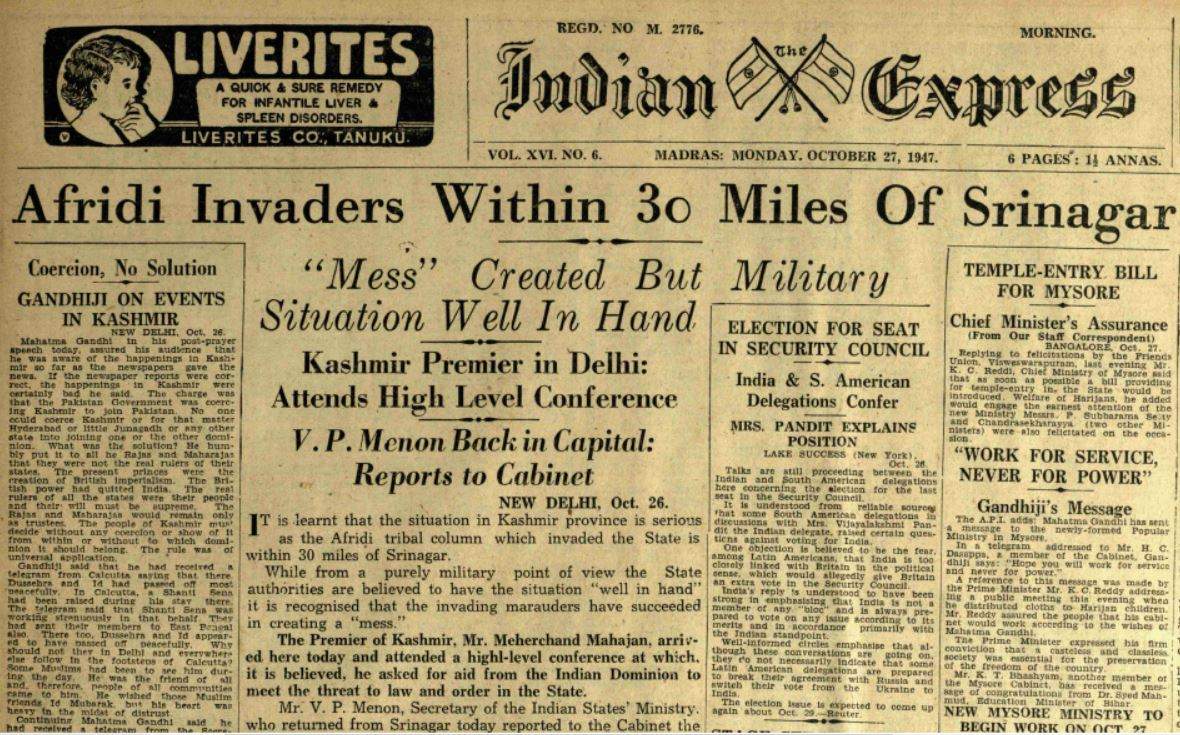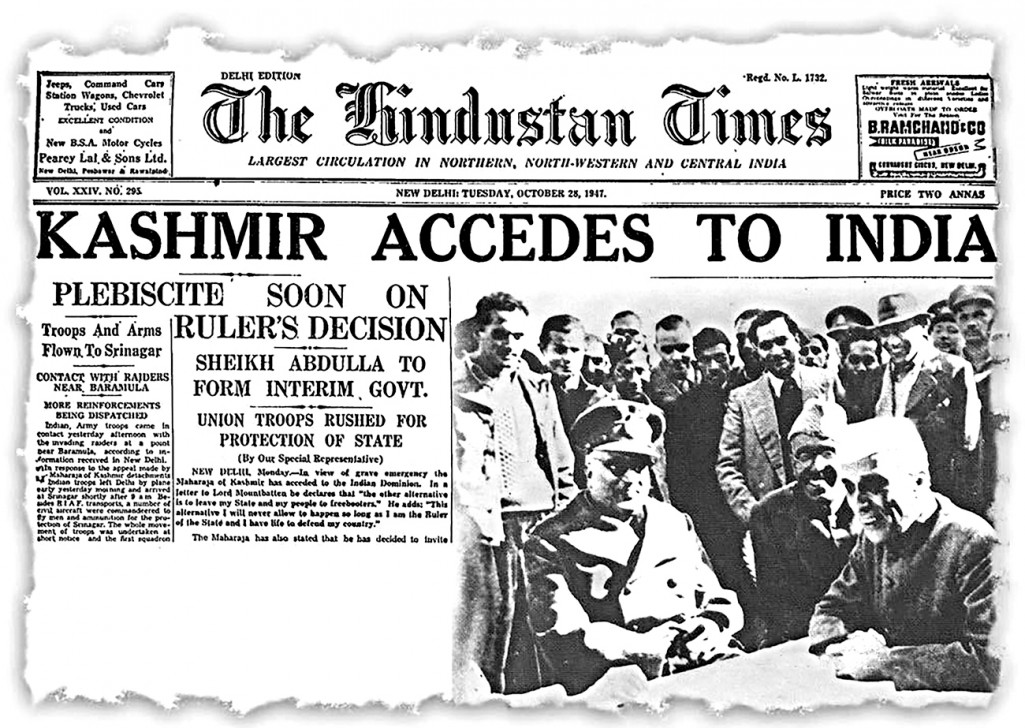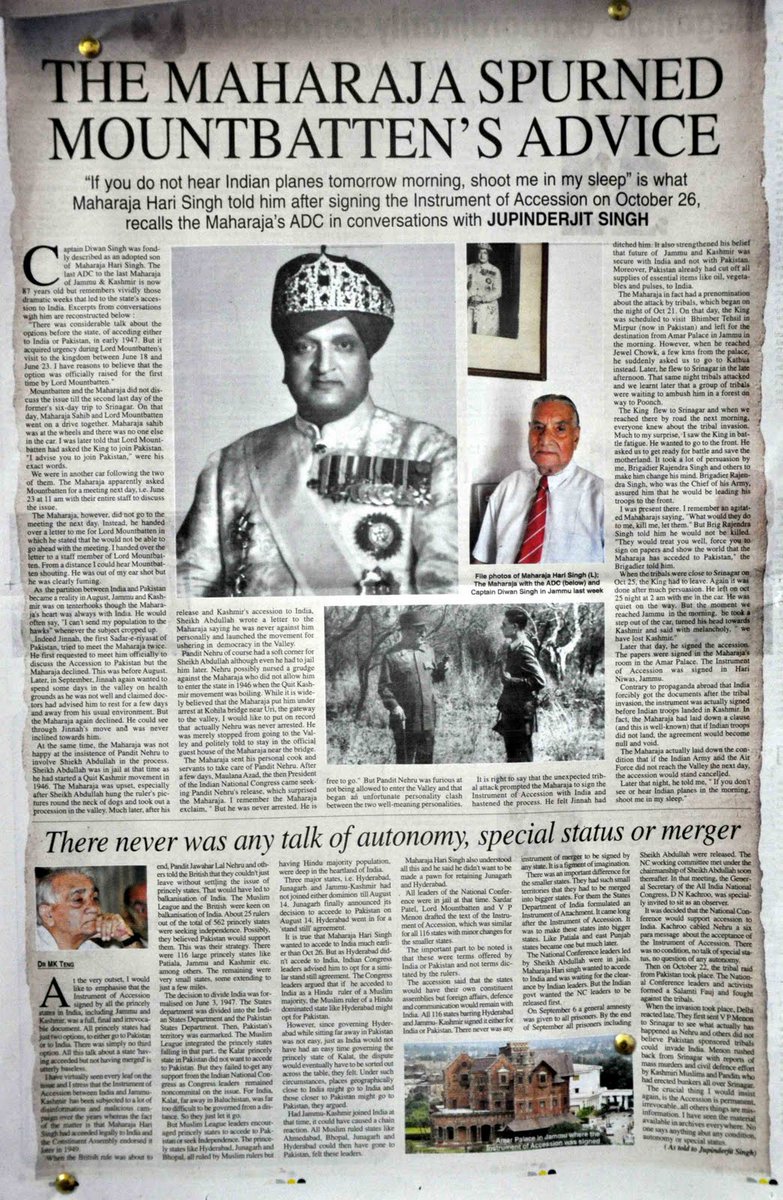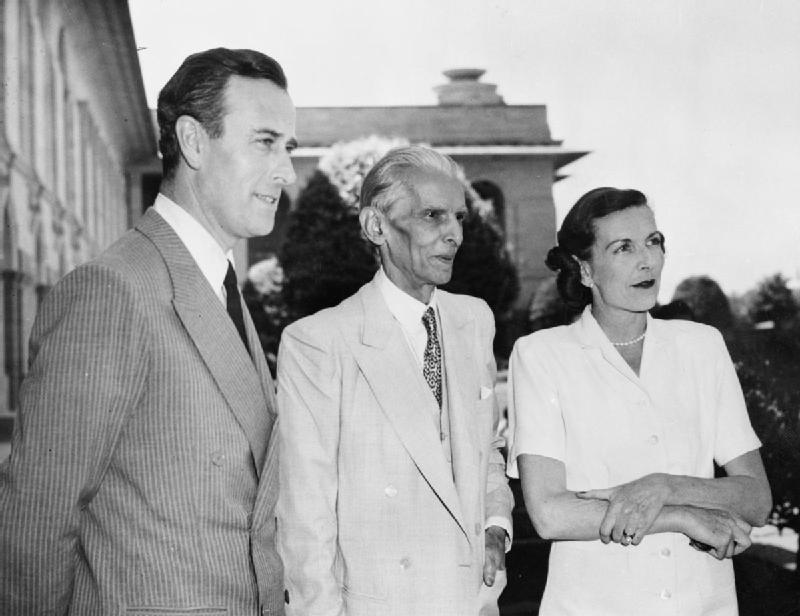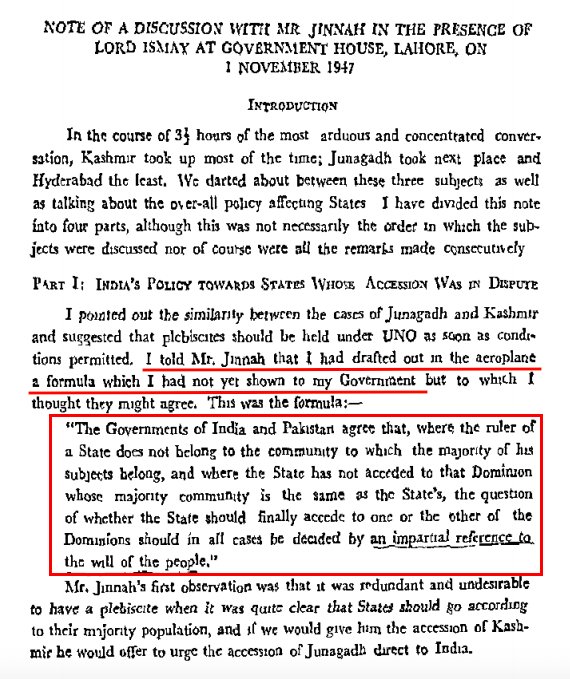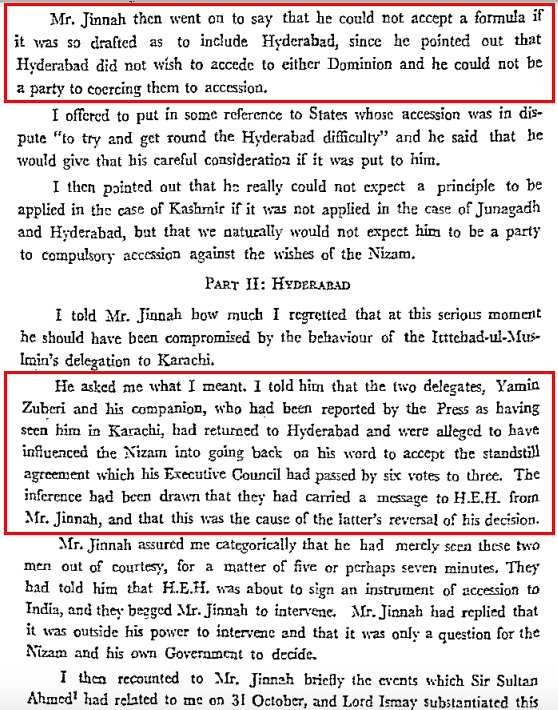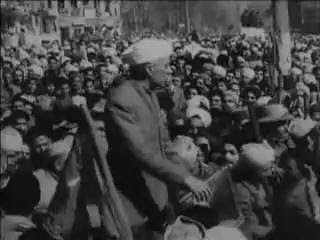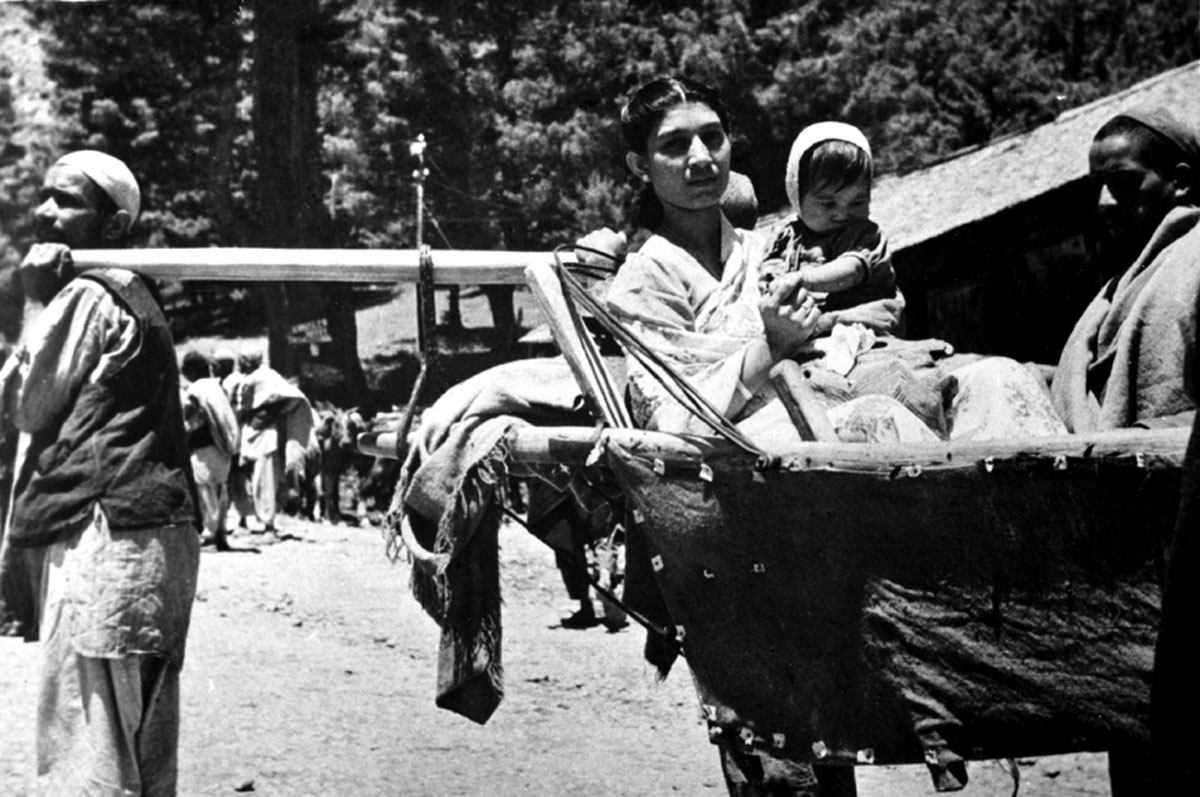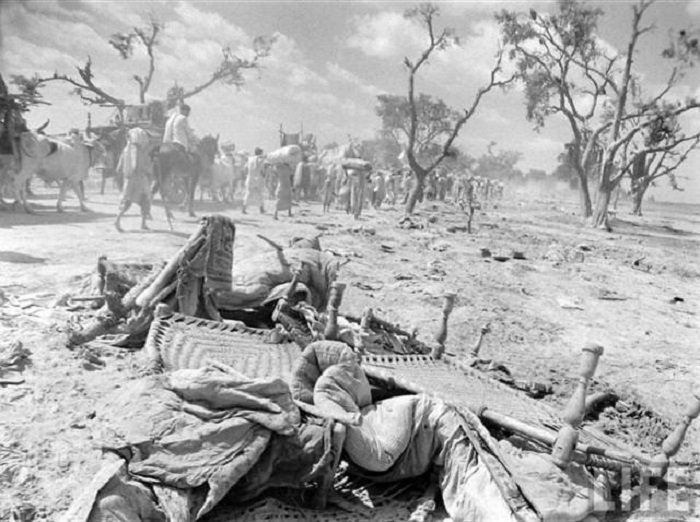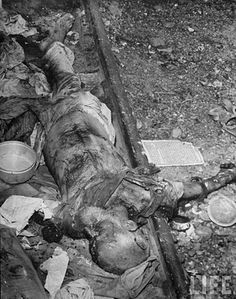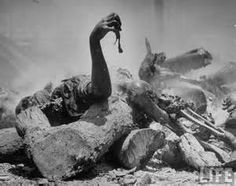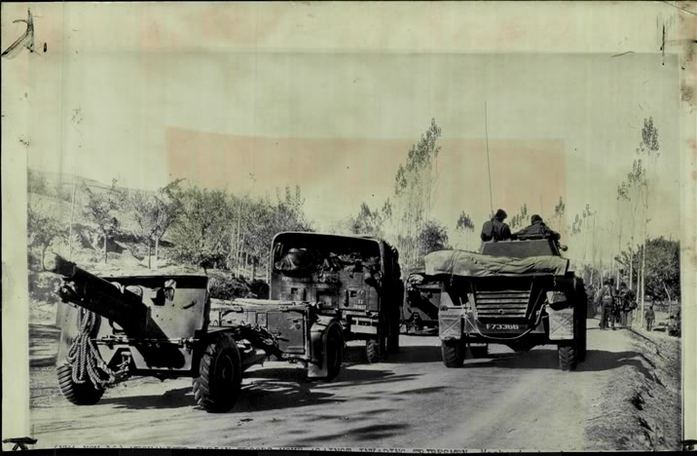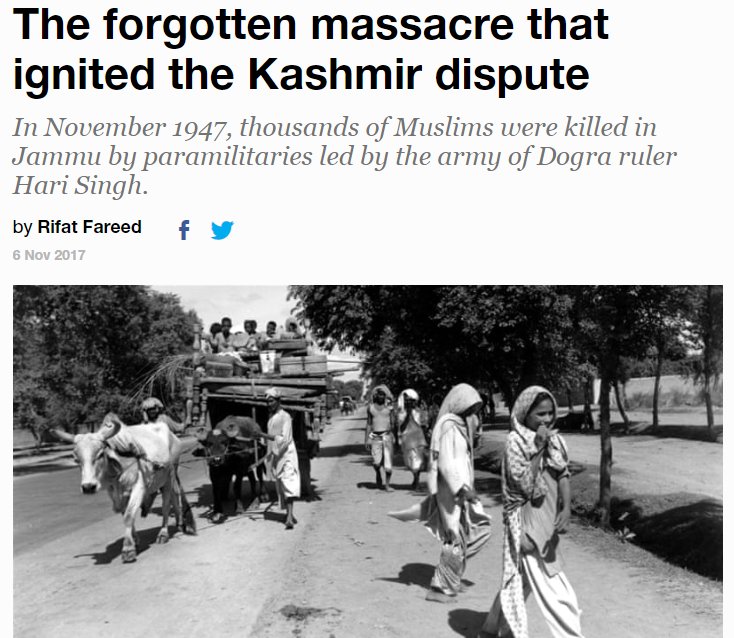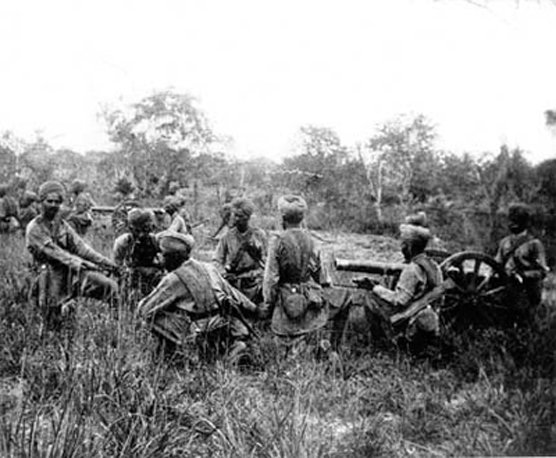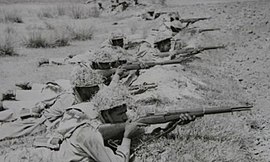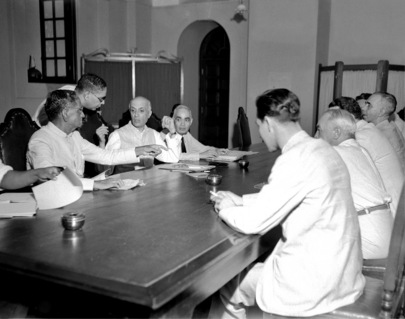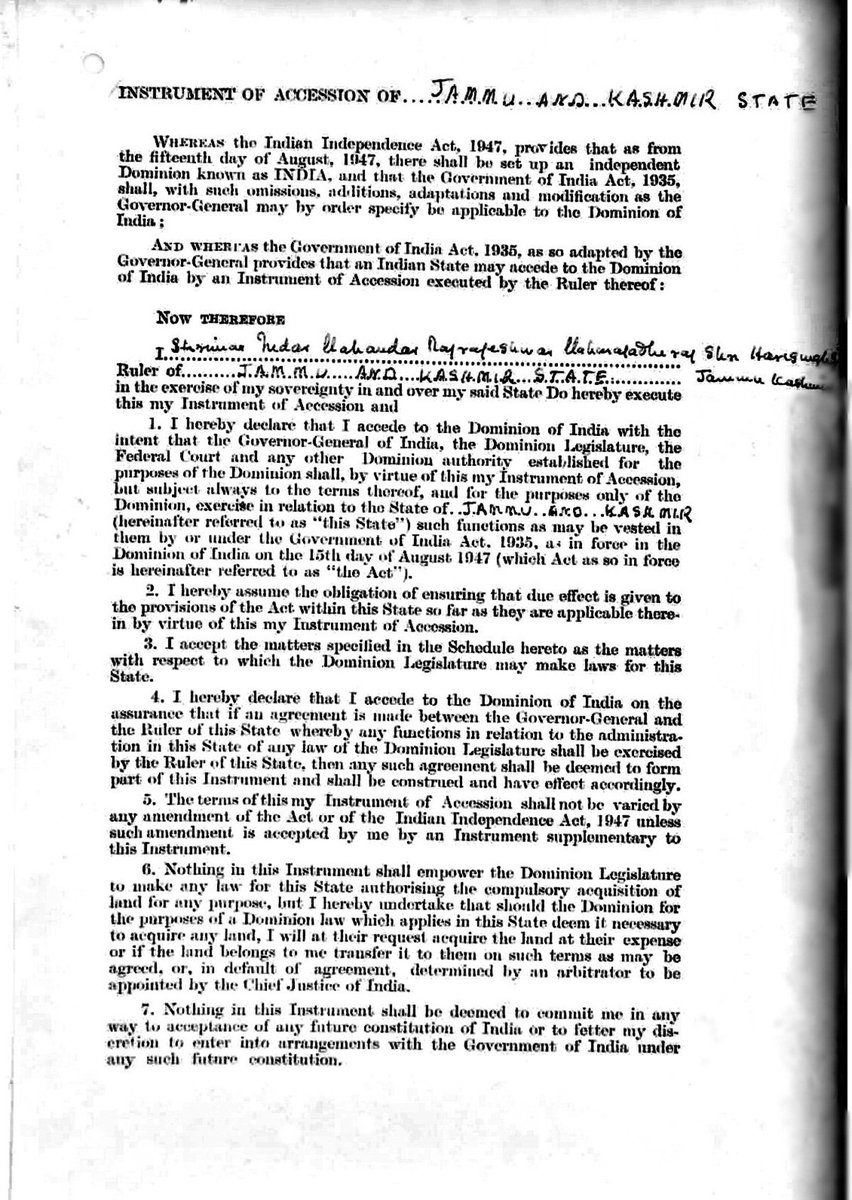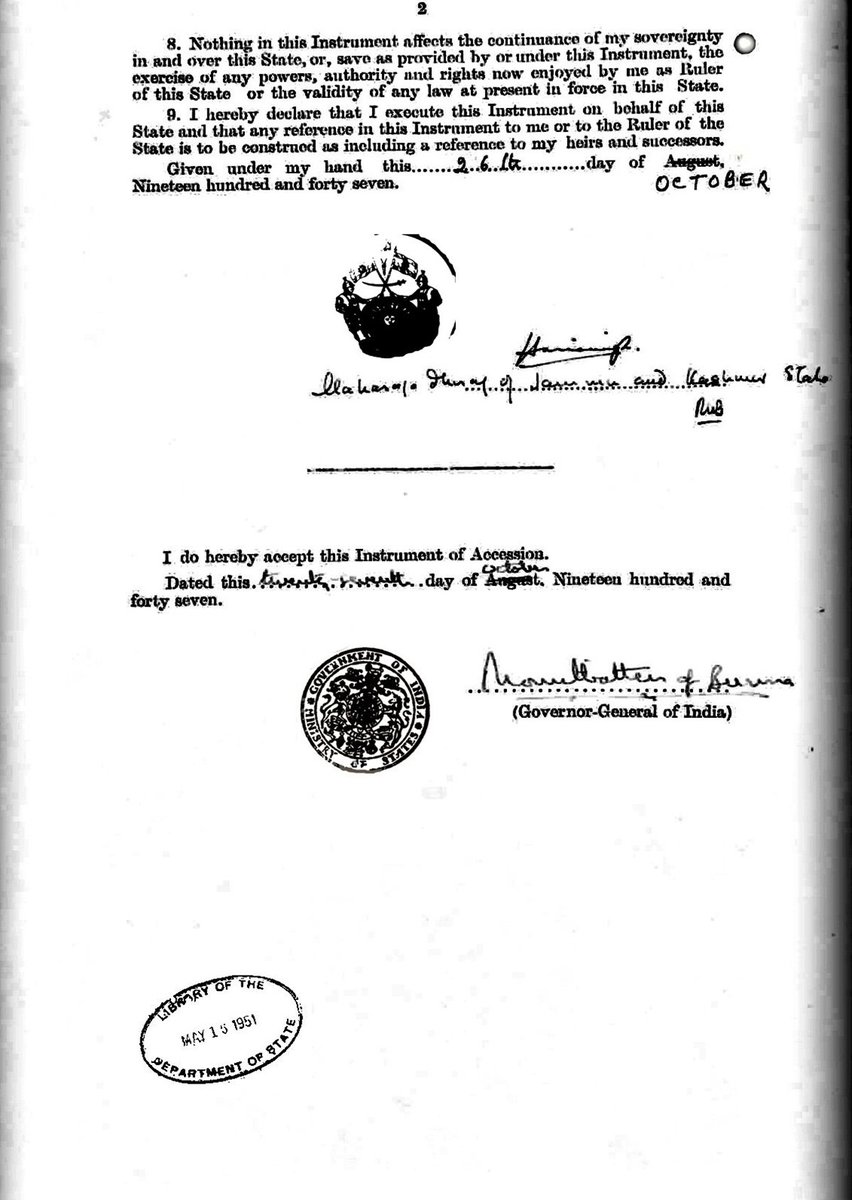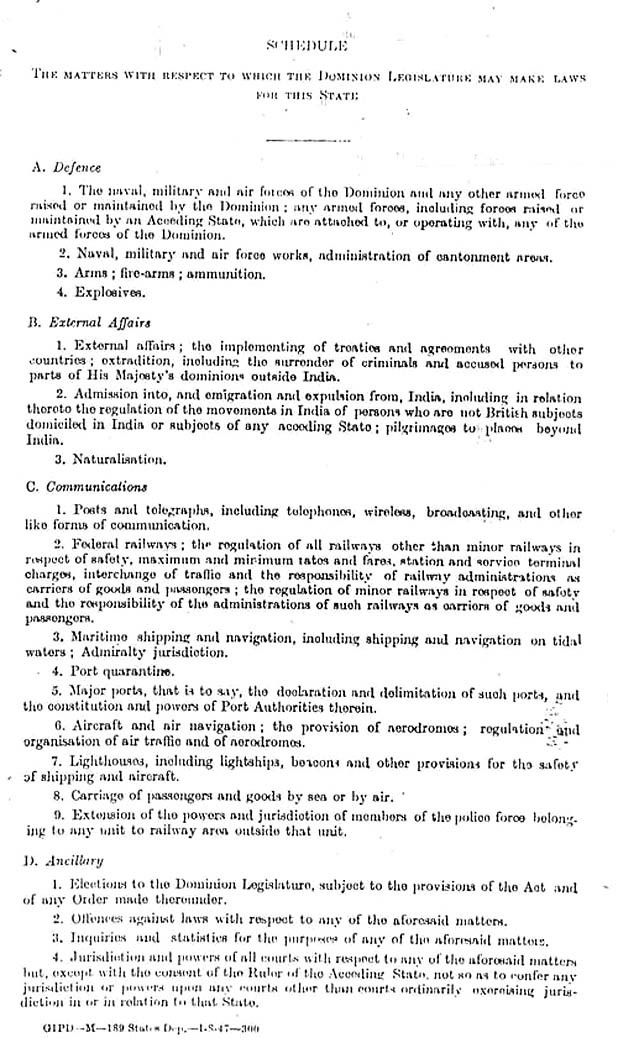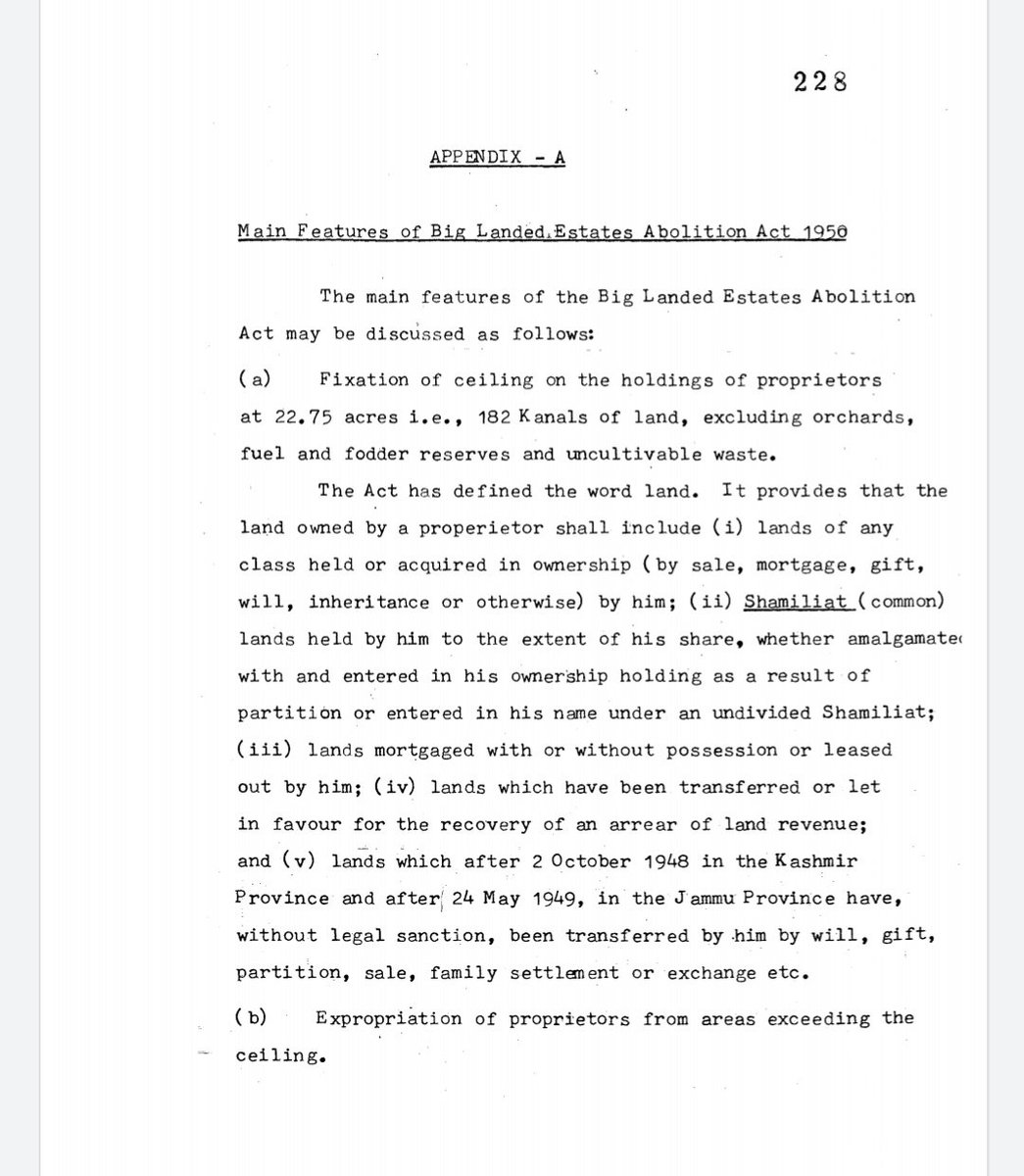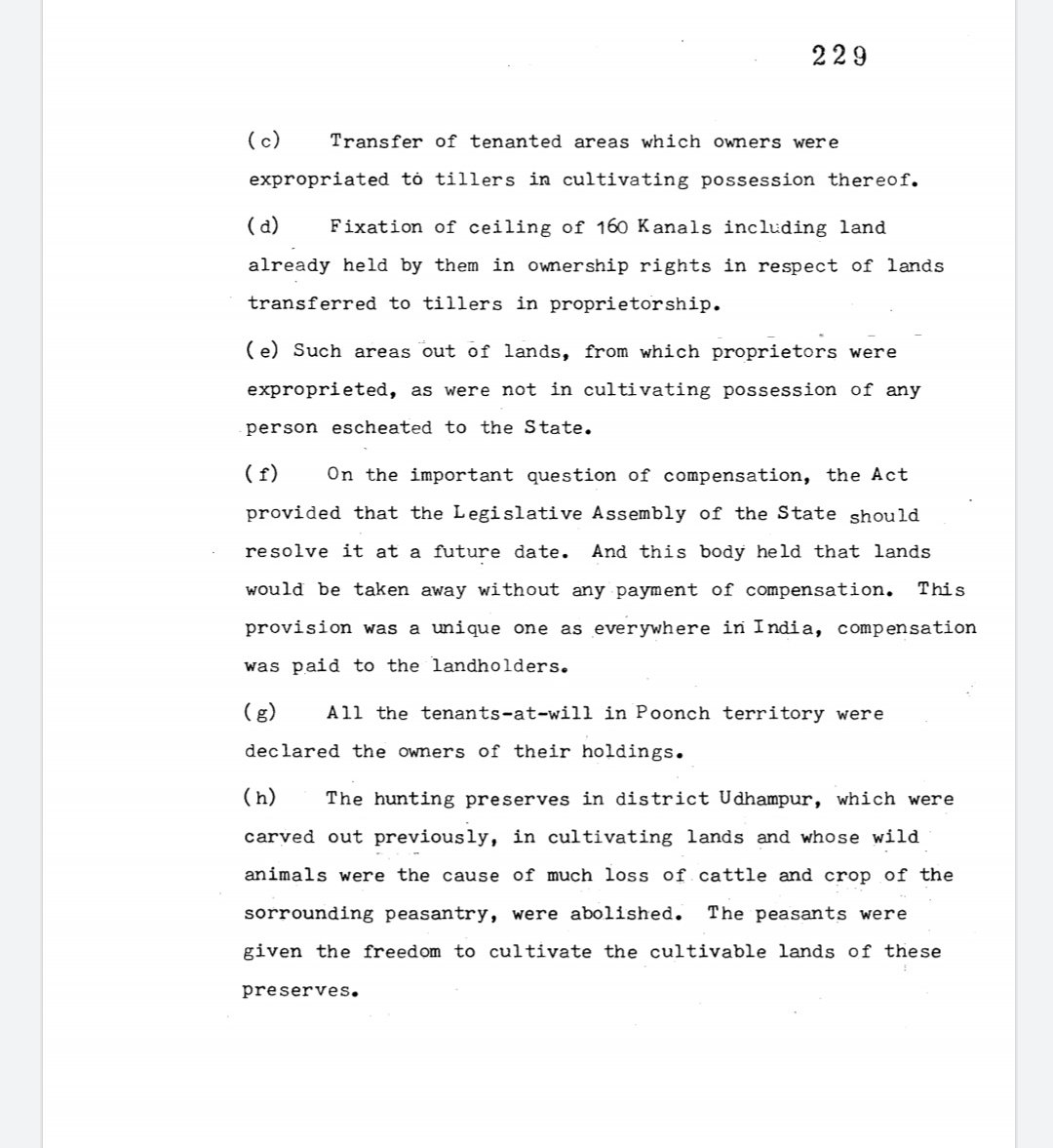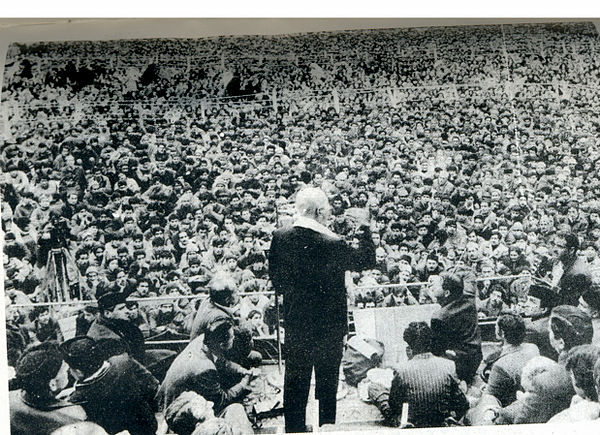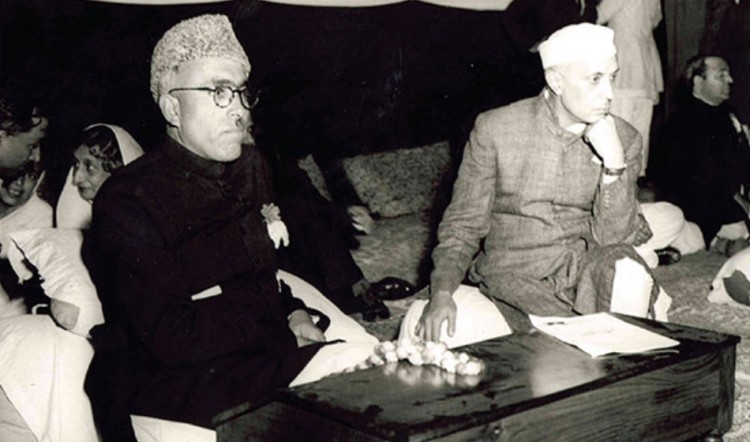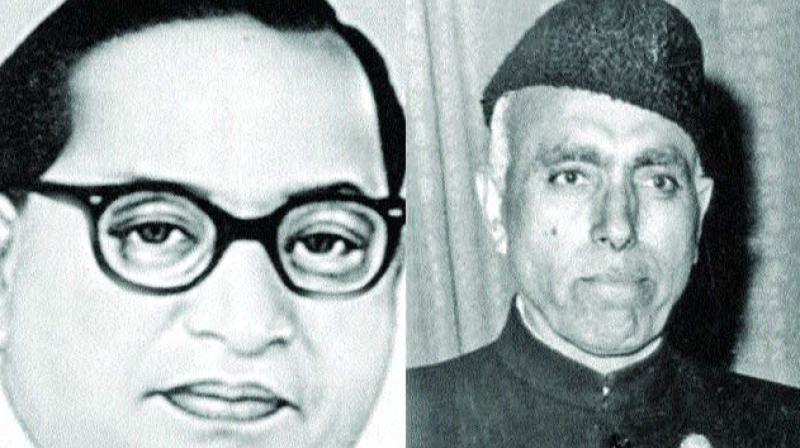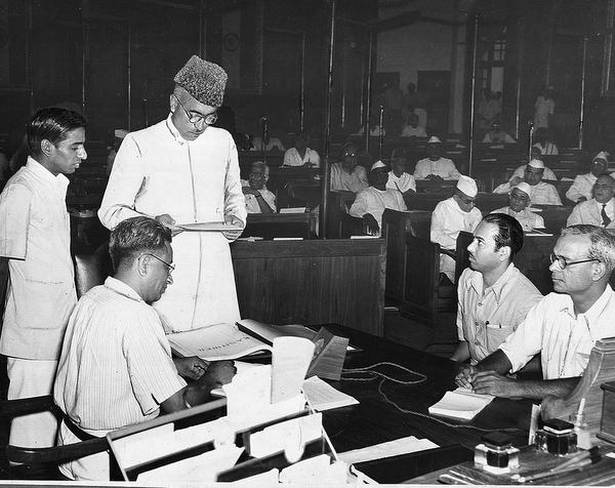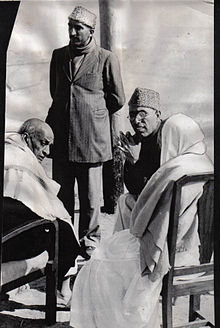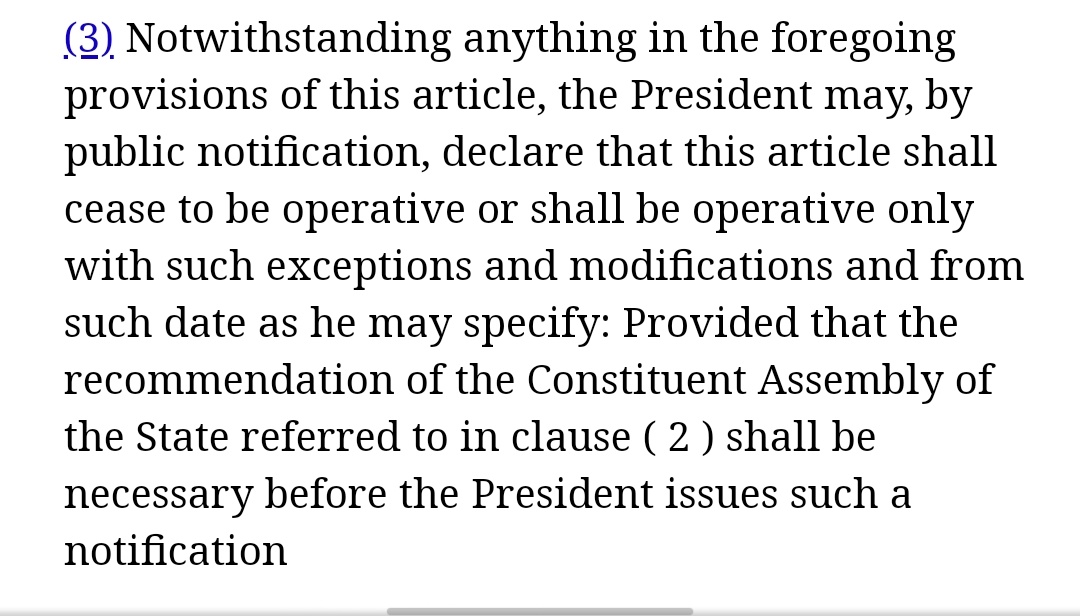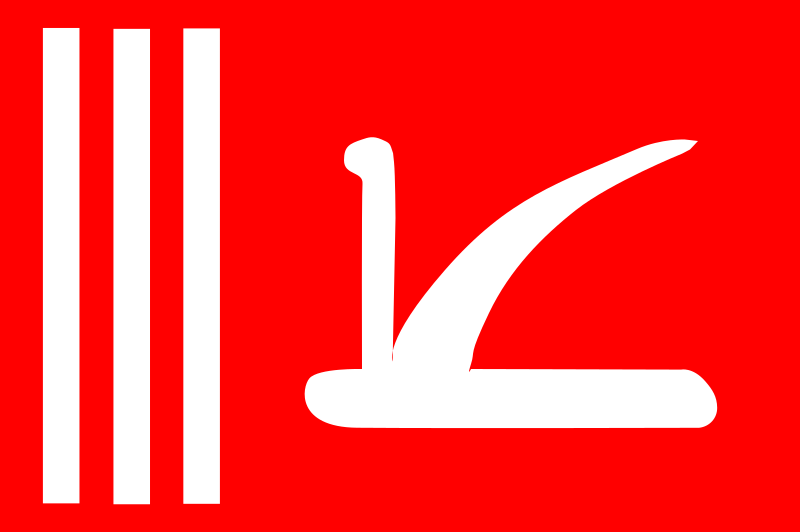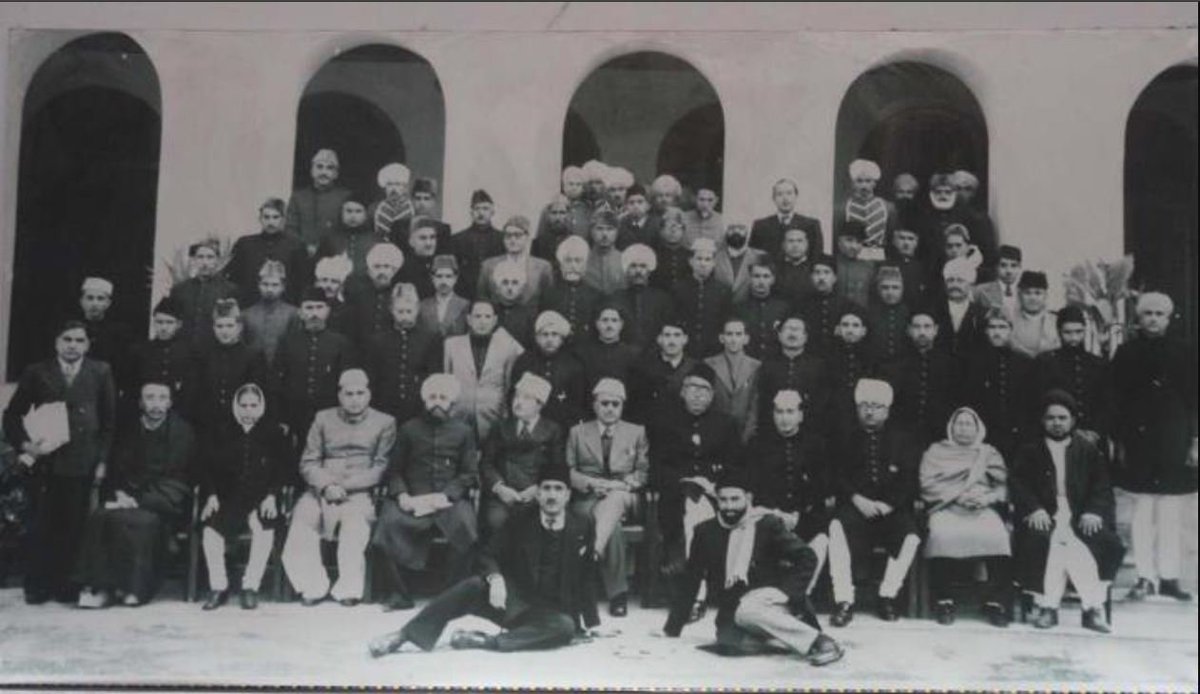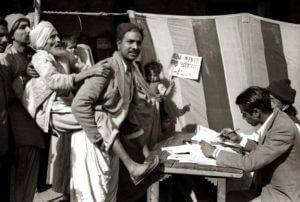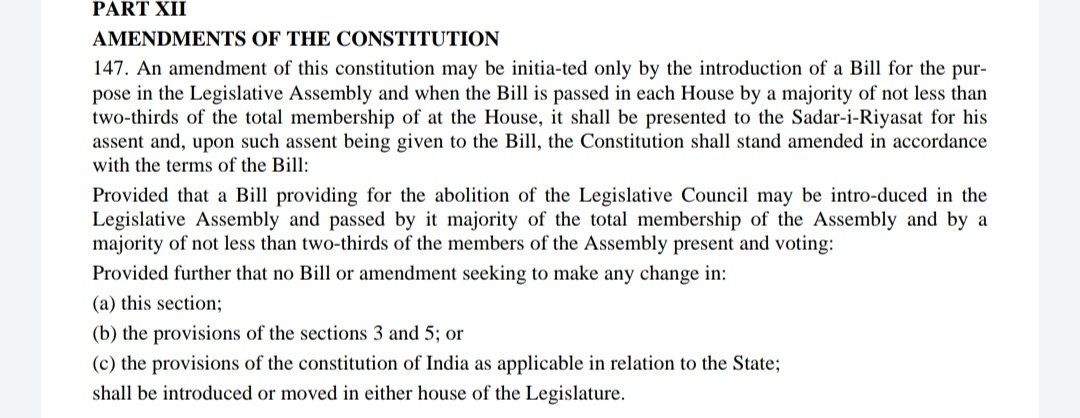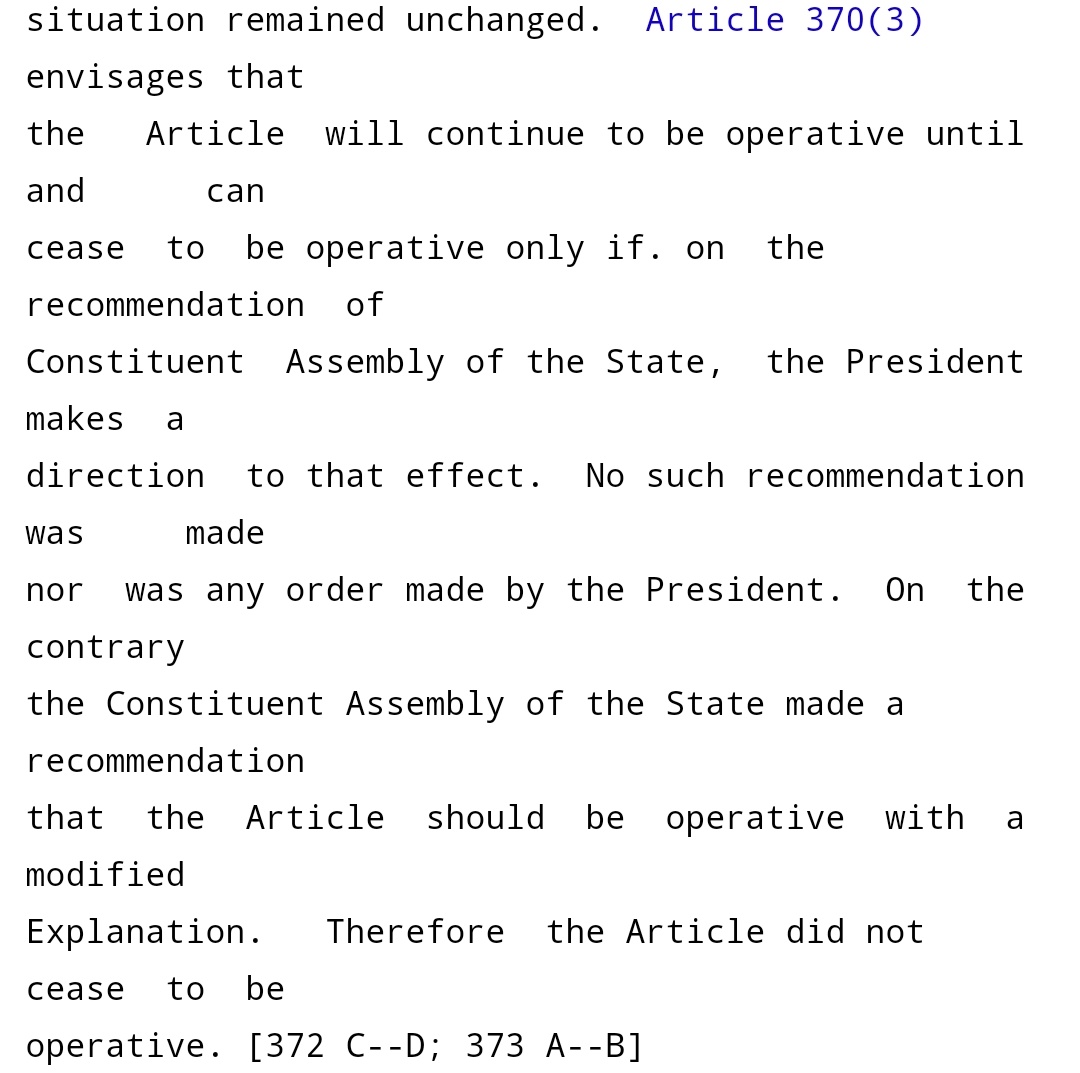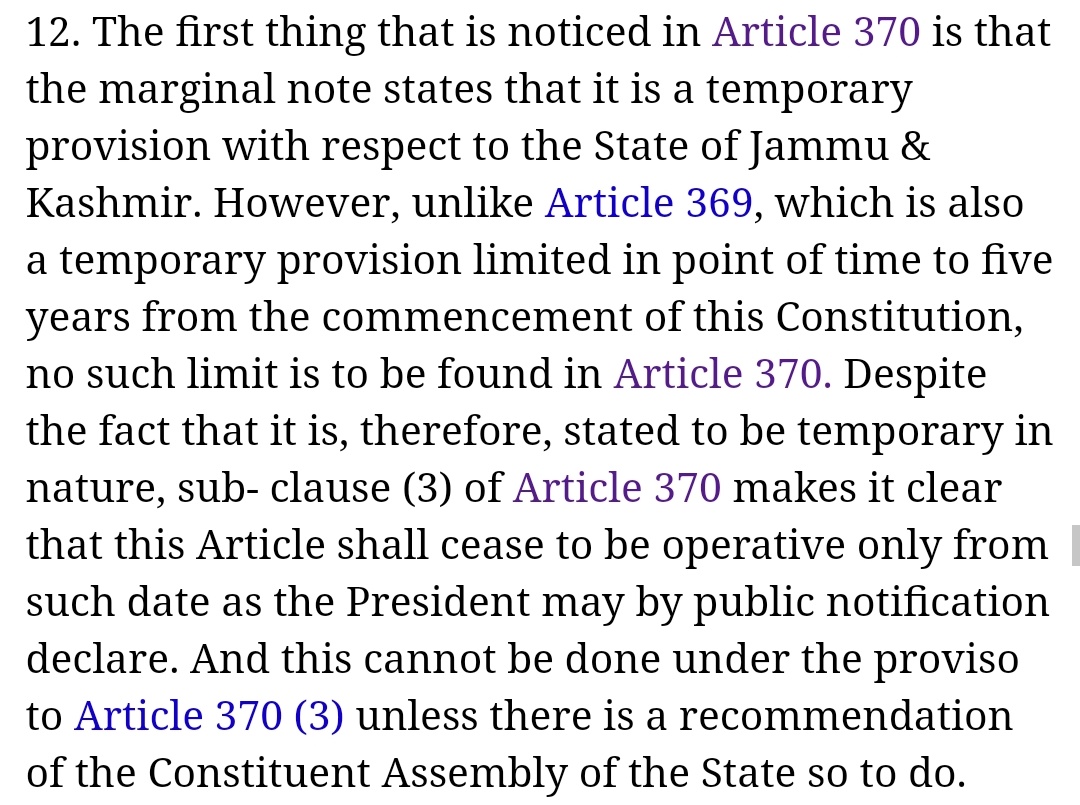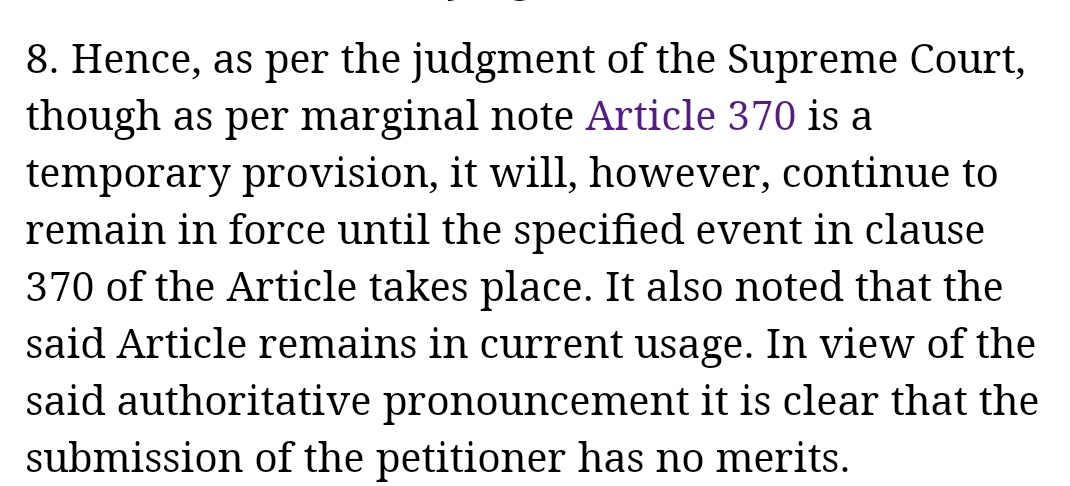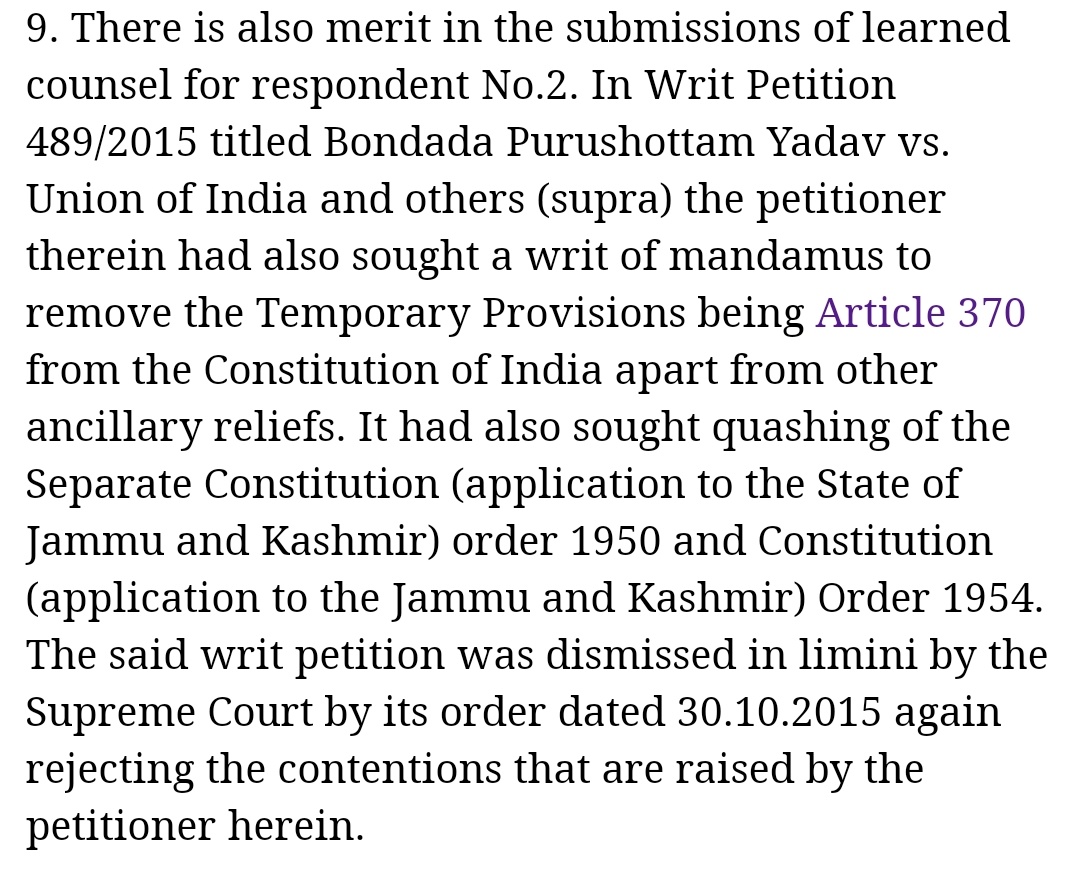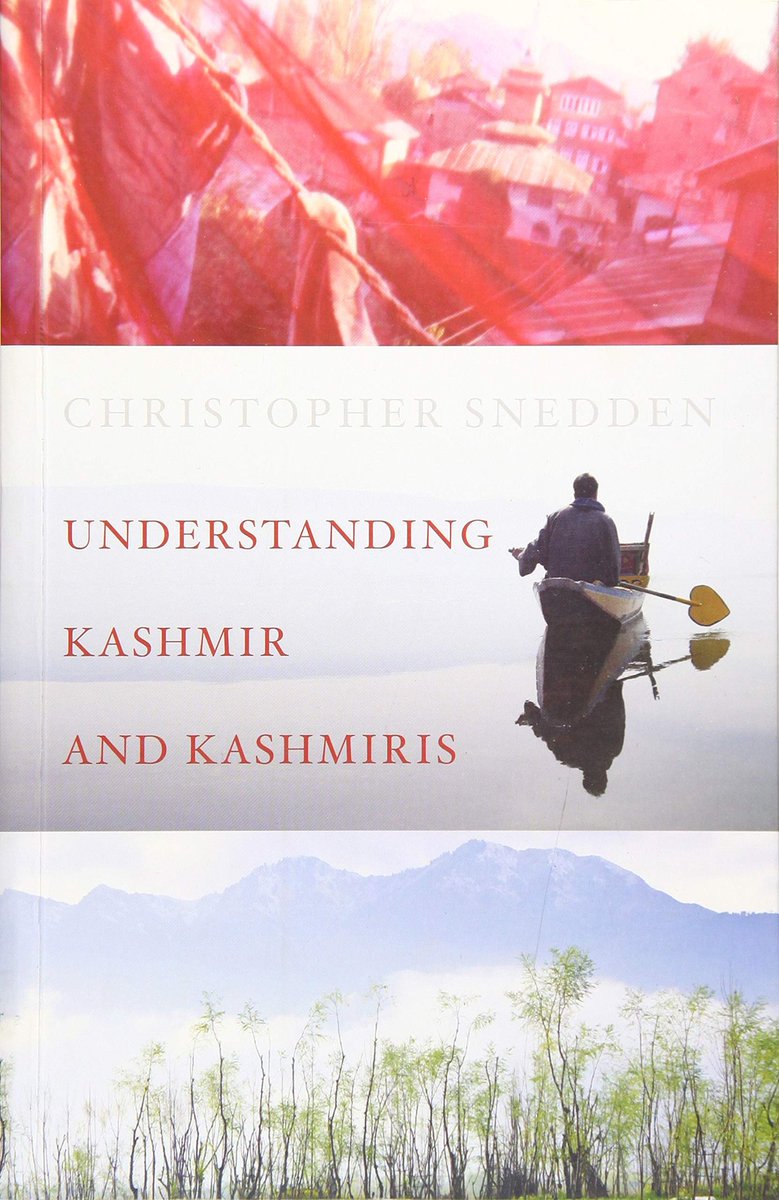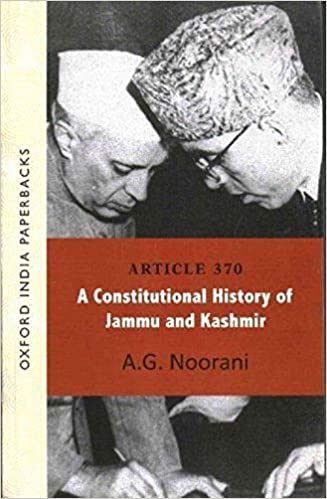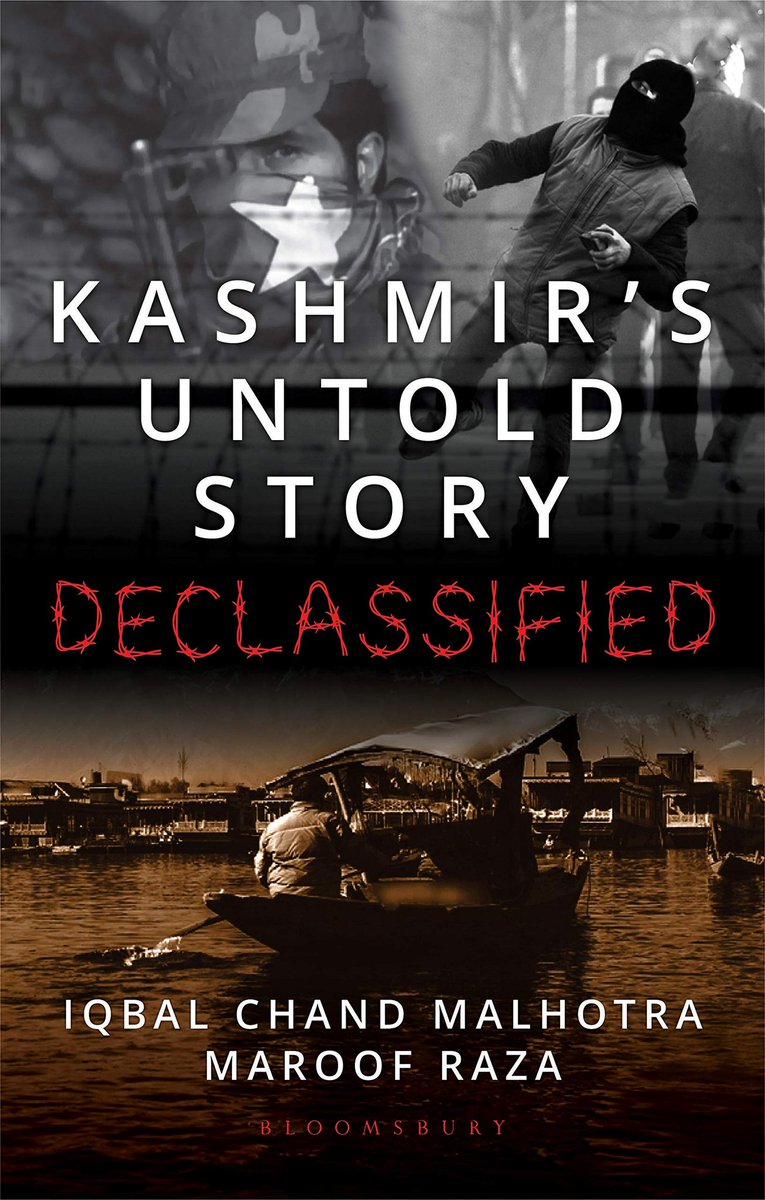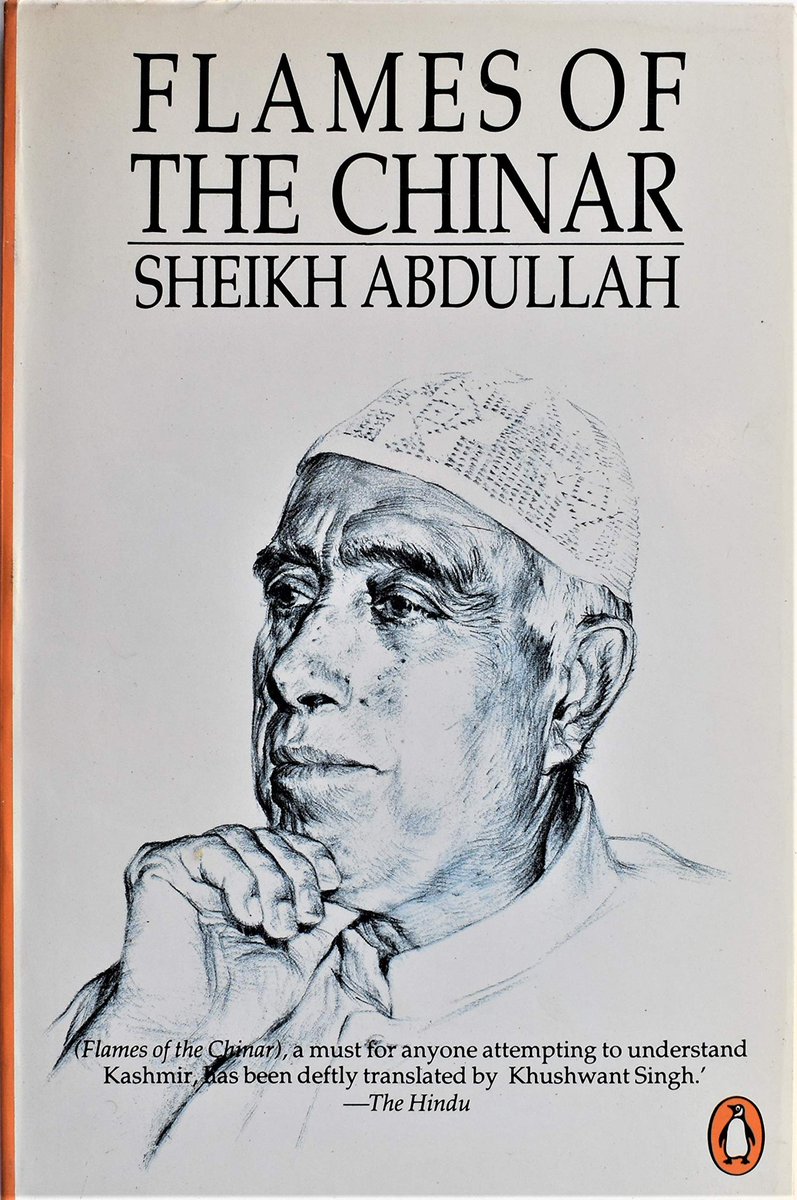[THREAD: VALLEY OF FLOWERS, FLOWERS OF CARNAGE - I]
1/162
Isn& #39;t it ironic that when India officially acquired J&K in 1948, the very river it was named after no longer remained Indian? But let& #39;s rewind a bit, this story involves 2 more ironies, much bigger than this one.
1/162
Isn& #39;t it ironic that when India officially acquired J&K in 1948, the very river it was named after no longer remained Indian? But let& #39;s rewind a bit, this story involves 2 more ironies, much bigger than this one.
2/162
The story of Kashmir is older than Pakistan, independent of India, and involves actors from more diverse lands than either. One Hindu legend says it started with a saint Kashyap gentrifying the space between Karakoram and Pir Panjal, but that& #39;s just a legend.
The story of Kashmir is older than Pakistan, independent of India, and involves actors from more diverse lands than either. One Hindu legend says it started with a saint Kashyap gentrifying the space between Karakoram and Pir Panjal, but that& #39;s just a legend.
3/162
Known to Ancient Greeks as Kaspapyros and the Chinese as Kipin as early as 500 BC, this pristine wonderland was once a nerve-center of Buddhist hegemony and attracted attention from the likes of Alexander the Great and Darius I. The place had a near-mythical vibe to it.
Known to Ancient Greeks as Kaspapyros and the Chinese as Kipin as early as 500 BC, this pristine wonderland was once a nerve-center of Buddhist hegemony and attracted attention from the likes of Alexander the Great and Darius I. The place had a near-mythical vibe to it.
4/162
Having switched myriad hands over centuries, the region finally fell in Muslim hands in 1339. This was the Shah Mir dynasty. A Nund Rishi was Kashmir& #39;s patron saint at the time. 50 years down the line, he was Sheikh Nur-ud-din Wali (lit. Light of the Faith).
Having switched myriad hands over centuries, the region finally fell in Muslim hands in 1339. This was the Shah Mir dynasty. A Nund Rishi was Kashmir& #39;s patron saint at the time. 50 years down the line, he was Sheikh Nur-ud-din Wali (lit. Light of the Faith).
5/162
This conversion wasn& #39;t exactly voluntary but that isn& #39;t important here. What IS, is that it marked the beginning of a unique interfaith syncretism called "Kashmiriyat." Sheikh Wali spent the rest of his days evangelizing about this irreligious national spirit.
This conversion wasn& #39;t exactly voluntary but that isn& #39;t important here. What IS, is that it marked the beginning of a unique interfaith syncretism called "Kashmiriyat." Sheikh Wali spent the rest of his days evangelizing about this irreligious national spirit.
6/162
Kashmiriyat wasn& #39;t just any other social movement to improve harmony; it was a whole tradition in and of itself. Pandits and Muslims not only respected each other& #39;s festivals but actively participated therein. Beef and pork both vanished from their diets.
Kashmiriyat wasn& #39;t just any other social movement to improve harmony; it was a whole tradition in and of itself. Pandits and Muslims not only respected each other& #39;s festivals but actively participated therein. Beef and pork both vanished from their diets.
7/162
Here on, the region slid seamlessly from one Muslim dynasty to another — first the Chaks from Gilgit, then the Mughals from India, and then the Durranis from Afghanistan. The Kashmiri society had crystallized a peculiar stratification during this period of Islamic rule.
Here on, the region slid seamlessly from one Muslim dynasty to another — first the Chaks from Gilgit, then the Mughals from India, and then the Durranis from Afghanistan. The Kashmiri society had crystallized a peculiar stratification during this period of Islamic rule.
8/162
This stratification had a lot to do with its near isolation from the rest of the subcontinent. Here, the elite, educated, and wealthy Pandit was sandwiched between the ruler Muslim and the peasant and artisan Muslim.
This stratification had a lot to do with its near isolation from the rest of the subcontinent. Here, the elite, educated, and wealthy Pandit was sandwiched between the ruler Muslim and the peasant and artisan Muslim.
9/162
So while the kingdom was largely Muslim, Sunni to be exact, with Muslim rulers, its strings were pulled almost exclusively by Brahmins. In all areas, from finance to defense and from politics to administration. Somehow this system worked. Few complained, if at all.
So while the kingdom was largely Muslim, Sunni to be exact, with Muslim rulers, its strings were pulled almost exclusively by Brahmins. In all areas, from finance to defense and from politics to administration. Somehow this system worked. Few complained, if at all.
10/162
Then came 1819 when after almost half a millennium of Muslim rule, Kashmir went to a Sikh. Maharaja Ranjit Singh had already wrested Jammu out of the Afghans a decade earlier and assigned it to a loyal local named Mian Kishore Singh Jamwal.
Then came 1819 when after almost half a millennium of Muslim rule, Kashmir went to a Sikh. Maharaja Ranjit Singh had already wrested Jammu out of the Afghans a decade earlier and assigned it to a loyal local named Mian Kishore Singh Jamwal.
11/162
Kishore Singh had 3 kids, all boys and all apples of the Maharaja& #39;s solitary eye. 2 years later, impressed by the eldest son& #39;s conquest of Rajouri and Dera Ghazi Khan, the Maharaja decided to elevate Kishore Singh& #39;s stature as a token of appreciation.
Kishore Singh had 3 kids, all boys and all apples of the Maharaja& #39;s solitary eye. 2 years later, impressed by the eldest son& #39;s conquest of Rajouri and Dera Ghazi Khan, the Maharaja decided to elevate Kishore Singh& #39;s stature as a token of appreciation.
12/162
Before that could formalize though, Kishore Singh died. So the eldest, a 30-year-old Gulab, was hastily coronated the new "Rajah" of Chakla in Jammu. Of course he still reported to the Maharaja in Lahore. In time, however, this arrangement would suffer a dramatic change.
Before that could formalize though, Kishore Singh died. So the eldest, a 30-year-old Gulab, was hastily coronated the new "Rajah" of Chakla in Jammu. Of course he still reported to the Maharaja in Lahore. In time, however, this arrangement would suffer a dramatic change.
13/162
Now Gulab Singh was one wily specimen. A puny jagir was far from enough. With eyes on the entirety of Jammu, he wanted Kishtwar, its largest territory. A plan was hatched. A letter was written to the Rajah of Kishtwar that Ranjit Singh was planning to oust him.
Now Gulab Singh was one wily specimen. A puny jagir was far from enough. With eyes on the entirety of Jammu, he wanted Kishtwar, its largest territory. A plan was hatched. A letter was written to the Rajah of Kishtwar that Ranjit Singh was planning to oust him.
14/162
By the time Kishtwar could respond, another letter purporting to be from its Rajah was posted to Lahore, inviting him to annex the principality. Finally, a third letter to Kishtwar claimed his Vizier was behind the whole mess. How& #39;s that for some pre-Internet phishing?
By the time Kishtwar could respond, another letter purporting to be from its Rajah was posted to Lahore, inviting him to annex the principality. Finally, a third letter to Kishtwar claimed his Vizier was behind the whole mess. How& #39;s that for some pre-Internet phishing?
15/162
Desperate Rajah got rid of his Vizier right away and walked straight into Gulab Singh& #39;s snare when he traveled to Chakla seeking help. He was promptly imprisoned and without much bloodshed, Kishtwar was annexed. Later, news traveled to Lahore.
Desperate Rajah got rid of his Vizier right away and walked straight into Gulab Singh& #39;s snare when he traveled to Chakla seeking help. He was promptly imprisoned and without much bloodshed, Kishtwar was annexed. Later, news traveled to Lahore.
16/162
Not sure if Ranjit Singh approved of this maneuver, he certainly didn& #39;t act. He did order the Rajah& #39;s immediate release though. Upon release, the Rajah headed straight for Lahore to seek justice from the Maharaja. Only one problem.
Someone poisoned him to death.
Not sure if Ranjit Singh approved of this maneuver, he certainly didn& #39;t act. He did order the Rajah& #39;s immediate release though. Upon release, the Rajah headed straight for Lahore to seek justice from the Maharaja. Only one problem.
Someone poisoned him to death.
17/162
In 1834, an ever-ambitious Gulab bagged Ladakh. 5 years later, came the windfall.
Maharaja Ranjit Singh died.
Just went to bed and never woke up.
This marked the beginning of the end of the Sikh Empire as none of Ranjit Singh& #39;s heirs was fit to rule an empire this big.
In 1834, an ever-ambitious Gulab bagged Ladakh. 5 years later, came the windfall.
Maharaja Ranjit Singh died.
Just went to bed and never woke up.
This marked the beginning of the end of the Sikh Empire as none of Ranjit Singh& #39;s heirs was fit to rule an empire this big.
18/162
By 1840, Gulab had bagged Skardu too. He even tried Tibet but failed miserably. The Sikhs, on the other hand, continued to unravel. The 10 years following Ranjit Singh& #39;s death saw at least 6 successive coronations.
By 1840, Gulab had bagged Skardu too. He even tried Tibet but failed miserably. The Sikhs, on the other hand, continued to unravel. The 10 years following Ranjit Singh& #39;s death saw at least 6 successive coronations.
19/162
An unstable empire is a weak empire. And weak empires are sitting ducks, especially with something like the East India Company sitting in ambush. On Dec 11, 1845, The Company invaded the Empire in what came to be known as the First Anglo-Sikh War.
Sikhs lost.
An unstable empire is a weak empire. And weak empires are sitting ducks, especially with something like the East India Company sitting in ambush. On Dec 11, 1845, The Company invaded the Empire in what came to be known as the First Anglo-Sikh War.
Sikhs lost.
20/162
Interestingly, Gulab Singh stayed neutral and instead, spent time building bridges with the Brits.
A March 9 Treaty of Lahore signaled the end of the war. Much happened in this treaty (Koh-i-Noor fell in British hands for the first time) but we& #39;ll only dwell on one.
Interestingly, Gulab Singh stayed neutral and instead, spent time building bridges with the Brits.
A March 9 Treaty of Lahore signaled the end of the war. Much happened in this treaty (Koh-i-Noor fell in British hands for the first time) but we& #39;ll only dwell on one.
21/162
War indemnity.
One of the treaty& #39;s stipulations was a 15-million-rupee payout from Maharaja Dalip Singh to the Company. Compensation, if you will.
This was a big sum, one the battered kingdom& #39;s treasury couldn& #39;t afford right away. So an alternative was offered.
War indemnity.
One of the treaty& #39;s stipulations was a 15-million-rupee payout from Maharaja Dalip Singh to the Company. Compensation, if you will.
This was a big sum, one the battered kingdom& #39;s treasury couldn& #39;t afford right away. So an alternative was offered.
22/162
Dalip Singh could only raise 5 million in liquid cash, so that was paid. In lieu of the remaining 10 million, the British sought everything between Beas and Indus.
That was, among much else, Kashmir.
The Maharaja had no choice. The deal was struck.
Dalip Singh could only raise 5 million in liquid cash, so that was paid. In lieu of the remaining 10 million, the British sought everything between Beas and Indus.
That was, among much else, Kashmir.
The Maharaja had no choice. The deal was struck.
23/162
Thus Kashmir was now an East India Company property. But only for a week. On March 16, the Company and Gulab Singh signed the Treaty of Amritsar sealing a sale of this newly-acquired territory to Gulab Singh. For a discounted price of 7.5 million rupees.
Thus Kashmir was now an East India Company property. But only for a week. On March 16, the Company and Gulab Singh signed the Treaty of Amritsar sealing a sale of this newly-acquired territory to Gulab Singh. For a discounted price of 7.5 million rupees.
24/162
But where did the dough come from? There& #39;s 2 theories. One says he borrowed it from a transport vendor to the Sikh army, a Shaikh Saudagar. The other is a tad shadier: By this account, he only had to pay 6.8 million. And this money came from an earlier loot.
But where did the dough come from? There& #39;s 2 theories. One says he borrowed it from a transport vendor to the Sikh army, a Shaikh Saudagar. The other is a tad shadier: By this account, he only had to pay 6.8 million. And this money came from an earlier loot.
25/162
A year after Ranjit Singh& #39;s death, his daughter-in-law Maharani Chand Kaur, had just stepped down after being regent of the Sikh Empire for a grand total of 2.5 months. By then, the Empire had already changed 3 hands after the dead one-eyed Maharaja.
A year after Ranjit Singh& #39;s death, his daughter-in-law Maharani Chand Kaur, had just stepped down after being regent of the Sikh Empire for a grand total of 2.5 months. By then, the Empire had already changed 3 hands after the dead one-eyed Maharaja.
26/162
Freshly out of power at a time this volatile, the Maharani was at her vulnerable worst. That& #39;s when Gulab Singh slid into her life and offered safe custody for her father-in-law& #39;s treasure. The very next year, the lady was conveniently murdered.
Freshly out of power at a time this volatile, the Maharani was at her vulnerable worst. That& #39;s when Gulab Singh slid into her life and offered safe custody for her father-in-law& #39;s treasure. The very next year, the lady was conveniently murdered.
27/162
With this money, Gulab Singh bought Kashmir from the Brits in the Treaty of Amritsar on Mar 16, 1846. That& #39;s how Jammu, Kashmir, and Laddakh became a single political unit under a single sigil for the 1st time ever: The Princely State of Kashmir and Jammu.
With this money, Gulab Singh bought Kashmir from the Brits in the Treaty of Amritsar on Mar 16, 1846. That& #39;s how Jammu, Kashmir, and Laddakh became a single political unit under a single sigil for the 1st time ever: The Princely State of Kashmir and Jammu.
28/162
Also with this treaty, the British conferred upon the Dogra warlord a new title, Maharaja.
Gulab Singh was sly. And Gulab Singh was cruel. But little is read about these unflattering attributes of the great Dogra maharaja today, although much is out there in writing.
Also with this treaty, the British conferred upon the Dogra warlord a new title, Maharaja.
Gulab Singh was sly. And Gulab Singh was cruel. But little is read about these unflattering attributes of the great Dogra maharaja today, although much is out there in writing.
29/162
Contemporary British compared him with Caligula and Nero and not for nothing. He was known for flaying prisoners alive and other such exploits. His dominion was called the "produce of fraud and violence." Of course, none of this bothered the British anyway.
Contemporary British compared him with Caligula and Nero and not for nothing. He was known for flaying prisoners alive and other such exploits. His dominion was called the "produce of fraud and violence." Of course, none of this bothered the British anyway.
30/162
This deliberate oversight would yield dividends 11 years later in the 1857 mutiny but more on that later. Now having secured blessings from the Company, Gulab Singh still had one job left to do: The actual physical possession of the newly-acquired territory.
This deliberate oversight would yield dividends 11 years later in the 1857 mutiny but more on that later. Now having secured blessings from the Company, Gulab Singh still had one job left to do: The actual physical possession of the newly-acquired territory.
31/162
At the time, Kashmir was helmed by Sikh governor Shaikh Imam-ud-Din. He was reporting to the Sikh Maharaja in Lahore and despite the Treaty of Amritsar, wasn& #39;t gonna just roll over and play dead to the new incoming Dogra authority. He was willing to fight.
At the time, Kashmir was helmed by Sikh governor Shaikh Imam-ud-Din. He was reporting to the Sikh Maharaja in Lahore and despite the Treaty of Amritsar, wasn& #39;t gonna just roll over and play dead to the new incoming Dogra authority. He was willing to fight.
32/162
The Treaty of Amritsar, Kashmir& #39;s de facto sale deed, came in 10 articles. These articles elaborated on boundaries and other bilateral issues such as disputes, alliances, and annual tributes to the Company. But no mention of the rights of the people living there.
The Treaty of Amritsar, Kashmir& #39;s de facto sale deed, came in 10 articles. These articles elaborated on boundaries and other bilateral issues such as disputes, alliances, and annual tributes to the Company. But no mention of the rights of the people living there.
33/162
Essentially, Gulab Singh owned Kashmir. And Kashmiris. Imam-ud-Din foresaw problems with this arrangement. And decided to resist. It took Singh a good 8 months, a dead commander (Wazir Lakhpat Rai), and British help to finally enter Kashmir in November 1846.
Essentially, Gulab Singh owned Kashmir. And Kashmiris. Imam-ud-Din foresaw problems with this arrangement. And decided to resist. It took Singh a good 8 months, a dead commander (Wazir Lakhpat Rai), and British help to finally enter Kashmir in November 1846.
34/162
As a vassal of the East India Company, Gulab Singh assumed unrestricted powers in J&K and launched a reign of communal terror. An enormous sum had been paid to acquire Kashmir. It had to be recovered. To that end, Gulab Singh introduced new taxes. Taxes not seen before.
As a vassal of the East India Company, Gulab Singh assumed unrestricted powers in J&K and launched a reign of communal terror. An enormous sum had been paid to acquire Kashmir. It had to be recovered. To that end, Gulab Singh introduced new taxes. Taxes not seen before.
35/162
Now, everything from firewood to water chestnuts and from labor to marriages — even death — was taxed, and heavily so. Oh and Kashmiri pandits, they were exempt. This was by design. Keeping the Muslim majority in check was an imperial imperative.
Now, everything from firewood to water chestnuts and from labor to marriages — even death — was taxed, and heavily so. Oh and Kashmiri pandits, they were exempt. This was by design. Keeping the Muslim majority in check was an imperial imperative.
36/162
So what were the taxes like? Birth of a lamb, 1 anna. Birth of a calf, 4 annas. Marriage, 1 rupee. Running a store, 3 annas a day. Fishing boat, 4 annas a day. Walnut tree, 10 annas a year. For perspective, 1 rupee amounted to an average of 22 days of labor.
So what were the taxes like? Birth of a lamb, 1 anna. Birth of a calf, 4 annas. Marriage, 1 rupee. Running a store, 3 annas a day. Fishing boat, 4 annas a day. Walnut tree, 10 annas a year. For perspective, 1 rupee amounted to an average of 22 days of labor.
37/162
Shawl manufacturers had to import raw material at a 300% import duty. And once sold, 30% was to be paid in taxes again. If you had a harvest, you couldn& #39;t touch it until the king& #39;s assessors had inspected and collected their taxes. But they& #39;d only come when they& #39;d come.
Shawl manufacturers had to import raw material at a 300% import duty. And once sold, 30% was to be paid in taxes again. If you had a harvest, you couldn& #39;t touch it until the king& #39;s assessors had inspected and collected their taxes. But they& #39;d only come when they& #39;d come.
38/1162
Sometimes this meant a waiting period of 2-3 months during which if you didn& #39;t have backup produce, you starved. This triggered a futile labor strike on July (or June? Not sure) 6, 1847, a first in the world. The one in Chicago was still years away.
Sometimes this meant a waiting period of 2-3 months during which if you didn& #39;t have backup produce, you starved. This triggered a futile labor strike on July (or June? Not sure) 6, 1847, a first in the world. The one in Chicago was still years away.
39/162
In 1856, a sick and frail 64-year-old couldn& #39;t handle his edema anymore and decided to abdicate. The crown now went to his son Ranbir. The very next year India broke into a mutiny against the Company rule and less than 2 months into the mutiny, the old man finally died.
In 1856, a sick and frail 64-year-old couldn& #39;t handle his edema anymore and decided to abdicate. The crown now went to his son Ranbir. The very next year India broke into a mutiny against the Company rule and less than 2 months into the mutiny, the old man finally died.
40/162
When the British decided to encash the Dogra favor bank during the mutiny, Ranbir Singh Jamwal was more than eager to oblige. Not only did he refuse shelter to the mutineers, he actively sent troops to help the British in the mutiny& #39;s single most decisive theater, Delhi.
When the British decided to encash the Dogra favor bank during the mutiny, Ranbir Singh Jamwal was more than eager to oblige. Not only did he refuse shelter to the mutineers, he actively sent troops to help the British in the mutiny& #39;s single most decisive theater, Delhi.
41/162
The Company didn& #39;t survive this mutiny though and India went to the Crown. But Ranbir Singh& #39;s contributions didn& #39;t go unnoticed or unrewarded. The Treaty of Amritsar was amended to exempt him from the very controversial Doctrine of Lapse.
The Company didn& #39;t survive this mutiny though and India went to the Crown. But Ranbir Singh& #39;s contributions didn& #39;t go unnoticed or unrewarded. The Treaty of Amritsar was amended to exempt him from the very controversial Doctrine of Lapse.
42/162
Doctrine of Lapse where a territory automatically ceded to the British Crown in the absence of a legitimate heir is what had drawn Laxmibai into the mutiny in Jhansi. It served to irrevocably crystallize the Dogra& #39;s authority over J&K. Under British suzerainty, of course.
Doctrine of Lapse where a territory automatically ceded to the British Crown in the absence of a legitimate heir is what had drawn Laxmibai into the mutiny in Jhansi. It served to irrevocably crystallize the Dogra& #39;s authority over J&K. Under British suzerainty, of course.
43/162
The British did nothing without reason. Kashmir offered a perfect political buffer against the growing Russian clout up north. Part of a century-old cold war between the imperial heavyweights known as the Great Game. So a stable dogra rule was a strategic imperative.
The British did nothing without reason. Kashmir offered a perfect political buffer against the growing Russian clout up north. Part of a century-old cold war between the imperial heavyweights known as the Great Game. So a stable dogra rule was a strategic imperative.
44/162
Under Ranbir Singh, things started looking a wee bit more life affirming for valley Muslims. Not only did he introduce new economic reforms, he even worked with Thomas Macaulay to float a brand new legal system, the Ranbir Penal Code or the RPC.
Under Ranbir Singh, things started looking a wee bit more life affirming for valley Muslims. Not only did he introduce new economic reforms, he even worked with Thomas Macaulay to float a brand new legal system, the Ranbir Penal Code or the RPC.
45/162
The RPC was a major leap of modernity although still regressive by today& #39;s standards, and would go on to outlive not only its creators but the dogra monarchy and the British Raj themselves. Gulab Singh& #39;s tax terrorism, however, continued unabated.
The RPC was a major leap of modernity although still regressive by today& #39;s standards, and would go on to outlive not only its creators but the dogra monarchy and the British Raj themselves. Gulab Singh& #39;s tax terrorism, however, continued unabated.
46/162
On taxes, Ranbir was but an extension of his father& #39;s tyranny, albeit marginally less violent. The new king patronized many temples outside in places like Haridwar and Kashi. Funds for these endeavors came from absurd levies like Sanskrit tax and temple tax.
On taxes, Ranbir was but an extension of his father& #39;s tyranny, albeit marginally less violent. The new king patronized many temples outside in places like Haridwar and Kashi. Funds for these endeavors came from absurd levies like Sanskrit tax and temple tax.
47/162
It didn& #39;t help either that Kashmir was swept by at least 3 separate waves of cholera and plague that killed thousands during his reign. When Ranbir& #39;s troops visited Gilgit to suppress a rebellion, they carried Kashmiri Muslims as slave labor.
It didn& #39;t help either that Kashmir was swept by at least 3 separate waves of cholera and plague that killed thousands during his reign. When Ranbir& #39;s troops visited Gilgit to suppress a rebellion, they carried Kashmiri Muslims as slave labor.
48/162
Contemporary accounts speak of babies being tossed up and slashed mid-air by enthusiastic soldiers in Gilgit. Was this sanctioned by the Maharaja? Hard to tell, but he sure did choose to ignore many such atrocities under his watch.
Contemporary accounts speak of babies being tossed up and slashed mid-air by enthusiastic soldiers in Gilgit. Was this sanctioned by the Maharaja? Hard to tell, but he sure did choose to ignore many such atrocities under his watch.
49/162
Oh and Ranbir Singh banned fishing in Kashmir& #39;s waters. Someone had managed to convinced him that his dead father had reincarnated as a fish. So with no fish and a good 75% of farm produce going in taxes, Muslims continued to starve. There were widespread famines.
Oh and Ranbir Singh banned fishing in Kashmir& #39;s waters. Someone had managed to convinced him that his dead father had reincarnated as a fish. So with no fish and a good 75% of farm produce going in taxes, Muslims continued to starve. There were widespread famines.
50/162
But was Ranbir Singh actually islamophobic? Hard to tell. While accounts of anti-Muslim military atrocities under his watch exist, as do those of taxes detrimental to Muslims more than to Hindus, he& #39;s also said to have patronized maulvis and Muslim scholars in his court.
But was Ranbir Singh actually islamophobic? Hard to tell. While accounts of anti-Muslim military atrocities under his watch exist, as do those of taxes detrimental to Muslims more than to Hindus, he& #39;s also said to have patronized maulvis and Muslim scholars in his court.
51/162
While there& #39;s mentions of a "Sanskrit tax," Ranbir Singh has also been recorded as personally fluent in Persian and fond of Pashto. While accounts say his soldiers murdered Muslims, he& #39;s also said to have had Afghan bodyguards. I& #39;ll let you decide if he hated Muslims.
While there& #39;s mentions of a "Sanskrit tax," Ranbir Singh has also been recorded as personally fluent in Persian and fond of Pashto. While accounts say his soldiers murdered Muslims, he& #39;s also said to have had Afghan bodyguards. I& #39;ll let you decide if he hated Muslims.
52/162
Ranbir Singh died in 1885 and was succeeded by a breath of fresh air.
Maharaja Sir Pratap Singh.
Much of the past 4 decades of tyranny misgovernance was to be undone by this gentleman. One of his contributions to the valley was a web of cart roads that exist even today.
Ranbir Singh died in 1885 and was succeeded by a breath of fresh air.
Maharaja Sir Pratap Singh.
Much of the past 4 decades of tyranny misgovernance was to be undone by this gentleman. One of his contributions to the valley was a web of cart roads that exist even today.
53/162
A series of land and tax reforms was also launched during Pratam Singh& #39;s reign. Taxes on farm produce, for instance were reduced from 75% to 30%. Forced labor or "begar" was outlawed as a barbaric practice. Out went the Muslim marriage tax, as did Sanskrit tax.
A series of land and tax reforms was also launched during Pratam Singh& #39;s reign. Taxes on farm produce, for instance were reduced from 75% to 30%. Forced labor or "begar" was outlawed as a barbaric practice. Out went the Muslim marriage tax, as did Sanskrit tax.
54/162
With this dramatic reduction in taxes, ironically, tax revenues more than doubled. Pratap Singh also floated many schools, colleges, hospitals, and irrigation and sanitation projects to improve the valley& #39;s quality of life. Kashmir looked upbeat once again.
With this dramatic reduction in taxes, ironically, tax revenues more than doubled. Pratap Singh also floated many schools, colleges, hospitals, and irrigation and sanitation projects to improve the valley& #39;s quality of life. Kashmir looked upbeat once again.
55/162
Another radical step was the abolition of state monopoly on items like shawls. This not only revived a moribund shawl industry but also brought new players into the scene. One such player was a shawl manufacturer and trader named Sheikh Mohammed Ibrahim.
Another radical step was the abolition of state monopoly on items like shawls. This not only revived a moribund shawl industry but also brought new players into the scene. One such player was a shawl manufacturer and trader named Sheikh Mohammed Ibrahim.
56/162
Sheikh Ibrahim, however, didn& #39;t live long to enjoy the new tax regime and died one winter morning in 1905. Less than 2 weeks after his death his pregnant widow delivered a boy. She named him Abdullah and raised him in abject poverty amidst all imaginable hardships.
Sheikh Ibrahim, however, didn& #39;t live long to enjoy the new tax regime and died one winter morning in 1905. Less than 2 weeks after his death his pregnant widow delivered a boy. She named him Abdullah and raised him in abject poverty amidst all imaginable hardships.
57/162
20 years and a World War later Abdullah was a fine young man with a Master& #39;s in chemistry from Aligarh Muslim University. It was 1930. Things had changed in J&K by then. 5 years earlier Pratap Singh had died leaving behind no offspring. So the baton had gone to his nephew.
20 years and a World War later Abdullah was a fine young man with a Master& #39;s in chemistry from Aligarh Muslim University. It was 1930. Things had changed in J&K by then. 5 years earlier Pratap Singh had died leaving behind no offspring. So the baton had gone to his nephew.
58/162
Hari was a colorful man. Unlike his predecessors, he was well educated and week exposed to the West. And no stranger to news. During his years in Britain, Hari Singh had built a reputation for reckless spending and was often a coveted target for burglars and con artists.
Hari was a colorful man. Unlike his predecessors, he was well educated and week exposed to the West. And no stranger to news. During his years in Britain, Hari Singh had built a reputation for reckless spending and was often a coveted target for burglars and con artists.
59/162
In 1924 an involvement with a French prostitute cost the young prince a staggering $750k and a lot of public esteem. That, however, didn& #39;t do much to change his ways and the splurging continued well after his coronation the next year.
In 1924 an involvement with a French prostitute cost the young prince a staggering $750k and a lot of public esteem. That, however, didn& #39;t do much to change his ways and the splurging continued well after his coronation the next year.
60/162
Hari Singh& #39;s coronation was a rather ritzy affair and made news all over the world. Of the $1.1 million that went into the shindig, a good $125k was spent on just dancing girls. Even the British Crown is said to have spent a million dollars of its own on this event.
Hari Singh& #39;s coronation was a rather ritzy affair and made news all over the world. Of the $1.1 million that went into the shindig, a good $125k was spent on just dancing girls. Even the British Crown is said to have spent a million dollars of its own on this event.
61/162
Through much of his time, Hari Singh remained one of the wealthiest monarchs in the world. An annual income of $10 million afforded him luxuries like a silver airplane, myriad slaves, multiple Versailles-sized palaces, and much much more. But he also gave back.
Through much of his time, Hari Singh remained one of the wealthiest monarchs in the world. An annual income of $10 million afforded him luxuries like a silver airplane, myriad slaves, multiple Versailles-sized palaces, and much much more. But he also gave back.
62/162
Hari Singh ushered in many radical reforms in the way Kashmir was being run, in keeping with his dead uncle& #39;s tradition. Within 4 quick years of coronation, he raised the penalty for abducting Kashmiri women from 3 years to 7. That& #39;s besides the lashes.
Hari Singh ushered in many radical reforms in the way Kashmir was being run, in keeping with his dead uncle& #39;s tradition. Within 4 quick years of coronation, he raised the penalty for abducting Kashmiri women from 3 years to 7. That& #39;s besides the lashes.
63/162
This followed other initiatives like the banning of child marriage and unbanning of widow remarriage, free and compulsory primary education for all, and the J&K Bank, a first for his kingdom. By the time baby Karan was born, most outstanding land revenue were cancelled.
This followed other initiatives like the banning of child marriage and unbanning of widow remarriage, free and compulsory primary education for all, and the J&K Bank, a first for his kingdom. By the time baby Karan was born, most outstanding land revenue were cancelled.
64/162
Speaking of Karan& #39;s birth, Hari Singh& #39;s extravaganza never really died. It was in Cannes. Daddy Hari was so elated, he blew a cool $300k on a quick "Nazar Durbar." After all, he had to marry 4 times for this serendipity. He even launched 500 scholarships for orphan kids.
Speaking of Karan& #39;s birth, Hari Singh& #39;s extravaganza never really died. It was in Cannes. Daddy Hari was so elated, he blew a cool $300k on a quick "Nazar Durbar." After all, he had to marry 4 times for this serendipity. He even launched 500 scholarships for orphan kids.
65/162
Under this gloss of opulence, though, Hari Singh was still an insecure monarch. And like any insecure monarch, he was willing to go however far it took to cement his grip on power. Dissent had to be crushed with whatever amount of brutality it necessitated.
Under this gloss of opulence, though, Hari Singh was still an insecure monarch. And like any insecure monarch, he was willing to go however far it took to cement his grip on power. Dissent had to be crushed with whatever amount of brutality it necessitated.
66/162
While he was cutting checks to his French blackmailers and his uncle counting days in 1924, dissent was brewing in Kashmir& #39;s government silk factory. The immediate trigger was poor labor conditions, deficient remunerations, and corrupt administrative practices.
While he was cutting checks to his French blackmailers and his uncle counting days in 1924, dissent was brewing in Kashmir& #39;s government silk factory. The immediate trigger was poor labor conditions, deficient remunerations, and corrupt administrative practices.
67/162
Further fuelled by the Khilafat Movement, the agitation soon acquired more audacious proportions and thousands of Muslim silk workers went on an indefinite strike. All these events were being closely studied and registered by a young Abdullah 600 miles away in Aligarh.
Further fuelled by the Khilafat Movement, the agitation soon acquired more audacious proportions and thousands of Muslim silk workers went on an indefinite strike. All these events were being closely studied and registered by a young Abdullah 600 miles away in Aligarh.
68/162
The strike solidified Abdullah& #39;s resolve to overthrow Kashmir& #39;s feudalism. Monarchy had to go. And even though the new Maharaja outlawed untouchability and forced labor in appeasement, Abdullah& #39;s resolve stood unchanged. He was determined to overthrow the monarchy.
The strike solidified Abdullah& #39;s resolve to overthrow Kashmir& #39;s feudalism. Monarchy had to go. And even though the new Maharaja outlawed untouchability and forced labor in appeasement, Abdullah& #39;s resolve stood unchanged. He was determined to overthrow the monarchy.
69/162
In 1934, the Maharaja in a feeble attempt to appease his dissenters, set up what would later become J&K& #39;s Legislative Assembly in a free India. It was called the Praja Sabha and had 75 members — 12 bureaucrats, 16 councillors, 14 royal nominees, and 33 elected members.
In 1934, the Maharaja in a feeble attempt to appease his dissenters, set up what would later become J&K& #39;s Legislative Assembly in a free India. It was called the Praja Sabha and had 75 members — 12 bureaucrats, 16 councillors, 14 royal nominees, and 33 elected members.
70/162
In fact, the 33 elected members comprised of twice as many Muslims as Hindus. Yet, the dissent continued because Muslims were still relegated to visible second-class citizenship in the Kashmiri polity. For instance, they still needed a license to bear arms unlike Pandits.
In fact, the 33 elected members comprised of twice as many Muslims as Hindus. Yet, the dissent continued because Muslims were still relegated to visible second-class citizenship in the Kashmiri polity. For instance, they still needed a license to bear arms unlike Pandits.
71/162
Even the taxation continued to be far from uniform, despite Hari Singh& #39;s liberalization. Muslims were still subject to taxes their Pandit compatriots weren& #39;t. And then there were discriminatory academic practices. Primary education was still free only for Hindus.
Even the taxation continued to be far from uniform, despite Hari Singh& #39;s liberalization. Muslims were still subject to taxes their Pandit compatriots weren& #39;t. And then there were discriminatory academic practices. Primary education was still free only for Hindus.
72/162
In this climate of resentment in 1932, Sheikh Abdullah launched the Kashmir Muslim Conference. Hari Singh& #39;s Praja Sabha initiative failed to cut democratic mustard because restrictive voting laws meant only 3% of the citizenry even enjoyed suffrage.
In this climate of resentment in 1932, Sheikh Abdullah launched the Kashmir Muslim Conference. Hari Singh& #39;s Praja Sabha initiative failed to cut democratic mustard because restrictive voting laws meant only 3% of the citizenry even enjoyed suffrage.
73/162
Having run the Muslim Conference for 5 years and still continuing to, Shaikh Abdullah joined the Indian National Congress and became good friends with Nehru, himself a Kashmiri Pandit. This alliance would continue to define Kashmir& #39;s politics for decades to come.
Having run the Muslim Conference for 5 years and still continuing to, Shaikh Abdullah joined the Indian National Congress and became good friends with Nehru, himself a Kashmiri Pandit. This alliance would continue to define Kashmir& #39;s politics for decades to come.
74/162
Influenced by Nehru& #39;s secularism, Abdullah later had Muslim Conference rechristened as National Conference. Meanwhile, his men continued to spark agitations all over the valley, courting arrests and absorbing more non-Muslims to their cause asking the way.
Influenced by Nehru& #39;s secularism, Abdullah later had Muslim Conference rechristened as National Conference. Meanwhile, his men continued to spark agitations all over the valley, courting arrests and absorbing more non-Muslims to their cause asking the way.
75/162
All these agitations finally consolidated in a Quit Kashmir Movement in May 1946. This was 4 years after the better known Quit India Movement. Abdullah was arrested and by the time he was out, British India was no more.
All these agitations finally consolidated in a Quit Kashmir Movement in May 1946. This was 4 years after the better known Quit India Movement. Abdullah was arrested and by the time he was out, British India was no more.
76/162
India& #39;s independence was messy. We know that because stories of Partition and ensuing violence is common knowledge. What isn& #39;t, is how messy it was for Hari Singh& #39;s principality. In the lead-up to the independence, all princely states were given the option to pick sides.
India& #39;s independence was messy. We know that because stories of Partition and ensuing violence is common knowledge. What isn& #39;t, is how messy it was for Hari Singh& #39;s principality. In the lead-up to the independence, all princely states were given the option to pick sides.
77/162
They were urged to accede. Either with Pakistan or with India. Hari Singh, like the Nizam of Hyderabad, wanted neither. In choosing autonomy he was grossly miscalculating his military as well as diplomatic vulnerabilities, a lesson he would soon learn the hard way.
They were urged to accede. Either with Pakistan or with India. Hari Singh, like the Nizam of Hyderabad, wanted neither. In choosing autonomy he was grossly miscalculating his military as well as diplomatic vulnerabilities, a lesson he would soon learn the hard way.
78/162
In the spring of 1947, inspired by fresh Islamic nationalism Poonch rebelled against the Maharaja& #39;s punitive tax regime. The rebellion succeeded and inspired similar uprisings in Mirpur and Muzaffarabad. The 3 districts eventually came together as a new entity.
In the spring of 1947, inspired by fresh Islamic nationalism Poonch rebelled against the Maharaja& #39;s punitive tax regime. The rebellion succeeded and inspired similar uprisings in Mirpur and Muzaffarabad. The 3 districts eventually came together as a new entity.
79/162
This new entity called itself Azad Kashmir and when the question of accession arose, expressed an intent to join Pakistan. Similar sentiments were reflected in Gilgit and Baltistan. Although these wishes were never granted on the map, Hari Singh& #39;s monarchy was unraveling.
This new entity called itself Azad Kashmir and when the question of accession arose, expressed an intent to join Pakistan. Similar sentiments were reflected in Gilgit and Baltistan. Although these wishes were never granted on the map, Hari Singh& #39;s monarchy was unraveling.
80/162
Although India and Pakistan went free on specific dates, Britain& #39;s actual exit wasn& #39;t as abrupt. The British army, for instance, didn& #39;t leave for a year. During this period, the British forces in both dominions reported to one Supreme Commander, Claude Auchinleck.
Although India and Pakistan went free on specific dates, Britain& #39;s actual exit wasn& #39;t as abrupt. The British army, for instance, didn& #39;t leave for a year. During this period, the British forces in both dominions reported to one Supreme Commander, Claude Auchinleck.
81/162
And Claude Auchinleck reported to Lord Louis Mountbatten who was Governor-General of India but not Pakistan. This anomaly was soon going to play a role in the subcontinent& #39;s turbulent post-independence political landscape, but more on that a little later.
And Claude Auchinleck reported to Lord Louis Mountbatten who was Governor-General of India but not Pakistan. This anomaly was soon going to play a role in the subcontinent& #39;s turbulent post-independence political landscape, but more on that a little later.
82/162
So here& #39;s how things stood in the year of independence: Hari Singh stayed sovereign. Azad Kashmir and Gilgit-Baltistan remained parts of Kashmir on the map but independent otherwise. Sheikh Abdullah was in jail. And Jinnah dissatisfied with not having Kashmir.
So here& #39;s how things stood in the year of independence: Hari Singh stayed sovereign. Azad Kashmir and Gilgit-Baltistan remained parts of Kashmir on the map but independent otherwise. Sheikh Abdullah was in jail. And Jinnah dissatisfied with not having Kashmir.
83/162
Nehru was keen on keeping Kashmir. Sardar Patel not so much. Mountbatten was keen on anything but independence for Kashmir, and he even conveyed this to the Maharaja. He told him it was okay if he acceded to Pakistan but not if he chose to stay independent.
Nehru was keen on keeping Kashmir. Sardar Patel not so much. Mountbatten was keen on anything but independence for Kashmir, and he even conveyed this to the Maharaja. He told him it was okay if he acceded to Pakistan but not if he chose to stay independent.
84/162
Hari Singh& #39;s Prime Minister those days was a Hindu archeologist by the name Ram Chandra Kak. Kak wasn& #39;t keen on Pakistan but knowing the realities of his state& #39;s demography, he had taken an accession to Pakistan as an unavoidable eventuality.
Hari Singh& #39;s Prime Minister those days was a Hindu archeologist by the name Ram Chandra Kak. Kak wasn& #39;t keen on Pakistan but knowing the realities of his state& #39;s demography, he had taken an accession to Pakistan as an unavoidable eventuality.
85/162
Having made peace with this eventuality, a pragmatic Kak got down to work on a career path for himself should the new reality strike, right away. Languishing in jail was his nemesis Abdullah who, being close to Nehru, wanted Kashmir with India at any cost.
Having made peace with this eventuality, a pragmatic Kak got down to work on a career path for himself should the new reality strike, right away. Languishing in jail was his nemesis Abdullah who, being close to Nehru, wanted Kashmir with India at any cost.
86/162
So here we had a Pandit warm to Pakistan (albeit reluctantly) and a Muslim keen on India. Remember the 3 ironies I spoke of in the first tweet? Well this was one.
Irony #2.
Hari Singh, of course, couldn& #39;t imagine either eventuality.
So here we had a Pandit warm to Pakistan (albeit reluctantly) and a Muslim keen on India. Remember the 3 ironies I spoke of in the first tweet? Well this was one.
Irony #2.
Hari Singh, of course, couldn& #39;t imagine either eventuality.
87/162
In preparation of sustained sovereignty, Hari Singh signed a Standstill Agreement with Pakistan. Under this agreement, the signatory dominion (India or Pakistan) would replace Britain in all administrative relationships with the princely state involved. Status quo.
In preparation of sustained sovereignty, Hari Singh signed a Standstill Agreement with Pakistan. Under this agreement, the signatory dominion (India or Pakistan) would replace Britain in all administrative relationships with the princely state involved. Status quo.
88/162
A similar agreement was planned with India too but remained pending. Within days of this agreement with Jinnah, India and Pakistan became independent dominions. One month later Nehru& #39;s friend Abdullah was out of jail (yes, Nehru did enjoyed that kind of clout in Kashmir).
A similar agreement was planned with India too but remained pending. Within days of this agreement with Jinnah, India and Pakistan became independent dominions. One month later Nehru& #39;s friend Abdullah was out of jail (yes, Nehru did enjoyed that kind of clout in Kashmir).
89/162
Then something dramatic unfolded a mere 2 months into independence. Pakistan broke its end of the Standstill Agreement and embargoed all trade and transport, including essentials like food and medicine, with Kashmir. This was meant to coerce Hari Singh into accession.
Then something dramatic unfolded a mere 2 months into independence. Pakistan broke its end of the Standstill Agreement and embargoed all trade and transport, including essentials like food and medicine, with Kashmir. This was meant to coerce Hari Singh into accession.
90/162
On October 22, some 3,000 armed Pukhtoon tribals from Pakistan& #39;s NWFP invaded Kashmir. Did Jinnah approve of it? We don& #39;t know. He could& #39;ve engaged in what& #39;s called "plausible deniability."
"Don& #39;t tell me, I don& #39;t have to know."
But PM Liaqauat Ali Khan certainly knew.
On October 22, some 3,000 armed Pukhtoon tribals from Pakistan& #39;s NWFP invaded Kashmir. Did Jinnah approve of it? We don& #39;t know. He could& #39;ve engaged in what& #39;s called "plausible deniability."
"Don& #39;t tell me, I don& #39;t have to know."
But PM Liaqauat Ali Khan certainly knew.
91/162
There& #39;s speculations, and fairly plausible ones at that, that Nehru and Patel were both aware of this invasion well in advance thanks to Sheikh Abdullah& #39;s network and informal contacts in Azad Kashmir. This foreknowledge would prove crucial in shaping Kashmir& #39;s story.
There& #39;s speculations, and fairly plausible ones at that, that Nehru and Patel were both aware of this invasion well in advance thanks to Sheikh Abdullah& #39;s network and informal contacts in Azad Kashmir. This foreknowledge would prove crucial in shaping Kashmir& #39;s story.
92/162
These invaders were soon joined by Muslim deserters from Hari Singh& #39;s army.
Objective? To terrorize the Maharaja into accession to Pakistan.
Why? To avenge anti-Muslim atrocities in parts of Jammu and Poonch and to emancipate Kashmiri Muslims from a Hindu tyrant.
These invaders were soon joined by Muslim deserters from Hari Singh& #39;s army.
Objective? To terrorize the Maharaja into accession to Pakistan.
Why? To avenge anti-Muslim atrocities in parts of Jammu and Poonch and to emancipate Kashmiri Muslims from a Hindu tyrant.
93/162
Within hours, the invaders were in Muzaffarabad. That& #39;s less than 80 miles from Srinagar. That& #39;s when a sacrifice changed the course of history.
Hari Singh& #39;s Brigadier Rajendra Singh.
He died fighting, but not before destroying a strategically crucial bridge near Uri.
Within hours, the invaders were in Muzaffarabad. That& #39;s less than 80 miles from Srinagar. That& #39;s when a sacrifice changed the course of history.
Hari Singh& #39;s Brigadier Rajendra Singh.
He died fighting, but not before destroying a strategically crucial bridge near Uri.
94/162
This didn& #39;t stop the invaders but slowed them down for sure. Once in Uri, they were a mere 60 miles from the capital. Kashmir was hours away from capitulation. But then they reached Baramulla and got distracted looting, pillaging, and raping. Tribals, after all.
This didn& #39;t stop the invaders but slowed them down for sure. Once in Uri, they were a mere 60 miles from the capital. Kashmir was hours away from capitulation. But then they reached Baramulla and got distracted looting, pillaging, and raping. Tribals, after all.
95/162
This distraction at Baramulla bought the Maharaja 2 precious days of preparation. Baramulla& #39;s sacrifice wouldn& #39;t go in vain. Convinced he was cornered with no choice left, Hari Singh wrote to Mountbatten seeking urgent intervention on Oct 24.
This distraction at Baramulla bought the Maharaja 2 precious days of preparation. Baramulla& #39;s sacrifice wouldn& #39;t go in vain. Convinced he was cornered with no choice left, Hari Singh wrote to Mountbatten seeking urgent intervention on Oct 24.
96/162
Both Nehru and Patel were expecting that, and were ready to act. But Mountbatten had reservations against sending troops into a sovereign territory. If Kashmir needed help, it must first accede to India. That was his take. Nehru agreed and conveyed the same to Srinagar.
Both Nehru and Patel were expecting that, and were ready to act. But Mountbatten had reservations against sending troops into a sovereign territory. If Kashmir needed help, it must first accede to India. That was his take. Nehru agreed and conveyed the same to Srinagar.
97/162
The very next day the Maharaja signed the Instrument of Accession formally ceding his territories to India. It was Oct 26, 2947.
Still anxious about the Indian forces& #39; timeliness he called his ADC Capt. Deewan Singh.
The very next day the Maharaja signed the Instrument of Accession formally ceding his territories to India. It was Oct 26, 2947.
Still anxious about the Indian forces& #39; timeliness he called his ADC Capt. Deewan Singh.
98/162
Handing him a handgun he ordered, "If you don& #39;t hear Indian airplanes in the morning, shoot me in my sleep."
Luckily, it never came to that as the Indian armed forces mobilized well before daybreak and managed to secure Srinagar within hours of touchdown.
Handing him a handgun he ordered, "If you don& #39;t hear Indian airplanes in the morning, shoot me in my sleep."
Luckily, it never came to that as the Indian armed forces mobilized well before daybreak and managed to secure Srinagar within hours of touchdown.
99/162
This irked Jinnah who deemed the whole accession fraudulent and ordered a formal invasion of India. Funnily enough, had Hari Singh capitulated to the invaders and acceded to Pakistan, Nehru would& #39;ve said the same about the accession. It was never gonna be fair.
This irked Jinnah who deemed the whole accession fraudulent and ordered a formal invasion of India. Funnily enough, had Hari Singh capitulated to the invaders and acceded to Pakistan, Nehru would& #39;ve said the same about the accession. It was never gonna be fair.
100/162
But remember Sir Claude, the Supreme Commander of British forces in India and Pakistan? Invading India on Jinnah& #39;s orders meant pitting his own men against each other, a rather absurd preposition. So he refused.
Stalemate.
But remember Sir Claude, the Supreme Commander of British forces in India and Pakistan? Invading India on Jinnah& #39;s orders meant pitting his own men against each other, a rather absurd preposition. So he refused.
Stalemate.
101/162
Nov 1, 1947, Mountbatten visited Lahore to meet with Jinnah on latter& #39;s invitation. This meet yielded nothing of substance although it was the first official summit on Kashmir between the 2 new nations. Here, Jinnah declined Mountbatten& #39;s offer of plebiscite in Kashmir.
Nov 1, 1947, Mountbatten visited Lahore to meet with Jinnah on latter& #39;s invitation. This meet yielded nothing of substance although it was the first official summit on Kashmir between the 2 new nations. Here, Jinnah declined Mountbatten& #39;s offer of plebiscite in Kashmir.
102/162
Jinnah and Mountbatten also disagreed on the process of demilitarization of Kashmir. The very next day, Nehru went on air with his assurance of a UN-supervised plebiscite in Kashmir once peace prevailed. This, of course, would never happen.
Jinnah and Mountbatten also disagreed on the process of demilitarization of Kashmir. The very next day, Nehru went on air with his assurance of a UN-supervised plebiscite in Kashmir once peace prevailed. This, of course, would never happen.
103/162
Nehru& #39;s assurance was not his own brainchild, it was Mountbatten& #39;s. But now it was out in public domain. At a time when Jinnah had summarily rejected any such suggestion. This would continue to create semantic problems between the 2 nations for generations to come.
Nehru& #39;s assurance was not his own brainchild, it was Mountbatten& #39;s. But now it was out in public domain. At a time when Jinnah had summarily rejected any such suggestion. This would continue to create semantic problems between the 2 nations for generations to come.
104/162
At this point before going any further, let& #39;s rewind a few months to better understand the precursors to the invasion that put Kashmir on the path to perpetual confusion.
Remember the anti-tax campaign in Poonch? The was one of the first dominoes.
At this point before going any further, let& #39;s rewind a few months to better understand the precursors to the invasion that put Kashmir on the path to perpetual confusion.
Remember the anti-tax campaign in Poonch? The was one of the first dominoes.
105/162
The build-up to India& #39;s partition witnessed unprecedented communal violence. Both Hindus and Muslims acted largely to skew their respective region& #39;s demographics in their favor. Practical because that would decide which side of the line they& #39;d end up on.
The build-up to India& #39;s partition witnessed unprecedented communal violence. Both Hindus and Muslims acted largely to skew their respective region& #39;s demographics in their favor. Practical because that would decide which side of the line they& #39;d end up on.
106/162
Starting March Hindu and Sikh refugees started pouring into Jammu from Rawalpindi and Sialkot. They brought with them horrifying tales of communal violence perpetrated by the Muslims. Rapes, murders, loot, the whole shebang. This was the second domino.
Starting March Hindu and Sikh refugees started pouring into Jammu from Rawalpindi and Sialkot. They brought with them horrifying tales of communal violence perpetrated by the Muslims. Rapes, murders, loot, the whole shebang. This was the second domino.
107/162
If the Poonch campaign disenchanted the Maharaja, the violence in Rawalpindi and Sialkot disenchanted the Hindus of Jammu. Remember, Muslims were already forbidden from bearing arms in J&K while no such restrictions applied to Hindus. This discrimination was by design.
If the Poonch campaign disenchanted the Maharaja, the violence in Rawalpindi and Sialkot disenchanted the Hindus of Jammu. Remember, Muslims were already forbidden from bearing arms in J&K while no such restrictions applied to Hindus. This discrimination was by design.
108/162
Despite that, however, Poonch broke into an all-out armed rebellion against the oppressive tax regime. In fact, at this point they wanted the monarchy itself out and not just the taxes. Hari Singh sent in his troops to crush the uprising. Much violence followed.
Despite that, however, Poonch broke into an all-out armed rebellion against the oppressive tax regime. In fact, at this point they wanted the monarchy itself out and not just the taxes. Hari Singh sent in his troops to crush the uprising. Much violence followed.
109/162
Make hay while the Sun shines.
Harvest souls while the bodies pile.
With this aphorism in mind a radical Hindu outfit made its maiden move in Jammu.
Make hay while the Sun shines.
Harvest souls while the bodies pile.
With this aphorism in mind a radical Hindu outfit made its maiden move in Jammu.
110/162
Oct 14, 1947, aided by none other than Hari Singh& #39;s forces, this hindutva outfit launched a campaign of anti-Muslim terror across Jammu. Reason? Revenge for Sialkot and Rawalpindi. Muslim homes were reduced to ashes, as were their occupants. Even kids weren& #39;t spared.
Oct 14, 1947, aided by none other than Hari Singh& #39;s forces, this hindutva outfit launched a campaign of anti-Muslim terror across Jammu. Reason? Revenge for Sialkot and Rawalpindi. Muslim homes were reduced to ashes, as were their occupants. Even kids weren& #39;t spared.
111/162
These events compounded the resentment that led to the Pukhtoon invasion days later on Oct 22. The Hindutva outfit, meanwhile, continued the ethnic cleansing of Jammu with absolute impunity under the patronage of Maharaja& #39;s own armed forces.
These events compounded the resentment that led to the Pukhtoon invasion days later on Oct 22. The Hindutva outfit, meanwhile, continued the ethnic cleansing of Jammu with absolute impunity under the patronage of Maharaja& #39;s own armed forces.
112/162
Sometime early Nov, the administration asked Muslims in pockets of Jammu to surrender in exchange for safe passage to Sialkot. Welcome offer. Muslims readily gathered their belongings and families and boarded the trucks waiting to take them across the border.
Sometime early Nov, the administration asked Muslims in pockets of Jammu to surrender in exchange for safe passage to Sialkot. Welcome offer. Muslims readily gathered their belongings and families and boarded the trucks waiting to take them across the border.
113/162
All went well. Until the convoy left Jammu. Then it stopped. Men were pulled out and executed. Their belongings were looted. Women, of course, were kept alive for obvious purposes. This was done by the Hindutva outfit I mentioned above:
Rashtriya Swayamsevak Sangh.
All went well. Until the convoy left Jammu. Then it stopped. Men were pulled out and executed. Their belongings were looted. Women, of course, were kept alive for obvious purposes. This was done by the Hindutva outfit I mentioned above:
Rashtriya Swayamsevak Sangh.
114/162
In total, some 200k Muslims were affected in the Jammu carnage. The Pukhtoon invasion, meanwhile, continued in fits and starts despite the Indian Army having secured Srinagar. By July 1948, these unofficial skirmishes had burgeoned into a full-blown conflict.
In total, some 200k Muslims were affected in the Jammu carnage. The Pukhtoon invasion, meanwhile, continued in fits and starts despite the Indian Army having secured Srinagar. By July 1948, these unofficial skirmishes had burgeoned into a full-blown conflict.
115/162
With Pakistan& #39;s official invasion, the 2 nations entered what was the First Indo-Pak War of 1948. It was also the longest. The end only came with a UN-imposed ceasefire on Jan 5, 1949. By then, Sheikh Abdullah was J&K& #39;s Prime Minister and Hari Singh a mere titular head.
With Pakistan& #39;s official invasion, the 2 nations entered what was the First Indo-Pak War of 1948. It was also the longest. The end only came with a UN-imposed ceasefire on Jan 5, 1949. By then, Sheikh Abdullah was J&K& #39;s Prime Minister and Hari Singh a mere titular head.
116/162
At this point, it& #39;s important to take a step back and review the paper Hari Singh had signed under duress on the night of Oct 26, 1947.
The Instrument of Accession.
It was a 2-page document and came with 9 easy-to-read clauses. Take a look here.
At this point, it& #39;s important to take a step back and review the paper Hari Singh had signed under duress on the night of Oct 26, 1947.
The Instrument of Accession.
It was a 2-page document and came with 9 easy-to-read clauses. Take a look here.
117/162
We& #39;ll only concern ourselves with 2 of these clauses — 3 and 7. Clause 3 first:
"I accept the matters specified in the schedule hereto as the matters with respect to which the Dominion Legislatures may make laws for this state."
We& #39;ll only concern ourselves with 2 of these clauses — 3 and 7. Clause 3 first:
"I accept the matters specified in the schedule hereto as the matters with respect to which the Dominion Legislatures may make laws for this state."
118/162
In layman terms, clause 3 refers to a "schedule" of items and limits all Indian legislative actions to it. No laws unrelated to those items shall be binding on J&K. These items were:
1. Defense,
2. Foreign affairs,
3. Communications, and
4. Ancillary.
In layman terms, clause 3 refers to a "schedule" of items and limits all Indian legislative actions to it. No laws unrelated to those items shall be binding on J&K. These items were:
1. Defense,
2. Foreign affairs,
3. Communications, and
4. Ancillary.
119/162
So everything from criminal laws to taxation to education to economy to commerce, was outside of India& #39;s business. Violation of any clause including this would mean nullification of the whole instrument, unless the Maharaja willed it in a supplement. Clause 5 said so.
So everything from criminal laws to taxation to education to economy to commerce, was outside of India& #39;s business. Violation of any clause including this would mean nullification of the whole instrument, unless the Maharaja willed it in a supplement. Clause 5 said so.
120/162
Now coming to clause 7:
"Nothing in this Instrument shall be deemed to commit me in any way to acceptance of any future constitution of India or to fetter my discretion to enter into arrangements with the Government of India under any such future constitution."
Now coming to clause 7:
"Nothing in this Instrument shall be deemed to commit me in any way to acceptance of any future constitution of India or to fetter my discretion to enter into arrangements with the Government of India under any such future constitution."
121/162
This clause insures the signatory state from any future constitutional maneuver on India& #39;s part. This was the single most important clause in the whole instrument, the pivot the very accession hinged on. And also, the source of all friction between India and Kashmir.
This clause insures the signatory state from any future constitutional maneuver on India& #39;s part. This was the single most important clause in the whole instrument, the pivot the very accession hinged on. And also, the source of all friction between India and Kashmir.
122/162
We& #39;ll circle back to this instrument a little later. For now, let& #39;s return to the ceasefire on 1949. The 77-page ceasefire document drafted by the UNCIP and duly signed by both India and Pakistan can be downloaded off this link:
https://digitallibrary.un.org/record/473732/files/S_1100-EN.pdf">https://digitallibrary.un.org/record/47...
We& #39;ll circle back to this instrument a little later. For now, let& #39;s return to the ceasefire on 1949. The 77-page ceasefire document drafted by the UNCIP and duly signed by both India and Pakistan can be downloaded off this link:
https://digitallibrary.un.org/record/473732/files/S_1100-EN.pdf">https://digitallibrary.un.org/record/47...
123/162
This resolution speaks of an immediate cessation of all hostilities between the 2 dominions. It also managed a freeze on all positions making the immediate occupation the indefinite status quo, thus birthing a provisional border later called the Line of Control.
This resolution speaks of an immediate cessation of all hostilities between the 2 dominions. It also managed a freeze on all positions making the immediate occupation the indefinite status quo, thus birthing a provisional border later called the Line of Control.
124/162
The resolution then spoke of 2 demillitrization activities. Pakistan was to completely withdraw from J&K and disarm its troops in Azad Kashmir and India was to maintain a "minimal military presence" in the valley. The next thing it spoke of was a plebiscite.
The resolution then spoke of 2 demillitrization activities. Pakistan was to completely withdraw from J&K and disarm its troops in Azad Kashmir and India was to maintain a "minimal military presence" in the valley. The next thing it spoke of was a plebiscite.
125/162
The sequence here is important. The plebiscite was to happen ONLY if the demillitrization were satisfactorily completed.
That would never happen. Neither Pakistan disarmed Azad Kashmir, nor did India remain "minimal" in Kashmir. If anything, it was quite the opposite.
The sequence here is important. The plebiscite was to happen ONLY if the demillitrization were satisfactorily completed.
That would never happen. Neither Pakistan disarmed Azad Kashmir, nor did India remain "minimal" in Kashmir. If anything, it was quite the opposite.
126/162
Right after ceasefire, J&K& #39;s new Prime Minister Sheikh Abdullah got to work rebuilding Kashmir along his idealized socialist lines. Kashmir those days was a feudal totem pole with landowning Pandits on top and landless Muslims at the bottom. This had to change.
Right after ceasefire, J&K& #39;s new Prime Minister Sheikh Abdullah got to work rebuilding Kashmir along his idealized socialist lines. Kashmir those days was a feudal totem pole with landowning Pandits on top and landless Muslims at the bottom. This had to change.
127/162
So the first thing Sheikh Abdullah did was introduce a new Big Landed Estates Abolition Act. This capped land ownership at 22 acres, any excess going to sharecroppers. Similar land reforms were being carried out in the rest of India too, but this was different.
So the first thing Sheikh Abdullah did was introduce a new Big Landed Estates Abolition Act. This capped land ownership at 22 acres, any excess going to sharecroppers. Similar land reforms were being carried out in the rest of India too, but this was different.
128/162
While landowners elsewhere were being compensated for their "losses," the ones in J&K weren& #39;t. This fuelled resentment that quickly turned communal given the clear Hindu-Muslim faultlines in the exercise.
While landowners elsewhere were being compensated for their "losses," the ones in J&K weren& #39;t. This fuelled resentment that quickly turned communal given the clear Hindu-Muslim faultlines in the exercise.
129/162
At this point, it was clear that the Sheikh had begun imagining a Kashmiri destiny independent of Indian interference. This radical legislation was evidence enough. And yet, Nehru and Patel decided against any abrupt reaction.
Why?
At this point, it was clear that the Sheikh had begun imagining a Kashmiri destiny independent of Indian interference. This radical legislation was evidence enough. And yet, Nehru and Patel decided against any abrupt reaction.
Why?
130/162
The UN was already involved in the Kashmir issue via the UNCIP and should a plebiscite become a reality someday, Nehru needed the Sheikh on his side. Sheikh Abdullah was a popular leader in the valley made even more so by his controversial land reforms.
The UN was already involved in the Kashmir issue via the UNCIP and should a plebiscite become a reality someday, Nehru needed the Sheikh on his side. Sheikh Abdullah was a popular leader in the valley made even more so by his controversial land reforms.
131/162
Alienating him meant alienating Kashmiris which meant losing the plebiscite to Pakistan. Nehru had no choice. The Sheikh had to be appeased.
And this is where we circle back to the instrument of accession discussed earlier. More specifically, clauses 3 and 7.
Alienating him meant alienating Kashmiris which meant losing the plebiscite to Pakistan. Nehru had no choice. The Sheikh had to be appeased.
And this is where we circle back to the instrument of accession discussed earlier. More specifically, clauses 3 and 7.
132/162
The Sheikh had been demanding primacy of these clauses in the Indian Constitution since as far back as 1949. Remember that& #39;s when India didn& #39;t even have a constitution, it was a work in progress. Sheikh Abdullah also happened to be on Ambedkar& #39;s team.
The Sheikh had been demanding primacy of these clauses in the Indian Constitution since as far back as 1949. Remember that& #39;s when India didn& #39;t even have a constitution, it was a work in progress. Sheikh Abdullah also happened to be on Ambedkar& #39;s team.
133/162
While the remaining 500-odd princely states accepted India& #39;s authority bleeding outside the 4 areas listed in the IoA Schedule, Sheikh Abdullah didn& #39;t. His demand was clear: The Instrument trumps all. No deviation. Even if that made J&K "special."
While the remaining 500-odd princely states accepted India& #39;s authority bleeding outside the 4 areas listed in the IoA Schedule, Sheikh Abdullah didn& #39;t. His demand was clear: The Instrument trumps all. No deviation. Even if that made J&K "special."
134/162
Technically, there was nothing "special" about J&K& #39;s demands, all it wanted was for India to honor the agreement. But Sheikh Abdullah demanded that this be codified in the Constitution anyway.
A "special" status for J&K.
Technically, there was nothing "special" about J&K& #39;s demands, all it wanted was for India to honor the agreement. But Sheikh Abdullah demanded that this be codified in the Constitution anyway.
A "special" status for J&K.
135/162
Albeit reluctantly and in Nehru& #39;s absense, Sardar Patel finally conceded and tabled a bill on Oct 17, 1949. This passed and joined the Indian Constitution as a new piece of legislation:
Article 306A.
Later relabeled Article 370.
https://indiankanoon.org/doc/666119/ ">https://indiankanoon.org/doc/66611...
Albeit reluctantly and in Nehru& #39;s absense, Sardar Patel finally conceded and tabled a bill on Oct 17, 1949. This passed and joined the Indian Constitution as a new piece of legislation:
Article 306A.
Later relabeled Article 370.
https://indiankanoon.org/doc/666119/ ">https://indiankanoon.org/doc/66611...
136/162
370 was a 3-clause legislation that necessitated a separate Constituent Assembly for J&K. This body was to draft an independent constitution for the state and whose approval would be mandatory for any Indian legislative action affecting the state.
370 was a 3-clause legislation that necessitated a separate Constituent Assembly for J&K. This body was to draft an independent constitution for the state and whose approval would be mandatory for any Indian legislative action affecting the state.
137/162
Basically, article 370 was nothing but the most, rather the only, logical extension of the Instrument of Accession, the very document that bound Kashmir to India. In other words, 370 was the Constitutional crystallization of the IoA& #39;s clause 7.
Basically, article 370 was nothing but the most, rather the only, logical extension of the Instrument of Accession, the very document that bound Kashmir to India. In other words, 370 was the Constitutional crystallization of the IoA& #39;s clause 7.
138/162
This is how J&K got to keep its own flag, its own constitution, its own PM, and its own penal code. It was not an acquired privilege though, just part of the most original deal between the two entities. Look for clause 3 of the article to understand how.
This is how J&K got to keep its own flag, its own constitution, its own PM, and its own penal code. It was not an acquired privilege though, just part of the most original deal between the two entities. Look for clause 3 of the article to understand how.
139/162
The Constituent Assembly of J&K was created in 1951; 6 years later it ratified a new state Constitution. With this ratification, the Assembly dissolved itself. It was a target short document, the Constitution. You can download it off this link:
http://jklaw.nic.in/the_constitution_of_jammu_and_kashmir_1956.pdf">https://jklaw.nic.in/the_const...
The Constituent Assembly of J&K was created in 1951; 6 years later it ratified a new state Constitution. With this ratification, the Assembly dissolved itself. It was a target short document, the Constitution. You can download it off this link:
http://jklaw.nic.in/the_constitution_of_jammu_and_kashmir_1956.pdf">https://jklaw.nic.in/the_const...
140/162
3 sections of this constitution are of import to us:
1. Part II, section 3,
2. Part II, section 5, and
3. Part XII, section 147.
The first is mighty straightforward. It merely designates J&K an integral part of India.
3 sections of this constitution are of import to us:
1. Part II, section 3,
2. Part II, section 5, and
3. Part XII, section 147.
The first is mighty straightforward. It merely designates J&K an integral part of India.
141/162
Do recall that the 1949 ceasefire resolution still binding on both India and Pakistan mandates a free and fair plebiscite. To reiterate, the UN even dismissed the 1951 state elections as a substitute for it because the prerequisites weren& #39;t met. Moving on...
Do recall that the 1949 ceasefire resolution still binding on both India and Pakistan mandates a free and fair plebiscite. To reiterate, the UN even dismissed the 1951 state elections as a substitute for it because the prerequisites weren& #39;t met. Moving on...
142/162
Section 5 expressly prohibits the Government of India from enacting any legislation on issues outside of the Union List.
Section 5 expressly prohibits the Government of India from enacting any legislation on issues outside of the Union List.
143/162
And finally we have 147, the final section. This one pertains to amendments and prohibits the State Legislative Assembly from amending any of the 3 aforementioned sections: 3, 5, and 147 itself.
And finally we have 147, the final section. This one pertains to amendments and prohibits the State Legislative Assembly from amending any of the 3 aforementioned sections: 3, 5, and 147 itself.
144/162
So essentially, the section calling Kashmir integral to India could not be amended even by the state Assembly as per section 147 of the Constitution of J&K. But the Constitution itself was valid only because article 370 of the Indian Constitution said so.
So essentially, the section calling Kashmir integral to India could not be amended even by the state Assembly as per section 147 of the Constitution of J&K. But the Constitution itself was valid only because article 370 of the Indian Constitution said so.
145/162
And the only way this arrangement could be altered was by the President of India decreeing so with the approval of the Constituent Assembly of J&K. With this body dissolved in 1957, article 370 became technically irrevocable and untouchable.
And the only way this arrangement could be altered was by the President of India decreeing so with the approval of the Constituent Assembly of J&K. With this body dissolved in 1957, article 370 became technically irrevocable and untouchable.
146/162
So neither the President of India nor the Legislative Assembly of J&K now had any authority to alter section 3 of the Constitution of J&K which labeled the state as integral to India. Article 370 now was the permanent glue between India and J&K.
So neither the President of India nor the Legislative Assembly of J&K now had any authority to alter section 3 of the Constitution of J&K which labeled the state as integral to India. Article 370 now was the permanent glue between India and J&K.
147/162
Remember, this also applied to section 5 of the Constitution of J&K that spoke of applicability of Indian laws to the state. Section 147 forbade any tampering with this one as well. Unless authorized by the President of India as stipulated by article 370.
Remember, this also applied to section 5 of the Constitution of J&K that spoke of applicability of Indian laws to the state. Section 147 forbade any tampering with this one as well. Unless authorized by the President of India as stipulated by article 370.
148/162
So essentially, clause 3 of article 370 would now forever remain unfulfilled rendering it a permanent feature of the Indian Constitution.
Both India and J&K lived with this anomaly for decades. But not without challenge.
So essentially, clause 3 of article 370 would now forever remain unfulfilled rendering it a permanent feature of the Indian Constitution.
Both India and J&K lived with this anomaly for decades. But not without challenge.
149/162
But don& #39;t take my word for it, am no legal expert, not even close. The perpetuity of 370 has been affirmed by the highest court of the land, not once but thrice.
But before we get there, let& #39;s touch-base on something that happened in 1954.
A presidential order.
But don& #39;t take my word for it, am no legal expert, not even close. The perpetuity of 370 has been affirmed by the highest court of the land, not once but thrice.
But before we get there, let& #39;s touch-base on something that happened in 1954.
A presidential order.
150/162
This was 3 yrs before the dissolution of the J&K Constituent Assembly. Remember the presidential order provisioned in section 3 of art. 370? Yeah this was one such. It did 2 things: Extended Part III of the Indian Constitution, i.e. fundamental rights, to J&K.
This was 3 yrs before the dissolution of the J&K Constituent Assembly. Remember the presidential order provisioned in section 3 of art. 370? Yeah this was one such. It did 2 things: Extended Part III of the Indian Constitution, i.e. fundamental rights, to J&K.
151/162
And it introduced article 35A, which indemnified any state law around permanent residence from Part III. This was, as stipulated in art. 370, done with consent from the J&K Constituent Assembly. 3 years later, this Constituent Assembly was gone.
And it introduced article 35A, which indemnified any state law around permanent residence from Part III. This was, as stipulated in art. 370, done with consent from the J&K Constituent Assembly. 3 years later, this Constituent Assembly was gone.
152/162
Now coming back to the challenges. The first such challenge to art. 370& #39;s permanence came from a Sampat Prakash in 1968. In this judgment, the 5-judge bench unambiguously reaffirmed the article& #39;s permanent nature.
https://indiankanoon.org/doc/1573666/ ">https://indiankanoon.org/doc/15736...
Now coming back to the challenges. The first such challenge to art. 370& #39;s permanence came from a Sampat Prakash in 1968. In this judgment, the 5-judge bench unambiguously reaffirmed the article& #39;s permanent nature.
https://indiankanoon.org/doc/1573666/ ">https://indiankanoon.org/doc/15736...
153/162
The next landmark referencing this issue came on Dec 16, 2016 in the State Bank of India v. Santosh Gupta case. Here, a 2-judge bench headed by none other than Justice Nariman referred to the 1968 judgment and maintained the article& #39;s permanence.
https://indiankanoon.org/doc/105489743/ ">https://indiankanoon.org/doc/10548...
The next landmark referencing this issue came on Dec 16, 2016 in the State Bank of India v. Santosh Gupta case. Here, a 2-judge bench headed by none other than Justice Nariman referred to the 1968 judgment and maintained the article& #39;s permanence.
https://indiankanoon.org/doc/105489743/ ">https://indiankanoon.org/doc/10548...
154/162
The very next year came yet another affirmation in the shape of an Apr 11 judgment in the Kumari Vijayalakshmi Jha v. Union of India case. This one was in the Delhi High Court under Justice Jayant Nath.
https://indiankanoon.org/doc/153910827/ ">https://indiankanoon.org/doc/15391...
The very next year came yet another affirmation in the shape of an Apr 11 judgment in the Kumari Vijayalakshmi Jha v. Union of India case. This one was in the Delhi High Court under Justice Jayant Nath.
https://indiankanoon.org/doc/153910827/ ">https://indiankanoon.org/doc/15391...
155/162
The same HC judgment also references in clause 9, a case from 2015 where the Supreme Court had dismissed a Bondada Purushottam Yadav& #39;s petition seeking court order to remove 370 and the J&K Constitution.
The same HC judgment also references in clause 9, a case from 2015 where the Supreme Court had dismissed a Bondada Purushottam Yadav& #39;s petition seeking court order to remove 370 and the J&K Constitution.
156/162
Does that mean the state of J&K was "special" in perpetuity? Could art. 370 never really go? There& #39;s 2 ways to answer that. Ethically and legally. Ethics are subjective so I& #39;ll keep that out of this conversation. Legally? Sure it could go. Just as anything else could.
Does that mean the state of J&K was "special" in perpetuity? Could art. 370 never really go? There& #39;s 2 ways to answer that. Ethically and legally. Ethics are subjective so I& #39;ll keep that out of this conversation. Legally? Sure it could go. Just as anything else could.
157/162
A presidential order isn& #39;t the only way to abrogate or modify anything written in the Constitution. It& #39;s only an ADDITIONAL tool in the context of art. 370. The primary tool remains article 368.
Constitutional Amendment.
A presidential order isn& #39;t the only way to abrogate or modify anything written in the Constitution. It& #39;s only an ADDITIONAL tool in the context of art. 370. The primary tool remains article 368.
Constitutional Amendment.
158/162
Sure 370 could be abrogated even without a Constituent Assembly in J&K. But it couldn& #39;t be done with a presidential order. The only way it could be done was through an Amendment. With a two-third majority& #39;s consent in the Parliament and that of half the states.
But...
Sure 370 could be abrogated even without a Constituent Assembly in J&K. But it couldn& #39;t be done with a presidential order. The only way it could be done was through an Amendment. With a two-third majority& #39;s consent in the Parliament and that of half the states.
But...
159/162
On August 5, 2019, article 370 ceased to exist. India reneged on its end of the deal, one that allowed it to acquire the territory in the first place, 72 years ago.
Not through an Amendment.
Not with a discussion in the Parliament.
On August 5, 2019, article 370 ceased to exist. India reneged on its end of the deal, one that allowed it to acquire the territory in the first place, 72 years ago.
Not through an Amendment.
Not with a discussion in the Parliament.
160/162
Not with consent from the state.
But with a Presidential Order.
Using the same 370 it removed. Using the very clause thereof that deems it unconstitutional.
That& #39;s irony #3.
With the state& #39;s elected representation under unlawful detention.
Tyranny? Understatement.
Not with consent from the state.
But with a Presidential Order.
Using the same 370 it removed. Using the very clause thereof that deems it unconstitutional.
That& #39;s irony #3.
With the state& #39;s elected representation under unlawful detention.
Tyranny? Understatement.
161/162
Had to, with a heavy heart, leave out a whole lot of real carnage from the story — Kunan Poshpora, KP exodus, stone pelting, Indus Water Treaty, AFSPA, and much more. Promise to cover them in a separate thread later.
Excuse the length and the omissions. https://abs.twimg.com/emoji/v2/... draggable="false" alt="🙏" title="Folded hands" aria-label="Emoji: Folded hands">
https://abs.twimg.com/emoji/v2/... draggable="false" alt="🙏" title="Folded hands" aria-label="Emoji: Folded hands">
Had to, with a heavy heart, leave out a whole lot of real carnage from the story — Kunan Poshpora, KP exodus, stone pelting, Indus Water Treaty, AFSPA, and much more. Promise to cover them in a separate thread later.
Excuse the length and the omissions.
162/162
Sources:
- "Understanding Kashmir and Kashmiris," Christopher Snedden
- "Article 370: A Constitutional History of Jammu and Kashmir," A G Noorani
- "Kashmir& #39;s Untold Story: Declassified," Iqbal Chand Malhotra, Maroof Raza
- "Flames of the Chinar," Sheikh Abdullah
Sources:
- "Understanding Kashmir and Kashmiris," Christopher Snedden
- "Article 370: A Constitutional History of Jammu and Kashmir," A G Noorani
- "Kashmir& #39;s Untold Story: Declassified," Iqbal Chand Malhotra, Maroof Raza
- "Flames of the Chinar," Sheikh Abdullah

 Read on Twitter
Read on Twitter![[THREAD: VALLEY OF FLOWERS, FLOWERS OF CARNAGE - I]1/162Isn& #39;t it ironic that when India officially acquired J&K in 1948, the very river it was named after no longer remained Indian? But let& #39;s rewind a bit, this story involves 2 more ironies, much bigger than this one. [THREAD: VALLEY OF FLOWERS, FLOWERS OF CARNAGE - I]1/162Isn& #39;t it ironic that when India officially acquired J&K in 1948, the very river it was named after no longer remained Indian? But let& #39;s rewind a bit, this story involves 2 more ironies, much bigger than this one.](https://pbs.twimg.com/media/EemOXUJUcAINlRL.jpg)
